- Search Please fill out this field.
- Manage Your Subscription
- Give a Gift Subscription
- Sweepstakes
- Space Travel + Astronomy

Space Tourism Is Here: Booking a Trip to the Final Frontier
The next era of space exploration and innovation is here — and we're all invited. A billionaire space race is underway as Blue Origin, Virgin Galactic, SpaceX, and others are testing the technology to take us to places previously visited only by highly trained astronauts. Space tourism is officially taking flight, and it might just save the Earth.
:max_bytes(150000):strip_icc():format(webp)/Jamie-Carter-618d9aa6e45f4ecf9b9dcaabbec68029.jpg)
In July 2021, we watched as Richard Branson and Jeff Bezos took to the skies in a giant leap for the space tourism industry, but their launches to the edge of space weren't timed particularly well. Against the backdrop of a global pandemic and climate emergency, two billionaires taking joy rides to space may not have been good optics, but don't underestimate what just happened — and how important it could be for the future of humanity.
With the first crewed launches of Virgin Galactic's supersonic space plane and Blue Origin's reusable rocket, a world of commercial space travel is taking its first step. Both companies plan to begin regular, scheduled trips for paying space tourists in the near future, but their visions stretch back many years to the beginning of human spaceflight.
The Space Race: Then and Now
Bezos's Blue Origin chose an auspicious day to send its first crew to space. July 20, 2021 was exactly 52 years after Apollo 11 astronauts Neil Armstrong and Buzz Aldrin became the first humans to walk on the moon. But that wasn't the only major space travel anniversary celebrated in 2021.
April 12 was the 60th anniversary of Russian cosmonaut Yuri Gagarin becoming the first human to not only reach space, but also go into orbit around Earth. Meanwhile, May 5 saw the 60th anniversary of NASA's Freedom 7 mission, which launched Alan Shepard on a suborbital flight that lasted 15 minutes. He reached an altitude of 101 miles to become the first American in space before his capsule parachuted to splashdown in the ocean.
The name of Blue Origin's New Shepard launch system is no coincidence. Its mission profile is almost identical to America's inaugural 1961 spaceflight, save for billionaire-grade comfy seats and large windows. From Launch Site One near Van Horn in the West Texas desert, that rocket fires a capsule containing up to six people (but no pilot) into space, which then parachutes down 15 minutes later.
The Virgin Galactic experience is different. Its supersonic rocket-powered spaceplane SpaceShipTwo VSS Unity seats six passengers and two highly trained pilots. It takes off on a runway from Spaceport America near Truth or Consequences, New Mexico, while strapped to a mothership. At 52,000 feet, it detaches and burns its rocket engine for one minute to reach Mach 3 speeds and touch the edge of space. After a few minutes of weightlessness (and a chance for passengers to see the curvature of Earth against the blackness of space), it glides back to land on a runway.
The Price for a Ticket to Space
These short trips are anticipated to cost between $250,000 and $500,000, but in January 2022, expect to see a truly out-of-this-world private trip to space with an even more astronomical price tag. It will come from the other, arguably much more important billionaire in the space tourism bubble: Elon Musk. Axiom Mission 1 will see his company, SpaceX, launch four private astronauts on behalf of Houston-based space tourism company Axiom Space. An American real estate investor, a Canadian investor, a former Israeli Air Force pilot, and an ex-Space Shuttle pilot will launch on an incredible orbital mission in its Crew Dragon spacecraft.
At $55 million per ticket, this is ultra-aspirational space tourism of the highest order. "The experience is drastically different because they will be launching on a SpaceX rocket and going to the International Space Station (ISS) for 10 days," says Christina Korp, cofounder of Space for a Better World . "They will be doing what real astronauts do, and I don't think it's an accident that Virgin Galactic and Blue Origin did their flights before Axiom's mission." Axiom Space intends to launch a private space station — the first "space hotel" — as early as 2024 to give space tourists somewhere to visit.
The Future of Space Tourism — and of Our Planet
Musk talks of Mars colonies and humanity spreading out into the cosmos, but since 2012, SpaceX has made a lot of money from NASA contracts to launch supplies to the ISS. In the summer of 2020, it began ferrying NASA astronauts there, too. SpaceX's Starship — currently being tested — will land two NASA astronauts, the first woman and the next man, on the moon in 2024.
You see, space tourism is just a sideshow to a bigger and more worthy goal of saving the planet. Next year, Blue Origin plans to test its reusable New Glenn rocket — named after John Glenn, the first American to orbit the Earth in 1962 — which will be able to take cargo and astronauts into orbit. Bezos has said he thinks we need to go to space to save Earth, specifically by protecting the planet from pollution by moving heavy industry into space. That can only happen when space travel is safe, scheduled, and affordable. Space tourism will help create a competitive space economy, just as mass tourism has lowered the cost of flying.
Similarly, Branson's aim is to increase access to space. "We are at the vanguard of a new space age…Our mission is to make space more accessible to all," he said after his inaugural flight. A microgravity experiment was on board that first flight on July 11, with similar plans for all subsequent trips. Meanwhile, sister company Virgin Orbit's LauncherOne sends small satellites and science payloads into orbit via a small rocket launch from underneath the wing of a Boeing 747.
The scientific spin-offs for all of us down on Earth are currently unknown, but the space community has an incredible track record when it comes to innovation. "Clean energy as solar power is from the space program," says Korp. "Solar panels were invented to power satellites and refined to power spacecraft." Cue GPS, weather forecasting, telecommunications, and even internet access. There are also fleets of satellites large and small that observe how our planet is behaving and changing. "It's the space industry that's monitoring climate change, tracking hurricanes, and learning how to survive in the extreme environment of space — including experiments to grow food with almost no water, for example," says Korp. Every single space mission, including suborbital and even zero-gravity flights, have environmental experiments on board as default.
"This is not about escaping Earth," said Bezos after the flight. "The whole point is, this is the only good planet in the solar system and we have to take care of it." Bezos wants to scale up into affordable space travel. That will enable long-term, commercial projects that ultimately may help prevent further climate change, or at least help us cope with its consequences.
However, Blue Origin, Virgin Galactic, and SpaceX won't be the only way to reach space. Russian space agency Roscosmos is expected to take "citizen space explorers" to the ISS soon, but the most affordable way to get "black sky time" may be with Space Perspective , which will launch a pressurized capsule propelled by a high-performance space balloon.
The six-hour flight will cost around $125,000 per person and launch from Space Coast Spaceport in Florida in 2024. "Unlike short-lived, adrenaline-fueled moments of weightlessness, Space Perspective flights bring you space calm," says Jane Poynter, founder, co-CEO, and CXO of Space Perspective. The flights on Spaceship Neptune involve a gentle ascent at just 12 miles per hour for a six-hour tour of Earth's biosphere, culminating in a view of our beautiful planet from space.
Space tourism is here at last. Instagram had better get ready for "Earth selfies."
Program Credits
Editorial Lead: Elizabeth Rhodes Contributors: Jamie Carter and Stefanie Waldek Visuals Editor: Mariah Tyler Art Director: Jenna Brillhart Designer: Sarah Maiden

Suggested Searches
- Climate Change
- Expedition 64
- Mars perseverance
- SpaceX Crew-2
- International Space Station
- View All Topics A-Z
Humans in Space
Earth & climate, the solar system, the universe, aeronautics, learning resources, news & events.

NASA-Led Study Provides New Global Accounting of Earth’s Rivers

NASA’s Hubble Pauses Science Due to Gyro Issue

NASA’s Optical Comms Demo Transmits Data Over 140 Million Miles
- Search All NASA Missions
- A to Z List of Missions
- Upcoming Launches and Landings
- Spaceships and Rockets
- Communicating with Missions
- James Webb Space Telescope
- Hubble Space Telescope
- Why Go to Space
- Astronauts Home
- Commercial Space
- Destinations
- Living in Space
- Explore Earth Science
- Earth, Our Planet
- Earth Science in Action
- Earth Multimedia
- Earth Science Researchers
- Pluto & Dwarf Planets
- Asteroids, Comets & Meteors
- The Kuiper Belt
- The Oort Cloud
- Skywatching
- The Search for Life in the Universe
- Black Holes
- The Big Bang
- Dark Energy & Dark Matter
- Earth Science
- Planetary Science
- Astrophysics & Space Science
- The Sun & Heliophysics
- Biological & Physical Sciences
- Lunar Science
- Citizen Science
- Astromaterials
- Aeronautics Research
- Human Space Travel Research
- Science in the Air
- NASA Aircraft
- Flight Innovation
- Supersonic Flight
- Air Traffic Solutions
- Green Aviation Tech
- Drones & You
- Technology Transfer & Spinoffs
- Space Travel Technology
- Technology Living in Space
- Manufacturing and Materials
- Science Instruments
- For Kids and Students
- For Educators
- For Colleges and Universities
- For Professionals
- Science for Everyone
- Requests for Exhibits, Artifacts, or Speakers
- STEM Engagement at NASA
- NASA's Impacts
- Centers and Facilities
- Directorates
- Organizations
- People of NASA
- Internships
- Our History
- Doing Business with NASA
- Get Involved
- Aeronáutica
- Ciencias Terrestres
- Sistema Solar
- All NASA News
- Video Series on NASA+
- Newsletters
- Social Media
- Media Resources
- Upcoming Launches & Landings
- Virtual Events
- Sounds and Ringtones
- Interactives
- STEM Multimedia

Correction and Clarification of C.26 Rapid Mission Design Studies for Mars Sample Return

NASA’s Commercial Partners Deliver Cargo, Crew for Station Science

NASA Shares Lessons of Human Systems Integration with Industry

Work Underway on Large Cargo Landers for NASA’s Artemis Moon Missions

NASA’s ORCA, AirHARP Projects Paved Way for PACE to Reach Space

Amendment 11: Physical Oceanography not solicited in ROSES-2024

Why is Methane Seeping on Mars? NASA Scientists Have New Ideas

Mars Science Laboratory: Curiosity Rover

Hubble Spots a Magnificent Barred Galaxy

NASA’s Chandra Releases Doubleheader of Blockbuster Hits

Explore the Universe with the First E-Book from NASA’s Fermi

NASA Grant Brings Students at Underserved Institutions to the Stars

NASA Photographer Honored for Thrilling Inverted In-Flight Image

NASA’s Ingenuity Mars Helicopter Team Says Goodbye … for Now

NASA Langley Team to Study Weather During Eclipse Using Uncrewed Vehicles

NASA Data Helps Beavers Build Back Streams

NASA’s Near Space Network Enables PACE Climate Mission to ‘Phone Home’

Washington State High Schooler Wins 2024 NASA Student Art Contest

NASA STEM Artemis Moon Trees

Kiyun Kim: From Intern to Accessibility Advocate

Diez maneras en que los estudiantes pueden prepararse para ser astronautas

Astronauta de la NASA Marcos Berríos

Resultados científicos revolucionarios en la estación espacial de 2023
Artemis i travel essentials: the ultimate personal tour guide for your trip to the moon.
Michael Bock
1.) get your passport and look up your boarding pass , 2.) do a little research , 3.) pack for your trip , 4.) check out your accommodations , 5.) plot your route , 6.) before you leave… .
The Moon. Earth’s most famous natural satellite … and your new travel destination.
From its wide vistas and secluded craters, to its unbeatable views of our own planet, visiting the Moon is a must-see for every well-seasoned space traveler’s bucket list. Lunar adventures have been quite popular among uncrewed spacecraft in recent years, but it’s been a generation since humans have set foot on the lunar surface. That is changing with NASA’s Artemis missions.
This year, NASA is embarking on an exciting journey to the Moon—and we’re inviting you to come along*.
Artemis I is an uncrewed flight test that will lay the foundation for a sustained long-term presence on and around the Moon. Launching this summer, the Space Launch System (SLS) rocket and integrated Orion spacecraft will help us get a feel for what astronauts will experience on future flights. Artemis I is an important step in NASA’s long-term goals for space exploration, paving the way for us to land the first woman and the first person of color on the Moon, explore more of the lunar surface than ever before — and prepare to travel on to Mars.
This handy travel guide is designed to help everyone from space travel rookies to seasoned galactic explorers figure out exactly what to see, what to bring, and how to get ready as we return to the Moon.
Before you book your ticket, make you sure you get your Artemis passport ready! Join the virtual guest list for Artemis launches and receive a special Artemis I virtual guest passport and stamp after launch along with mission updates and interactive opportunities. Over 300,000+ virtual guests from around the world have already joined!
If you were one of the 3 million people who submitted your name to be flown around the Moon aboard the Orion spacecraft, you can look up your boarding pass and print or download it at your leisure. If you didn’t submit your name, don’t worry — you can still download and fill out a blank boarding pass!
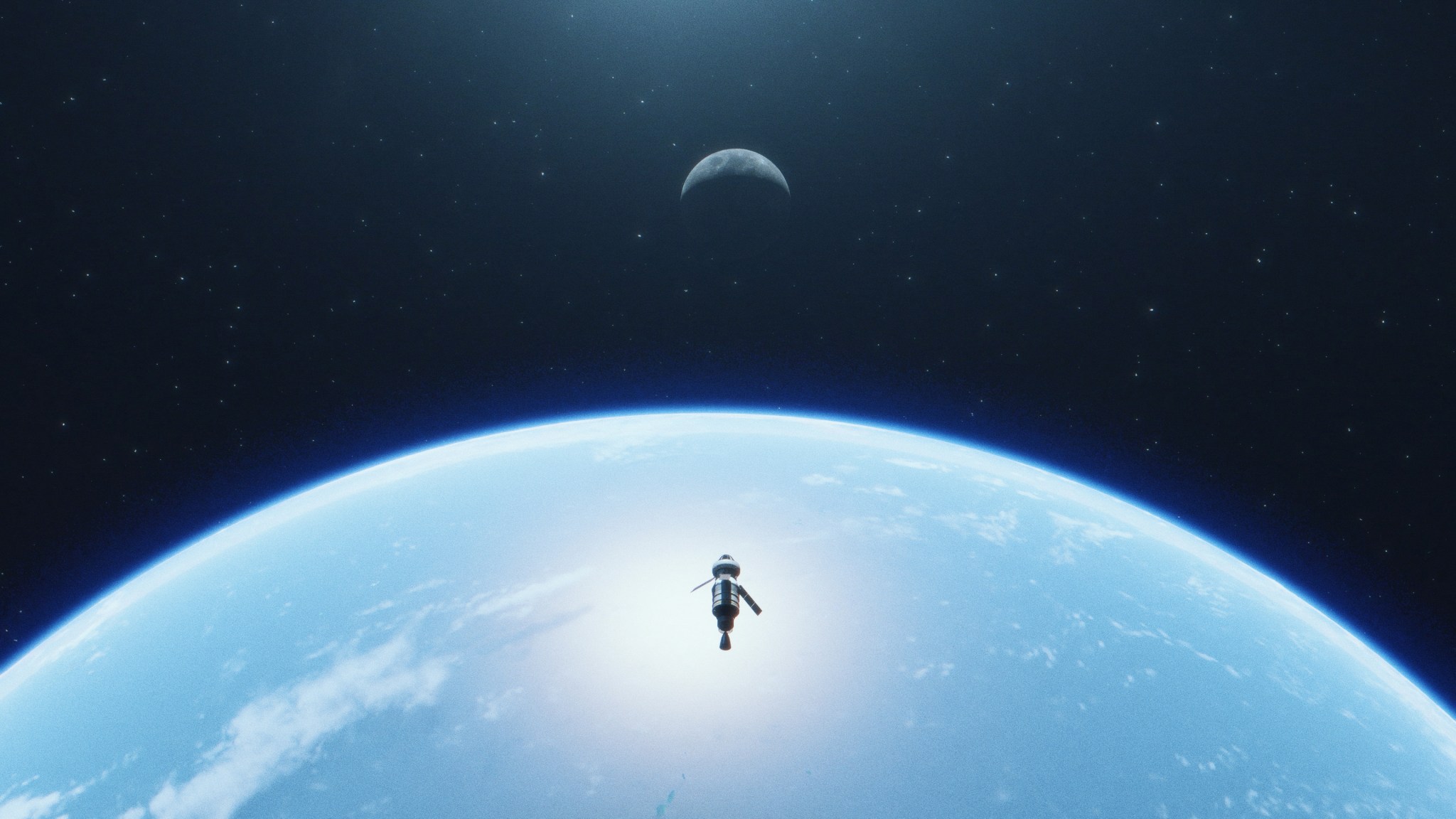
Since you’re headed to the Moon, here is your opportunity to check out images and content about the Moon and then create your own! Submit your #NASAMoonSnap and we will be featuring some entries during the launch broadcast or on NASA’s social media.
Artemis I will blast off from NASA’s spaceport at Kennedy Space Center and fly farther than any spacecraft built for humans has ever flown. Watch a preview of your flight to get the highlights of the mission.
You’ve got your papers sorted — now it’s time to put together your packing list ! Take a look at what others have decided they would pack for the Moon, including astronauts , NASA photographers , and other creative people like you !
Grab some reading materials. While you’re sure to get some incredible window views as the Orion spacecraft travels thousands of miles beyond the Moon, you’ll likely want some entertainment during the 4-6 week mission. If you’re looking for some reading material, check the First Woman graphic novel, the You Are Going children’s book, and the Moonikin webcomic .
And set a playlist. No trip is complete without a playlist! Check out the NASA Moon Tunes playlist put together by Third Rock Radio and compiled from over a million votes all around the world. And if podcasts are more your speed, check out this curated Artemis podcast playlist on Soundcloud.
You’ll be flying in comfort aboard Orion, the spacecraft that will take astronauts to the Moon on future Artemis missions. Among the science, research equipment, and mementos you’ll be travelling with are Commander Moonikin Campos, Helga, and Zohar. These human-bodied manikins are gathering important data for future missions— read their story here .
Following along at home? You can decorate the walls of your own ‘crew cabin’ with our beautiful travel destination posters :
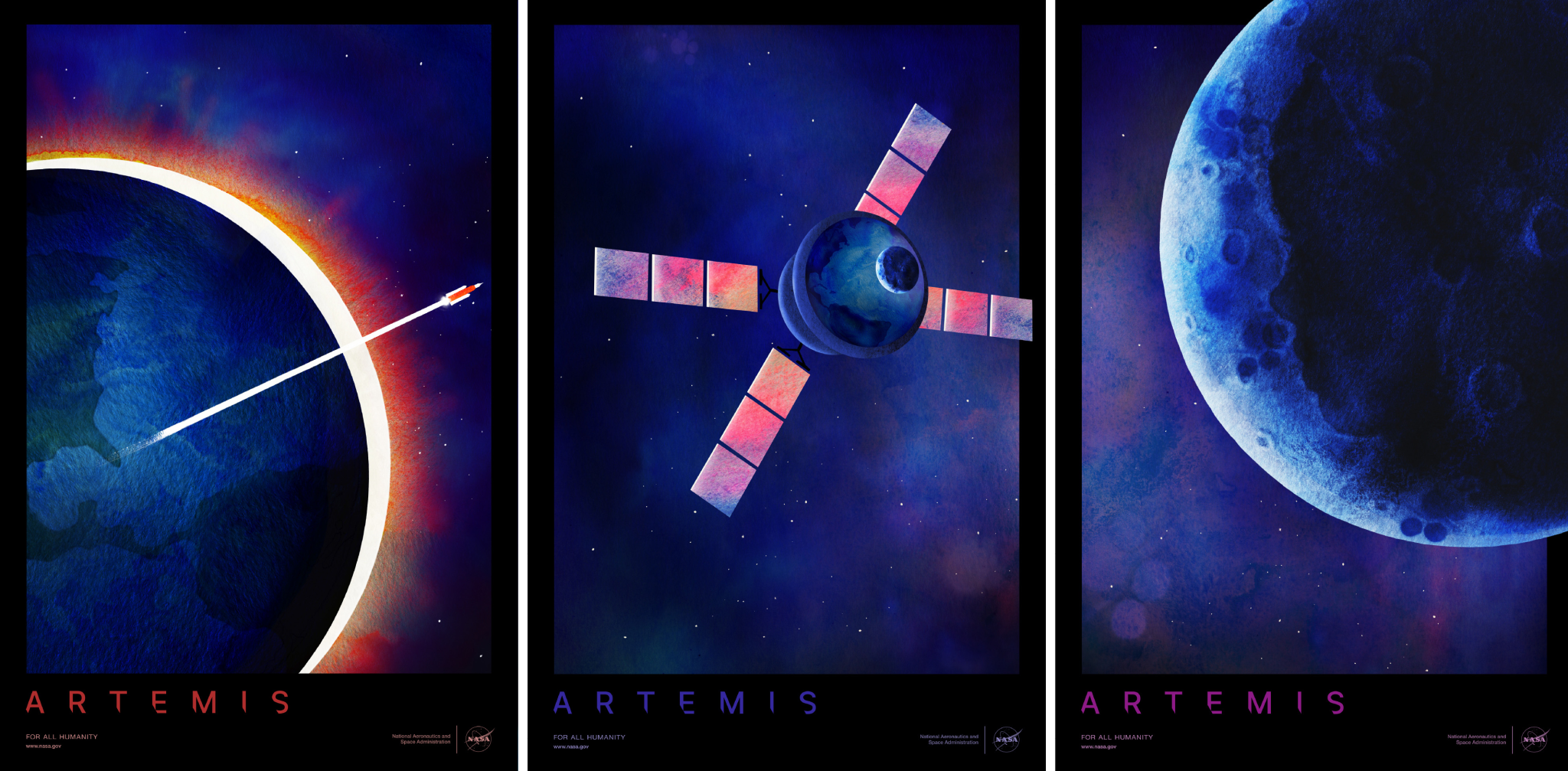
Download Artemis: Visionary (8.07 MB) | Download Artemis: Courageous (7.31 MB) | Download Artemis: Galvanizing (8.98 MB)
Before heading out, you’ll want to familiarize yourself with your route . That’s why we’ve put together a flight map with important milestones you’ll reach on your trip beyond the Moon and back.
Our travel itinerary will bring us within about 60 miles of the Moon’s surface—a prime opportunity for sightseeing. Learn more about your destination on our Moon site .
Can’t wait to see the SLS rocket on the launch pad? Picture it in your own backyard! Try out our Snapchat AR Lens: Backyard Rocket and see how the launch would appear from the mission control room at Kennedy Space Center.
And know where to track your flight . Once you’re on your way to join the Artemis I mission, you can follow along with telemetry updates and see exactly where Orion is every step of the journey.
However you choose to follow along our journey, we’re glad to have you with us. Be sure to follow @NASAArtemis on Facebook , Twitter , and Instagram , or subscribe to our newsletter to get the latest updates as we prepare for our next great era of discovery.
* DISCLAIMER: As much as we’d like to bring everyone aboard Orion for a flight around the Moon, Artemis I is an uncrewed mission. So please enjoy the next best thing: free and fun activities that you can participate in from the comfort of your own home.
Everything You Need to Know About Space Tourism Right Now
Your next travel splurge could be a flight to space
:max_bytes(150000):strip_icc():format(webp)/StefanieWaldek-38071ba574ea46c2ac94e15fa18dc581.jpg)
Virgin Galactic vehicle SpaceShipTwo on its first glide flight on October 10, 2010 over Mojave in California. (Virgin Galactic / Getty Images)
While 2020 has been an abysmal year on many counts, there’s one industry that’s thriving: space exploration. Within the first eight months of the year, we’ve seen the successful launches of three Mars missions, promising tests of new rockets, and the return of crewed spaceflight to U.S. soil—aboard a privately built spacecraft, no less! But we’re also getting much closer to the launch of the space tourism industry, meaning your dream of becoming an astronaut could become reality quite soon. We’re still a little ways away from regular flights into space for paying customers, but here are all the developments you need to know about.
The History of Space Tourism
Traveling to space has long been the domain of professional astronauts, not ordinary citizens. But that all changed when American entrepreneur Dennis Tito flew to space in 2001 with space tourism company Space Adventures, who organized the trip with Russian space agency Roscosmos. Tito was the first of only seven true “space tourists,” each of whom traveled to the International Space Station (ISS) via Roscosmos's Soyuz spacecraft for about a weeklong stay—or for two separate weeklong stays, in the case of one space traveler—for a reported cost between $20 million to $35 million per trip (plus months of training). The final space tourism excursion was made by Cirque du Soleil founder Guy Laliberté in 2009, after which Roscosmos had to end touristic flights: when NASA retired its space shuttle program in 2011, each seat on its Soyuz spacecraft needed to be reserved for crews heading to the ISS, not tourists. Since then, space tourism has been halted.
Nearly There: Blue Origin and Virgin Galactic
The issue with Space Adventure’s program is that it relies on other operators for transportation, which limits its access to space. But the next wave of private spaceflight companies have been developing their own vehicles to propel clients into weightlessness. The two frontrunners in the space tourism race are Jeff Bezos’s Blue Origin and Sir Richard Branson’s Virgin Galactic, both of which are in advanced testing phases—Virgin Galactic has even opened ticket sales already, with more than 600 passengers booked. While both aerospace companies will provide their clients with suborbital trips into space, they’ll do so in entirely different fashions.
Blue Origin
Blue Origin plans to send tourists to space in its New Shepard vehicle, named after the first American in space, Alan Shepard, from its launch site in West Texas. New Shepard, which is an entirely autonomous craft that doesn’t need a human pilot, is similar to Roscosmos’s Soyuz and SpaceX’s Crew Dragon vehicles in that its six passengers will be housed in a capsule and vertically launched into space via a rocket.
After a day of training, passengers will get to experience a launch just as professional astronauts do: they’ll feel the intense G-forces pressing down on them as the rocket shuttles them to an altitude of approximately 62 miles, which is widely accepted as the boundary of space. When the engines cut off, passengers will be weightless, and they’re free to float about the capsule, taking in the views of the planet and of the darkness of space through the capsule’s large windows. After a few minutes, the capsule will fall back to Earth under parachutes. All in, the trip lasts just 11 minutes—it’s a pretty short flight considering tickets will likely cost about $250,000.
Blue Origin has successfully launched New Shepard on 12 un-crewed test flights since 2015, but it’ll need to get humans up into space before it’ll be certified to start carrying paying customers. The company originally hoped to launch a crewed test flight in 2019; however, it still has not done so, nor has it announced a new timeline for the test.
Virgin Galactic
Virgin Galactic, on the other hand, will fly passengers to space aboard a winged vehicle called SpaceShipTwo , which bears similarities to NASA’s space shuttle. But whereas the shuttle launched vertically via a rocket, SpaceShipTwo is launched horizontally. The vehicle, which seats six passengers plus two pilots, takes off from a runway like a regular plane via its carrier aircraft called WhiteKnightTwo. Virgin Galactic currently launches from the Mojave Air and Space Port in California, but it will also launch from Spaceport America in New Mexico.
After takeoff, WhiteKnightTwo ascends to 50,000 feet, after which SpaceShipTwo is released, and its rocket-powered engines kick in to bring it all the way to a maximum altitude of roughly 68 miles. As with Blue Origin’s New Shepard, passengers will enjoy a few minutes of weightlessness before returning to Earth, but instead of a parachute landing, SpaceShipTwo will land on a runway like a plane—which is also how the space shuttle landed. Total run time: between two and three hours in flight, plus two-and-a-half days of training, with a price tag of $250,000.
Virgin Galactic has been conducting test flights since 2010, but progress has been a bit slow—and deadly. In 2014, a test pilot was killed after a SpaceShipTwo vehicle broke apart during a flight, primarily due to pilot error. Testing resumed in 2016 and is ongoing, with no official word on when commercial operations will begin.
Other Companies Dreaming Big
Of all the space tourism operations out there, Blue Origin and Virgin Galactic are by far the closest to launching passengers. (Elon Musk's SpaceX, which has already successfully launched NASA astronauts into space, is not focusing on tourism, though it will provide lifts for third-party companies.) But coming in hot on their heels is Boeing, whose Starliner vehicle is being developed for NASA's Commercial Crew Program; its contract, however, allows for tourists to potentially join flights.
The other viable space tourism companies on the horizon are not developing their own vehicles, rather, they plan on hitching rides with other providers. Space Adventures is still in the game, having entered a partnership with SpaceX to fly passengers on Crew Dragon as soon as next year. It’s also revived its tourism operations with Roscosmos: two tourists are booked on a trip to the ISS in 2023. Another company, Axiom Space, plans on taking passengers to the ISS via SpaceX’s Crew Dragon as soon as 2021, before launching its own private space station by the end of the decade. Similarly, Orion Span has announced its intentions to launch its Aurora Space Station in 2021, though construction on the project has yet to begin.
Virgin Galactic Debuts the Interior of Its SpaceShipTwo Space Plane
You Can Now Book Your Flight to Space
Hotels.com Wants to Be the First Booking Platform to List Hotels in Space
The Complete Guide to Disney's Star Wars: Galaxy’s Edge
The 15 Tallest Roller Coasters in the World Will Take You to New Heights
I Spent Two Nights Aboard Star Wars: Galactic Starcruiser—Here's What It Was Like
The 8 Best Luggage Sets of 2024, Tested and Reviewed
Moscow - Russian Rivers and Waterways Port of Call
NASA Johnson Space Center and Space Center Houston: The Complete Guide
What It’s Like to Fly Halfway Around the World During the Pandemic
10 Air and Space Museums to Visit in the USA
Is Thailand Ready to Reopen Its Borders to Tourists?
The 13 Best Day Trips From Miami
Puerto Rico Airports
Driving in Paris, France
What to Expect If You’re Going on a Cruise This Winter
Featured Topics
Featured series.
A series of random questions answered by Harvard experts.
Explore the Gazette
Read the latest.

Complex questions, innovative approaches

Early warning sign of extinction?

So much for summers of love
How to prepare for a trip to space.
Illustration by Oliver Burston/Ikon Images
Astronauts spend years training for missions. How do commercial travelers get ready?
Part of the wondering series.
The Medical School’s Aleksandra Stankovic is an aerospace psychologist and spaceflight biomedical researcher who studies how to optimize human performance and behavioral health in extreme operational environments. We asked her how a person gets ready to travel to space.
The spaceflight environment presents many challenges — technical, physical, and psychological. With more people having access to space travel today than ever before, successful and safe spaceflights require varying levels of preparation before launch day.
For government astronauts, candidates undergo a rigorous two-year initial training period before qualifying for flight assignment. This training includes learning about Space Station and flight vehicle systems, studying orbital mechanics, becoming proficient in emergency procedures (like how to handle scenarios such as fire, cabin depressurization, or medical issues), conducting flight training in T-38 jets (to build quick decision-making skills in high-performance aircraft), and developing Russian language skills (since international space missions involve collaboration among astronauts from various countries).
To prepare for the microgravity environment of space, astronauts also participate in simulations of weightlessness, including parabolic flights and training in the Neutral Buoyancy Lab, a large swimming pool where astronauts practice conducting spacewalks and learn to perform tasks in their pressurized spacesuits. Astronauts complete survival training and learn to cope with extreme conditions — a crucial skill in case of an emergency landing back on Earth in the water or in very cold locations like Siberia. They are trained to operate the robotic arm that is used for tasks such as capturing cargo spacecraft.
Once they receive a flight assignment, astronauts complete an additional 18 months of mission-specific training. They simulate various mission scenarios — including launch, rendezvous, and docking — and emergency procedures. Additionally, they undergo extensive training on the scientific experiments they’ll be conducting, like how to work with equipment, collect samples, and handle data.
Anyone who spends prolonged periods in space will need to spend a lot of their day working out to keep their bodies in strong shape to be healthy when they return home.
Since maintaining physical fitness is vital for astronauts to counteract the muscle and bone loss experienced in microgravity, they spend a lot of time preflight working out. At the same time, long-duration space missions can be mentally challenging, given the prolonged isolation, confinement, and separation from family and friends. Astronauts learn strategies to manage stress, maintain psychological well-being, and work effectively in close environments with their fellow crewmembers.
Commercial astronaut training is significantly less intensive than the training government-sponsored astronauts receive, since their missions are often of shorter duration and focus more on providing safe and enjoyable flying experiences. While commercial crews may stay in space for shorter intervals ranging from a few minutes for suborbital flight to several days or even weeks on the Space Station, government astronauts typically spend six months or more on the station. (Astronaut Frank Rubio recently set the record for longest American space mission with 371 consecutive days in space; cosmonaut Valeri Polyakov, who logged 437 continuous days in orbit on Russia’s Mir space station between 1994 and 1995, still holds the world record.)
Commercial astronauts often receive more generalized training that covers the basics of space travel and safety/emergency procedures. Anyone who spends prolonged periods in space will need to spend a lot of their day working out to keep their bodies in strong shape to be healthy when they return home. Everyday activities can be challenging without gravity, and sleeping can be difficult without the normal light cues from the sun that our bodies rely upon on Earth to regulate our circadian rhythms. A combination of technology and training help space travelers adapt.
As more people travel to space, on an expanding range of flight vehicles and for varying types of missions, spaceflight preparation too will undoubtedly continue to evolve. It’s an exciting time to be studying how to keep humans safe and healthy in space, and researchers like me are thrilled to be a part of enabling this next great wave of human space exploration!
— As told to Anna Lamb/Harvard Staff Writer
Share this article
Also in this series:.

How old is too old to run?
No such thing, specialist says — but when your body is trying to tell you something, listen

The 20-minute workout
Pressed for time? You still have plenty of options.

How to deliver very bad news
It’s hard to be a doctor. This is when it’s really hard.

Is organic better?
Not if you follow the evidence, researcher says

Next spat with your partner, try silence
If you’re doing all the talking, then you’re probably doing it wrong, says negotiation expert.

How to judge a painting
Do: Ask questions and keep an open mind. Don’t: Say your child could’ve made that.

Can you be close without sex?
Healthy intimate relationships vary but share one key feature, says psychologist

How to write funny
For Cora Frazier, it usually starts with deep sadness

Faster, fitter?
Not really, says Spaulding Rehab expert. When you go for a walk, focus on this instead.

Nothing that is not there and the nothing that is
You’ll never experience a black hole, but Avi Loeb can help you imagine one

Is cycling safe?
We shouldn’t take no for an answer, researcher says

The language of dreams
Proficiency, place, emotion, or something else? These late-night conversations defy easy explanation.
You might like
Seven projects awarded Star-Friedman Challenge grants

Fossil record stretching millions of years shows tiny ocean creatures on the move before Earth heats up

Despite ‘hippie’ reputation, male bonobos fight three times as often as chimps, study finds
When math is the dream
Dora Woodruff was drawn to beauty of numbers as child. Next up: Ph.D. at MIT.
Seem like Lyme disease risk is getting worse? It is.
The risk of Lyme disease has increased due to climate change and warmer temperature. A rheumatologist offers advice on how to best avoid ticks while going outdoors.
Three will receive 2024 Harvard Medal
In recognition of their extraordinary service
Want to be a space tourist? Here are 6 things to consider first

The industry of space tourism could exist in the future. Image: Unsplash/NASA
.chakra .wef-1c7l3mo{-webkit-transition:all 0.15s ease-out;transition:all 0.15s ease-out;cursor:pointer;-webkit-text-decoration:none;text-decoration:none;outline:none;color:inherit;}.chakra .wef-1c7l3mo:hover,.chakra .wef-1c7l3mo[data-hover]{-webkit-text-decoration:underline;text-decoration:underline;}.chakra .wef-1c7l3mo:focus,.chakra .wef-1c7l3mo[data-focus]{box-shadow:0 0 0 3px rgba(168,203,251,0.5);} Steven Freeland

.chakra .wef-9dduvl{margin-top:16px;margin-bottom:16px;line-height:1.388;font-size:1.25rem;}@media screen and (min-width:56.5rem){.chakra .wef-9dduvl{font-size:1.125rem;}} Explore and monitor how .chakra .wef-15eoq1r{margin-top:16px;margin-bottom:16px;line-height:1.388;font-size:1.25rem;color:#F7DB5E;}@media screen and (min-width:56.5rem){.chakra .wef-15eoq1r{font-size:1.125rem;}} Space is affecting economies, industries and global issues

.chakra .wef-1nk5u5d{margin-top:16px;margin-bottom:16px;line-height:1.388;color:#2846F8;font-size:1.25rem;}@media screen and (min-width:56.5rem){.chakra .wef-1nk5u5d{font-size:1.125rem;}} Get involved with our crowdsourced digital platform to deliver impact at scale
Stay up to date:.
- In July 2021, entrepreneur Sir Richard Branson and Amazon founder Jeff Bezos went up into space, accompanied by fellow passengers.
- These trips created vast amounts of media coverage and brand recognition for Branson’s Virgin Galactic and Bezos’ Blue Origin.
- This could indicate that a commercial space tourism industry is on the horizon.
- Before space trips become commercially available, important factors such as environmental and safety laws need to be considered.
It’s been a momentous month for space-faring billionaires. On July 11, British entrepreneur Sir Richard Branson’s Unity “rocket-plane” flew him and five fellow passengers about 85 kilometres above Earth. And this week, Amazon founder Jeff Bezos’ New Shepard capsule reached an altitude of 106km , carrying Bezos, his brother, and the oldest and youngest people ever to reach such a height. Passengers on both flights experienced several minutes of weightlessness and took in breathtaking views of our beautiful and fragile Earth.
Both flights created an avalanche of media coverage and brand recognition for Branson’s Virgin Galactic and Bezos’s Blue Origin. There is renewed anticipation of a lucrative commercial space tourism industry that could eventually see thousands of paying passengers journey into space (or not quite into space, depending on your preferred level of pedantry).
This year marks 60 years since Soviet cosmonaut Yuri Gagarin became the first human in space. Since then, almost 600 trained astronauts have gone into outer space, but very few people have become space tourists.
The first, US engineer Dennis Tito, paid a reported US$20 million to spend six days orbiting Earth in the Russian section of the International Space Station in April 2001, after three months’ training at Russia’s Star City complex. He was followed by a handful of other very wealthy “orbital tourists”, most recently Cirque de Soleil founder Guy Laliberté in 2009, whose ticket reportedly cost US$35 million.
Unlike their predecessors, Branson’s and Bezos’ flights were suborbital – they didn’t reach the velocity needed to orbit Earth. Bezos’s entire flight lasted just over 10 minutes. Suborbital flights are much less technically complex, and in theory cheaper (although one seat on the New Shepard flight was auctioned for US$28 million ).

While they might quibble over billionaire bragging rights, there’s no denying that suborbital “space” flights have the potential to be less eye-wateringly expensive than going into orbital outer space and beyond.
But before you sign up – assuming you’re lucky enough to afford it – here are a few things to consider.
Where does space start, anyway?
Have you read, how many space launches does it take to have a serious climate impact, from space squid to saliva: what's inside nasa's cargo missions and why, the big space clean-up - and why it matters.
Despite assertions to the contrary , there is no legal definition of “outer space”, and thus no official boundary where airspace ends and outer space begins. In the past, the International Aeronautical Federation has looked to the von Karman line , but this does not coincide with the boundary of any of the atmosphere’s scientifically defined layers, and the UN Committee on the Peaceful Uses of Outer Space , which deals with such issues, has not yet resolved the question.
Conveniently for Branson, 80km has been proposed by some experts as an appropriate boundary.
Outer space is undeniably influenced by Earthly geopolitics. Essentially, the larger space-faring countries see no need to legally define a boundary that would clearly demarcate the upper limits of their sovereignty.
Will you be an ‘astronaut’?
The 1967 UN Outer Space Treaty designates astronauts as “envoys of (hu)mankind in outer space”. Certainly, that seemed to be the case as the world watched the historic Apollo 11 Moon landing and prayed for a safe return of the stricken Apollo 13 capsule. However, the 1968 UN Rescue Agreement refers to “personnel of a spacecraft”, which may imply not everyone on board should be considered a fully fledged astronaut.
Of course, these legal niceties won’t deter space tourism companies from awarding “astronaut wings” to their passengers.

What laws apply when things go wrong?
The 1986 Challenger and 2003 Columbia shuttle disasters are stark reminders of the dangers of space travel. Human space travel has always involved determining acceptable levels of risk for trained astronauts. But commercial space tourism is different to state-sponsored space programs, and will need the highest possible safety standards.
Commercial space travel will also require a system of responsibility and liability, for cases in which a space tourist suffers injury, loss or damage.
Space tourists (or their families) can’t claim for compensation under the 1972 UN Liability Convention which, in terms of space, applies only to collisions between space objects such as satellites and space debris. While there may be scope to take legal action under national laws, it is likely space tourists will be asked to sign carefully worded waivers of liability.
The same is probably true of international air law , which applies to “aircraft” — a designation space tourism operators will understandably be keen to avoid.
Ultimately, we may need to develop a system of “aerospace law” to govern these suborbital flights as well as “transorbital” transport such as the keenly envisaged flights that might one day take passengers from Sydney to London in just a few hours.
What activities should be allowed in space?
The advent of space tourism will give rise to some interesting ethical questions. Should there be advertising billboards in space? What about casinos, or brothels? On what legal basis should these things be restricted?
How does tourism fit with the underlying philosophy of space law: that the exploration and use of outer space “shall be carried out for the benefit and in the interests of all countries”?
Will space tourism harm the environment?
Space tourism will inevitably put pressure on Earth’s environment – there are claims that space vehicles may one day become the world’s biggest source of carbon dioxide emissions. We will need to manage space traffic carefully to avoid disastrous collisions and steer clear of space debris .
If tourists go to the Moon, they may cause pollution or damage the heritage of earlier exploration, such as Neil Armstrong’s footprints .

Will tourism workers have to live in space?
If space tourism does become truly widespread, it will need infrastructure and perhaps even staff. People may end up living permanently in space settlements, perhaps having children who will be born as “space citizens”. What legal rights would someone have if they were born at a Moon base? Would they be subject to terrestrial laws, or some version of current international legal rules for outer space?
The World Economic Forum was the first to draw the world’s attention to the Fourth Industrial Revolution, the current period of unprecedented change driven by rapid technological advances. Policies, norms and regulations have not been able to keep up with the pace of innovation, creating a growing need to fill this gap.
The Forum established the Centre for the Fourth Industrial Revolution Network in 2017 to ensure that new and emerging technologies will help—not harm—humanity in the future. Headquartered in San Francisco, the network launched centres in China, India and Japan in 2018 and is rapidly establishing locally-run Affiliate Centres in many countries around the world.
The global network is working closely with partners from government, business, academia and civil society to co-design and pilot agile frameworks for governing new and emerging technologies, including artificial intelligence (AI) , autonomous vehicles , blockchain , data policy , digital trade , drones , internet of things (IoT) , precision medicine and environmental innovations .
Learn more about the groundbreaking work that the Centre for the Fourth Industrial Revolution Network is doing to prepare us for the future.
Want to help us shape the Fourth Industrial Revolution? Contact us to find out how you can become a member or partner.
These are obviously questions for the future. But given the excitement generated by the brief journeys of a couple of wealthy entrepreneurs, we should start contemplating them now. Outer space is the new frontier, but it is not — and must not — be a lawless one.
Don't miss any update on this topic
Create a free account and access your personalized content collection with our latest publications and analyses.
License and Republishing
World Economic Forum articles may be republished in accordance with the Creative Commons Attribution-NonCommercial-NoDerivatives 4.0 International Public License, and in accordance with our Terms of Use.
The views expressed in this article are those of the author alone and not the World Economic Forum.
The Agenda .chakra .wef-n7bacu{margin-top:16px;margin-bottom:16px;line-height:1.388;font-weight:400;} Weekly
A weekly update of the most important issues driving the global agenda
- Share full article
Advertisement
Supported by
student opinion
Do You Think You Will Ever Travel to Space?
A SpaceX rocket launched the first all-civilian crew into orbit. Do you think spaceflight will one day become as ordinary as air travel?

By Jeremy Engle
There’s a new space race!
This time it’s not a race to the moon, but to see who will dominate a future space tourism industry. It’s a competition not between nations (as it was in the 1950s and ’60s) but largely between billionaire entrepreneurs and private spaceflight companies.
This summer, the Amazon founder Jeff Bezos and the British entrepreneur Richard Branson both flew to space in rockets designed by their companies, Blue Origin and Virgin Galactic — although each flight was less than 11 minutes.
Then, on Sept. 15, a rocket launched by SpaceX, the company founded by the billionaire Elon Musk, carried the first all-civilian crew on an adventure to orbit the Earth for three days.
Have you been following the recent spaceflights? Are you excited by renewed interest in space travel? Is the new era of space exploration good for humanity? Do you think spaceflight will one day become as ordinary as air travel?
In “ SpaceX Launches Astronaut Crew Like No Other on Orbital Adventure ,” Kenneth Chang writes about the historic all-civilian flight:
KENNEDY SPACE CENTER, Fla. — A SpaceX rocket lifted off on Wednesday night from a launchpad here, carrying four Americans on an adventure to orbit the Earth for three days that will be like no other. None of the crew works for NASA. The mission, known as Inspiration4 , is the first orbital trip where not one of the people aboard is a professional astronaut and where government is, by and large, a bystander and observer. The evening sky was nearly devoid of clouds when the nine engines of the Falcon 9 rocket ignited, lifting the rocket and its passengers to space. Jared Isaacman, a 38-year-old billionaire and founder of Shift4, a payments processing service, financed the trip. As the mission’s commander, he thanked those who made it possible, and said that it had brought him and the crew, to the “door step of an exciting and unexplored frontier.” Mr. Isaacman’s public profile is far less prominent than that of Richard Branson or Jeff Bezos, two billionaires who flew to the edge of space in July in vehicles operated by companies they own. Those trips lasted just minutes before returning to the ground. But Mr. Isaacman’s three-day adventure is perhaps more noteworthy, a step toward a future where space travel might be like airline travel today — accessible by almost everyone. That is because Mr. Isaacman decided not to just bring along his friends on this trip to space. Instead, he opened opportunities to three people he did not know. “We set out from the start to deliver a very inspiring message,” Mr. Isaacman said during a news conference on Tuesday, “and chose to do that through an interesting crew selection process.” The result is a mission that carries a crew that is more representative of wider society — Hayley Arceneaux, a 29-year-old physician assistant at St. Jude Children’s Research Hospital in Memphis; Sian Proctor, a 51-year-old community college professor who would be the first Black woman to pilot a spacecraft; and Christopher Sembroski, a 42-year-old data engineer. Mr. Isaacman has declined to say how much he is paying for this orbital trip, only that it was less than the $200 million that he hopes to raise for St. Jude with an accompanying fund-raising drive, one of the stated purposes of the trip.
Students, read the entire article , then tell us:
What’s your reaction to the recent spaceflights? If you could have flown on the Inspiration4 mission, what would thrill you the most about the ride? Making history? Experiencing weightlessness? Viewing Earth from orbit? Something else?
Mr. Chang writes that the Inspiration4 mission is “a step toward a future where space travel might be like airline travel today — accessible by almost everyone.” What do you think the success of the recent flights means for the future of space travel? Do you think you will travel to space during your lifetime?
Are you fascinated by space — the moon, the stars and other celestial bodies? If not, why do you think so many others are captivated by the cosmos and its mysteries? Have you ever dreamed of becoming an astronaut or working for NASA?
If you had an opportunity to go anywhere in space, where would you visit? The moon? Mars? Another planet? Or even beyond our solar system? Why? If you don’t want to journey to outer space, where would you prefer to go instead?
Make some predictions: Will humans ever live in space? If so, by what year? Do you think that you ever will?
Want to explore space further? You can learn more about the old and new space race in our related Lesson of the Day .
Want more writing prompts? You can find all of our questions in our Student Opinion column . Teachers, check out this guide to learn how you can incorporate them into your classroom.
Students 13 and older in the United States and Britain, and 16 and older elsewhere, are invited to comment. All comments are moderated by the Learning Network staff, but please keep in mind that once your comment is accepted, it will be made public.
Jeremy Engle joined The Learning Network as a staff editor in 2018 after spending more than 20 years as a classroom humanities and documentary-making teacher, professional developer and curriculum designer working with students and teachers across the country. More about Jeremy Engle
Space Tourism: Can A Civilian Go To Space?

2021 has been a busy year for private space tourism: overall, more than 15 civilians took a trip to space during this year. In this article, you will learn more about the space tourism industry, its history, and the companies that are most likely to make you a space tourist.
What is space tourism?
Brief history of space tourism, space tourism companies, orbital and suborbital space flights, how much does it cost for a person to go to space, is space tourism worth it, can i become a space tourist, why is space tourism bad for the environment.
Space tourism is human space travel for recreational or leisure purposes . It’s divided into different types, including orbital, suborbital, and lunar space tourism.
However, there are broader definitions for space tourism. According to the Space Tourism Guide , space tourism is a commercial activity related to space that includes going to space as a tourist, watching a rocket launch, going stargazing, or traveling to a space-focused destination.
The first space tourist was Dennis Tito, an American multimillionaire, who spent nearly eight days onboard the International Space Station in April 2001. This trip cost him $20 million and made Tito the first private citizen who purchased his space ticket. Over the next eight years, six more private citizens followed Tito to the International Space Station to become space tourists.
As space tourism became a real thing, dozens of companies entered this industry hoping to capitalize on renewed public interest in space, including Blue Origin in 2000 and Virgin Galactic in 2004. In the 2000s, space tourists were limited to launches aboard Russian Soyuz aircraft and only could go to the ISS. However, everything changed when the other players started to grow up on the market. There are now a variety of destinations and companies for travels to space.
There are now six major space companies that are arranging or planning to arrange touristic flights to space:
- Virgin Galactic;
- Blue Origin;
- Axiom Space;
- Space Perspective.
While the first two are focused on suborbital flights, Axiom and Boeing are working on orbital missions. SpaceX, in its turn, is prioritizing lunar tourism in the future. For now, Elon Musk’s company has allowed its Crew Dragon spacecraft to be chartered for orbital flights, as it happened with the Inspiration4 3-day mission . Space Perspective is developing a different balloon-based system to carry customers to the stratosphere and is planning to start its commercial flights in 2024.
Orbital and suborbital flights are very different. Taking an orbital flight means staying in orbit; in other words, going around the planet continually at a very high speed to not fall back to the Earth. Such a trip takes several days, even a week or more. A suborbital flight in its turn is more like a space hop — you blast off, make a huge arc, and eventually fall back to the Earth, never making it into orbit. A flight duration, in this case, ranges from 2 to 3 hours.
Here is an example: a spaceflight takes you to an altitude of 100 km above the Earth. To enter into orbit — make an orbital flight — you would have to gain a speed of about 28,000 km per hour (17,400 mph) or more. But to reach the given altitude and fall back to the Earth — make a suborbital flight — you would have to fly at only 6,000 km per hour (3,700 mph). This flight takes less energy, less fuel; therefore, it is less expensive.
- Virgin Galactic: $250,000 for a 2-hour suborbital flight at an altitude of 80 km;
- Blue Origin: approximately $300,000 for 12 minutes suborbital flight at an altitude of 100 km;
- Axiom Space: $55 million for a 10-day orbital flight;
- Space Perspective: $125,000 for a 6-hour flight to the edge of space (32 km above the Earth).
The price depends, but remember that suborbital space flights are always cheaper.
What exactly do you expect from a journey to space? Besides the awesome impressions, here is what you can experience during such a trip:
- Weightlessness . Keep in mind that during a suborbital flight you’ll get only a couple of minutes in weightlessness, but it will be truly fascinating .
- Space sickness . The symptoms include cold sweating, malaise, loss of appetite, nausea, fatigue, and vomiting. Even experienced astronauts are not immune from it!
- G-force . 1G is the acceleration we feel due to the force of gravity; a usual g-force astronauts experience during a rocket launch is around 3gs. To understand how a g-force influences people , watch this video.
For now, the most significant barrier for space tourism is price. But air travel was also once expensive; a one-way ticket cost more than half the price of a new car . Most likely, the price for space travel will reduce overtime as well. For now, you need to be either quite wealthy or win in a competition, as did Sian Proctor, a member of Inspiration4 mission . But before spending thousands of dollars on space travel, here is one more fact you might want to consider.
Rocket launches are harmful to the environment in general. During the burning of rocket fuels, rocket engines release harmful gases and soot particles (also known as black carbon) into the upper atmosphere, resulting in ozone depletion. Think about this: in 2018 black-carbon-producing rockets emitted about the same amount of black carbon as the global aviation industry emits annually.
However, not all space companies use black carbon for fuel. Blue Origin’s New Shepard rocket has a liquid hydrogen-fuelled engine: hydrogen doesn’t emit carbon but simply turns into water vapor when burning.
The main reason why space tourism could be harmful to the environment is its potential popularity. With the rising amount of rocket launches the carbon footprint will only increase — Virgin Galactic alone aims to launch 400 of these flights annually. Meanwhile, the soot released by 1,000 space tourism flights could warm Antarctica by nearly 1°C !
Would you want to become a space tourist? Let us know your opinion on social media and share the article with your friends, if you enjoyed it! Also, the Best Mobile App Awards 2021 is going on right now, and we would very much appreciate it if you would vote for our Sky Tonight app . Simply tap "Vote for this app" in the upper part of the screen. No registration is required!
We have completed maintenance on Astronomy.com and action may be required on your account. Learn More

- Login/Register
- Solar System
- Exotic Objects
- Upcoming Events
- Deep-Sky Objects
- Observing Basics
- Telescopes and Equipment
- Astrophotography
- Space Exploration
- Human Spaceflight
- Robotic Spaceflight
- The Magazine
Six ways to buy a ticket to space in 2021
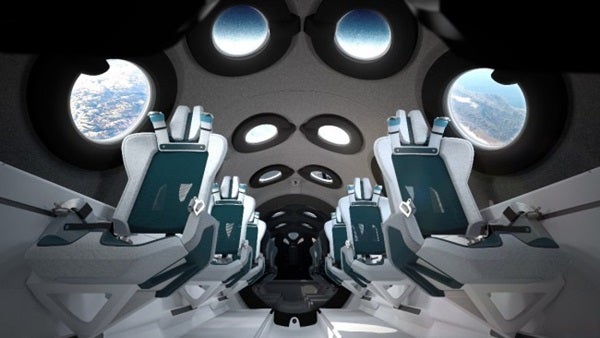
Earlier this month, SpaceX’s Crew Dragon capsule safely ferried NASA astronauts Doug Hurley and Robert Behnken back to Earth following a multi-month trip to the International Space Station (ISS). No privately built spacecraft had ever carried humans into orbit before. But unlike SpaceShipOne, which was a single craft built specifically to win a prize, there are multiple models of the Crew Dragon, each designed to be reused.
It’s finally looking like the exciting era of space tourism is about to erupt. A handful of so-called “new space” companies are now competing to sell space tourists trips on private spacecraft. Each one has a slightly different means of reaching space, and not all of them will get you all the way into orbit. But as long as you’re rich, you should have no problem purchasing your ticket to space.
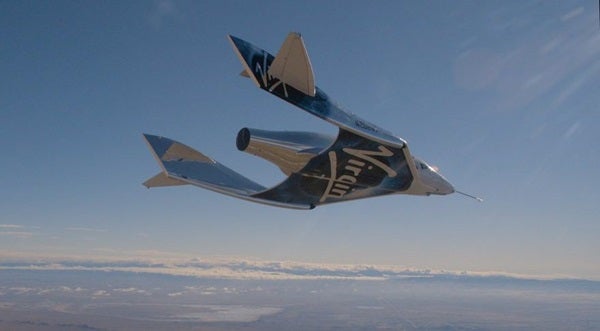
Virgin Galactic
SpaceShipOne was retired after just three successful spaceflights, but the technology lives on in Virgin Galactic’s Spaceship Unity . Like its predecessor, Virgin Galactic’s rocketplane drops from a specially engineered aircraft before boosting itself to 50 miles (80 kilometers) in altitude. That’s high enough for Virgin Galactic’s pilots to earn their astronaut badges. However, others define space via the so-called Kármán line, the generally accepted boundary between Earth’s atmosphere and space that sits 62 miles (100 kilometers) above our planet’s surface.
Virgin Galactic’s goal is to become “the world’s first commercial spaceline,” and eventually they’ll offer regular flights from Spaceport America in southern New Mexico. The company is planning to begin regular flights in early 2021, with CEO Richard Branson slated as the first non-professional pilot to travel on Spaceship Unity .
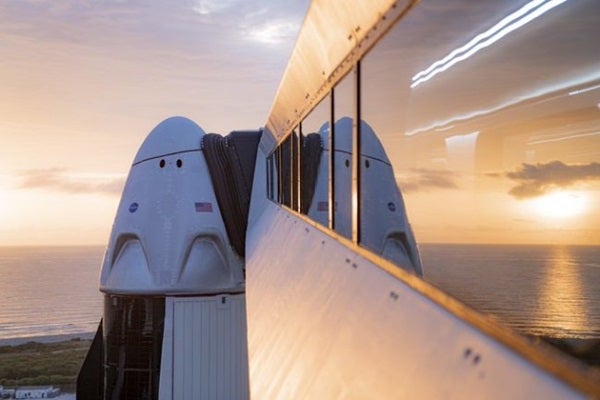
SpaceX is the only private rocket company to ever send a human into orbit. They’re also the only company now NASA-certified to send people to circle Earth. So, when will SpaceX start selling tickets to private citizens for trips to space? In the past, Elon Musk has said that the spacecraft could have a bright future carrying private passengers into orbit. And SpaceX recently announced that it has already sold seats on future Crew Dragon flights through other companies that are handling the logistics.
Ultimately though, Musk’s goal is to settle Mars. And to do that, he needs a bigger spacecraft. That’s why SpaceX’s engineers are working feverishly on its Starship, which is still under development. If the enormous spaceship works, it could literally rocket dozens of space tourists at a time between a number of destinations on Earth, or perhaps throughout the inner solar system. The company says that Starship would be able to travel between any two locations on Earth in less than one hour.
SpaceX is confident enough in their vessel that they already sold a Starship flight around the Moon to Japanese billionaire Yusaku Maezawa. No human has traveled to the Moon in nearly 50 years, and Maezawa, a fashion designer and online clothing retailer, has said he’ll take a group of artists with him.
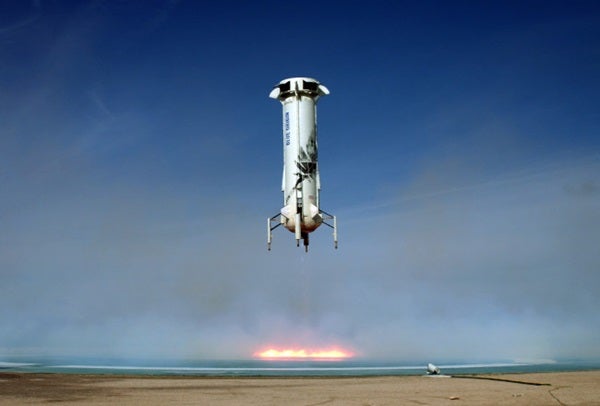
Blue Origin
Jeff Bezos started his rocket company, Blue Origin, back in 2000. And he’s been selling Amazon stock to pump billions of dollars into the effort ever since. Like SpaceX, they’re prioritizing reusable rockets and spacecraft that can drastically reduce the cost associated with spaceflight.
Much of Blue Origin’s effort has gone into developing a pair of rockets: New Shepard and New Glenn.
New Shepard can carry six people inside a suborbital capsule some 60 miles (100 km) into space. Blue Origin has already flown a dozen test flights, and they’re still planning several additional tests before launching passengers. However, in March, Axios reported that Blue Origin could send passengers into space in 2020, though COVID-19 has caused delays across the space industry. If the company can still get its space capsule tested in 2020, it could be on course for paid flights in 2021.
Meanwhile, Blue Origin has announced that it will soon start selling tickets. The company’s website doesn’t list the price of a Blue Origin trip, but Bezos has previously said their space tourists can expect to pay hundreds of thousands of dollars to fly in its New Shepard capsule.
The company is also working hard on their New Glenn rocket, a heavy-lift, reusable launch vehicle that Blue Origin has already invested more than $2.5 billion into developing. It’s larger than SpaceX’s Falcon Heavy rocket, but smaller than the rocket planned with Starship. That size could eventually enable regular passenger trips into orbit and even beyond. The company will need that capacity, too. Blue Origin’s goal is to one day have millions of people living and working in space.
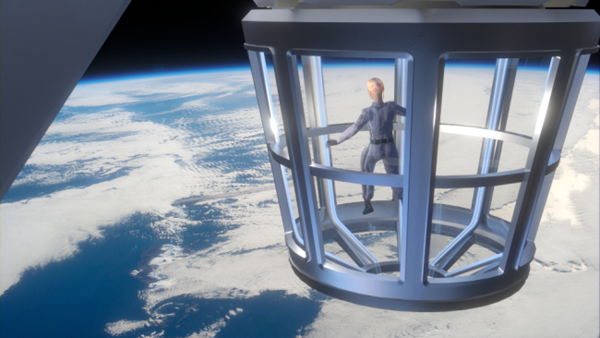
Axiom Space’s goal is to create the world’s first commercial space station. In the meantime, they’ve inked a deal to send a crew of private citizens to the ISS aboard SpaceX’s Crew Dragon capsule in October 2021.
Axiom’s initial crewed mission, dubbed Ax1, should send three paying astronauts to the ISS. Each ticket reportedly costs $55 million. And while it might seem like there’s a small pool of potential ticket buyers at that rate, in the U.S. alone, roughly 75,000 American households have that much money. Axiom also figures it’s just getting started selling tickets to space. In the near future, the company says it will send three crews a year to the ISS.
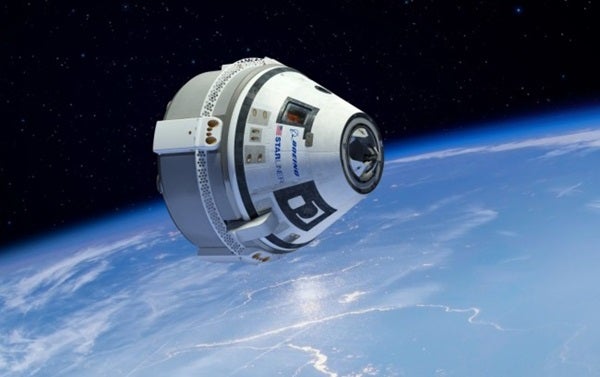
Back in 2014, NASA selected two companies — SpaceX and Boeing — to receive multibillion-dollar contracts to build spacecraft that could ferry astronauts to the ISS. SpaceX made good on the first crewed flight of its Commercial Crew Program contract earlier this year. Meanwhile, Boeing has yet to get its Starliner spacecraft safely to the ISS and back. Their first test flight reached orbit but failed to make the space station, and a NASA review outlined numerous necessary fixes.
Boeing will attempt another uncrewed test flight next year. And if all goes well, they could fly to the ISS by late 2021.
But once Boeing is flying to and from the ISS, the iconic aerospace company is also technically allowed to fly private passengers to the space station. They’ve been quiet on this option, but NASA has said they’d accommodate passengers at a rate of $35,000 per night.
Boeing has also hired a corporate test pilot astronaut, Christopher Ferguson. He’s been training alongside NASA’s astronauts and will be among the first to fly on Starliner. He might not count as a space tourist, but Ferguson will ultimately be part of an entirely new group of professional astronauts that work for private companies, not national space agencies.
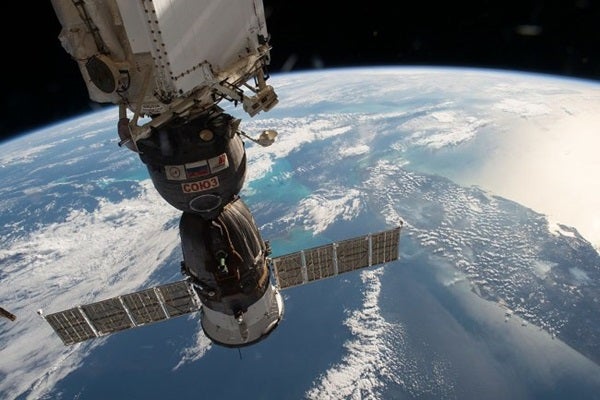
Space Adventures
Space Adventures is an American company that offers private spaceflights to the ISS and, eventually, the moon. Since their founding in 1998, the company has sold a number of other spaceflight related experiences, like simulated zero-gravity airplane flights. And unlike their competitors, Space Adventures has sent space tourists into orbit, too. They’ve been responsible for over half a dozen paid trips to the ISS that made use of Russian spacecraft.
Most recently, they booked a launch to the space station on Russia’s veteran Soyuz spacecraft, which is set for December 2021. The mission, dubbed Soyuz MS-20, will fly with a lone cosmonaut and two Space Adventures tourists.
Space Adventures has arranged another path to get paying customers into space, too. They recently announced a deal with SpaceX that will put four space tourists in a SpaceX capsule and send them into orbit around Earth. How much will it cost? For now, both companies are keeping the cost of these tickets private. But those who do make the trip should get an excellent show. The mission will orbit at several times the height of the ISS.
Unfortunately, few of us have enough disposable income to fund a trip beyond Earth’s atmosphere. But with at least a half dozen ways for the wealthy to purchase a ticket into space next year, the hope is that the cost will continue to decline. And if that happens, you might be closer than you think to regularly having your rocket pass checked by the TSA.

Meet Katya Echazarreta, the first Mexican-born woman to travel to space

A metal chunk that burst through a Florida home came from the ISS

The search is on for extraterrestrial life on worlds like Enceladus

The clever prince Ulugh Beg built — and used — an ingenious observatory in the 15th century

An updated list of space missions: Current and upcoming voyages

The largest digital camera ever made for astronomy is done

NASA seeks faster, cheaper options to return Mars samples to Earth

NASA bids farewell to the Ingenuity Mars Helicopter with new photos

These are the clever messages headed to Jupiter aboard NASA’s Europa Clipper
clock This article was published more than 1 year ago
How to travel to space, Earth’s hottest new destination
Go boldly, but pack lightly.
The space just above our planet is booming . Off-world trips are rapidly increasing: 42 of the 51 commercial astronauts recognized by the Federal Aviation Administration left Earth within the past two years.
The FAA predicts their ranks will balloon in the next decade — which may also bring new destinations, such as a rotating space hotel whose construction, planners claim, will begin in 2026 — and some experts have expressed optimism that relatively affordable space travel could be possible by the middle of this century.
For now, though, costs remain enormous. A $450,000 ticket reserves a spot on Virgin Galactic’s space plane, which flies 50 miles above Earth — six times a passenger plane’s cruising altitude. Expect to pay even more to go higher. Blue Origin’s 11-minute journey by rocket, which reportedly cost more than $1 million, shoots above the 62-miles-high Kármán line, the generally agreed-upon boundary between Earth and space. Others spend days in space. In September 2021, four civilian Americans orbited for three days aboard a SpaceX Dragon capsule. No word on how much it cost them.
For $55 million , Axiom Space will send astronauts via a SpaceX rocket to the International Space Station, a laboratory that circles Earth once every 90 minutes. For two weeks last April, the ISS’s first Axiom crew members worked in the lab while forgoing proper showers.
The New Space Age
Space “ought to be on everybody’s bucket list,” said former NASA astronaut Michael López-Alegría , the Axiom Space vice president who commanded the April mission. “We’d be the first to admit that it’s not quite democratic yet, because it’s still pretty expensive, but we’ll get there.” The Houston-based company has already begun to build a segment of what will be a private space station.
Here’s how to pack and prep for Earth’s hottest new destination.
Getting ready
Training takes days to months. Axiom Space crew members spent at least 700 hours learning new tasks: how to run experiments, dock a transport vehicle to the ISS and respond to fires.
They also practiced on a centrifuge, the rapidly spinning machine that simulates the extreme acceleration of space travel. You don’t need to be in tiptop shape — floating in microgravity is effortless, López-Alegría said — but you will have to endure intense G-force as you exit and reenter the atmosphere.
You should be mentally prepared for a unique psychological experience called the overview effect , which occurs when people witness their home planet from above. “When we came back to Earth, I could not stop crying,” said aerospace PhD student Sara Sabry, founder of the Deep Space Initiative , who traveled to space last August via Blue Origin (whose founder, Jeff Bezos, owns The Washington Post).
Aboard SpaceX, you’ll wear spacesuits: sleek, pressurized white outfits with black-visored helmets. On Virgin Galactic and Blue Origin flights, the fit is closer to a jet pilot’s, with gear that’s not designed for loss of pressure. Sabry said her suit was comfy and custom-tailored. Under Armour makes the clothes — underwear, jumpsuit and zip-up boots — for Virgin Galactic, which founder Richard Branson wore in his July 2021 journey to space’s edge.
Going boldly, packing lightly
Space may be the one place you can fly without packing an ID or passport . “When we walk onto the vehicle, we’re wearing our spacesuits and pretty much nothing else,” López-Alegría said.
Expect to leave the rest of your worldly possessions on Earth, with a few exceptions. Sabry packed three pounds of mementos in a bag, including photographs and a single dirty sock belonging to her niece. On Inspiration4, the Earth-orbiting SpaceX mission, one astronaut brought his ukulele to serenade his teammates in the capsule.
Snapping selfies
Don’t plan on filling your Instagram feed with your space travels to make your friends jealous. You won’t have your phone.
On Sabry’s Blue Origin flight, a few people had a GoPro strapped to their wrists to capture video — especially of the three minutes of weightlessness.
The ISS provides cameras to use. Astronauts can browse the internet on the space station, but posting requires help. Pictures snapped in space are beamed to Earth, López-Alegría said, where someone on the ground uploads them to social media.
Eating and drinking
There wasn’t any snacking on the Blue Origin craft, Sabry said, and the up-and-down trips don’t leave time for in-flight meals. Hot food isn’t always an option with other carriers, either. The first course served on the orbiting Dragon capsule was cold pizza, though SpaceX founder Elon Musk apologized for the unheated pie and promised future astronauts would have a food warmer.
Why NASA and other space agencies want to return to the moon
That’s how the crew heats dinner on the ISS, which boasts a varied menu: about 200 options , mostly freeze-dried or thermostabilized. Tortillas replace bread to avoid crumbs; what’s just a tabletop mess on Earth becomes a hazard when bits can float into electronics or eyeballs. There’s no soda or beer because, according to NASA, carbonation bubbles would be unpleasantly routed through the digestive system without gravity to help an astronaut burp.
Staying clean-ish
Space is like backcountry camping. Both lack laundry machines and require some hygienic compromises. When astronauts must bathe, they squeeze packets of soap and water on their skin and apply rinseless shampoo to their hair. Toilets on the ISS and Dragon Capsule collect waste via suction hoses and fans. On the space station, urine is recycled into drinkable water . Toothbrushes and paste are the same, but without sinks, there’s no spitting.
Falling asleep
You’ll roll out sleeping bags in the SpaceX spacecraft or as an Axiom crew member on the ISS. Vehicles are temperature-regulated because the outside of the ISS can swing from minus-250 in the shadows to 250 degrees in the sun. Still, some modules, or sections, of the ISS can be chillier than others: López-Alegría said he donned long underwear to be cozier when drifting off in space.
Illustrations by Elizabeth von Oehsen. Editing by Amanda Finnegan.

Finding the Universe
Travel tales, photography and a dash of humor
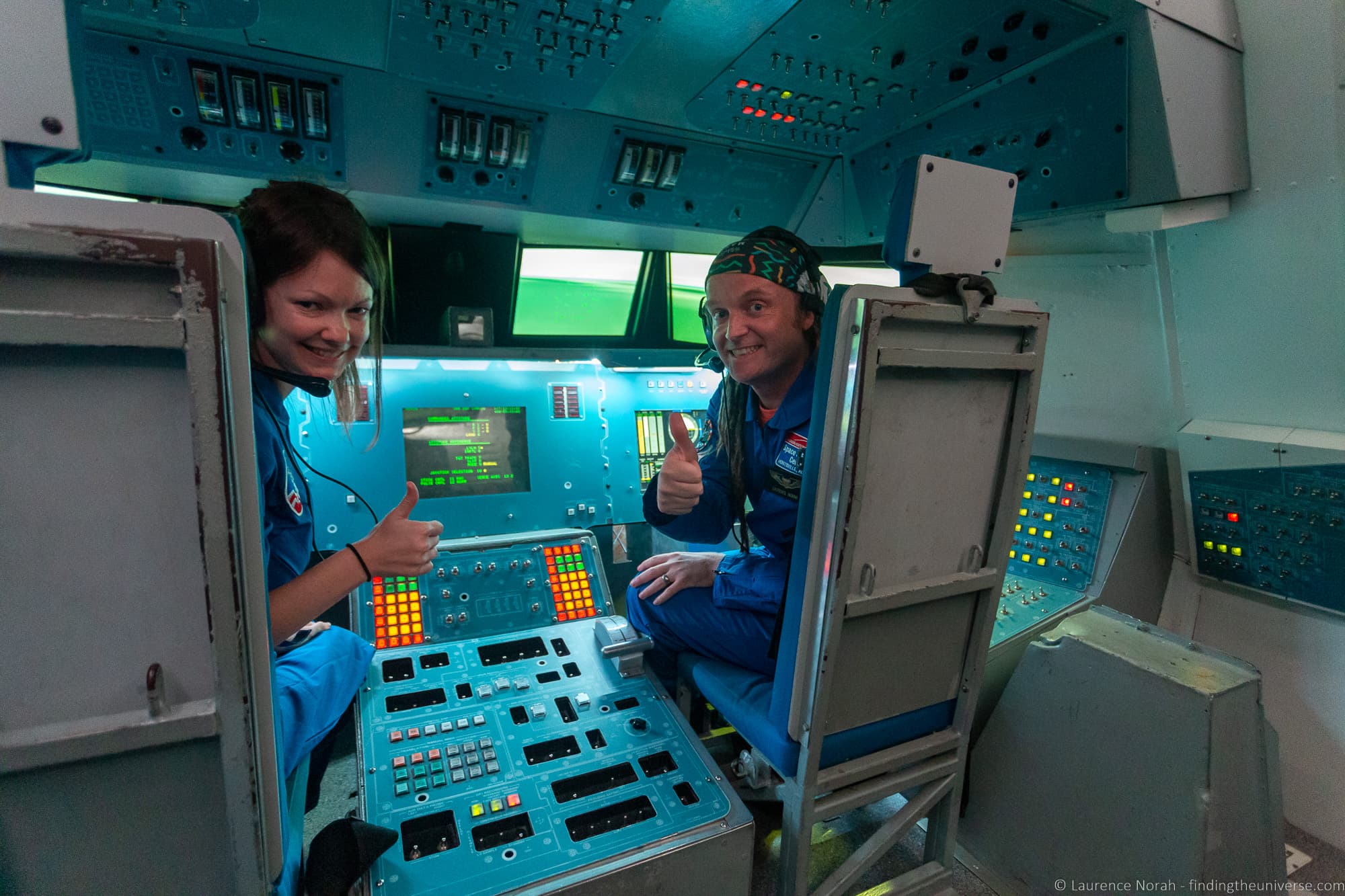
Space Tourism: How to Visit Space as a Tourist
Last updated: August 28, 2023 . Written by Laurence Norah - 4 Comments
Despite the name of this blog, I have been distressingly earth bound for all of my years thus far. Given recent developments in space exploration technology though, hope is not yet lost for the dream of going into space as a tourist – without having to shell out the millions of dollars that past tourists have paid!
In today’s post, I’m going to talk about a few things. I’m going to cover where space travel & exploration is today.
I’m going to talk about what options we have now, and may have in the future, for getting into space as a tourist. And I’m also going to cover a few ways those of us stuck on Earth without access to a giant pile of cash can still get our space fix around the world!
The State of Space Travel as a Tourist in 2023
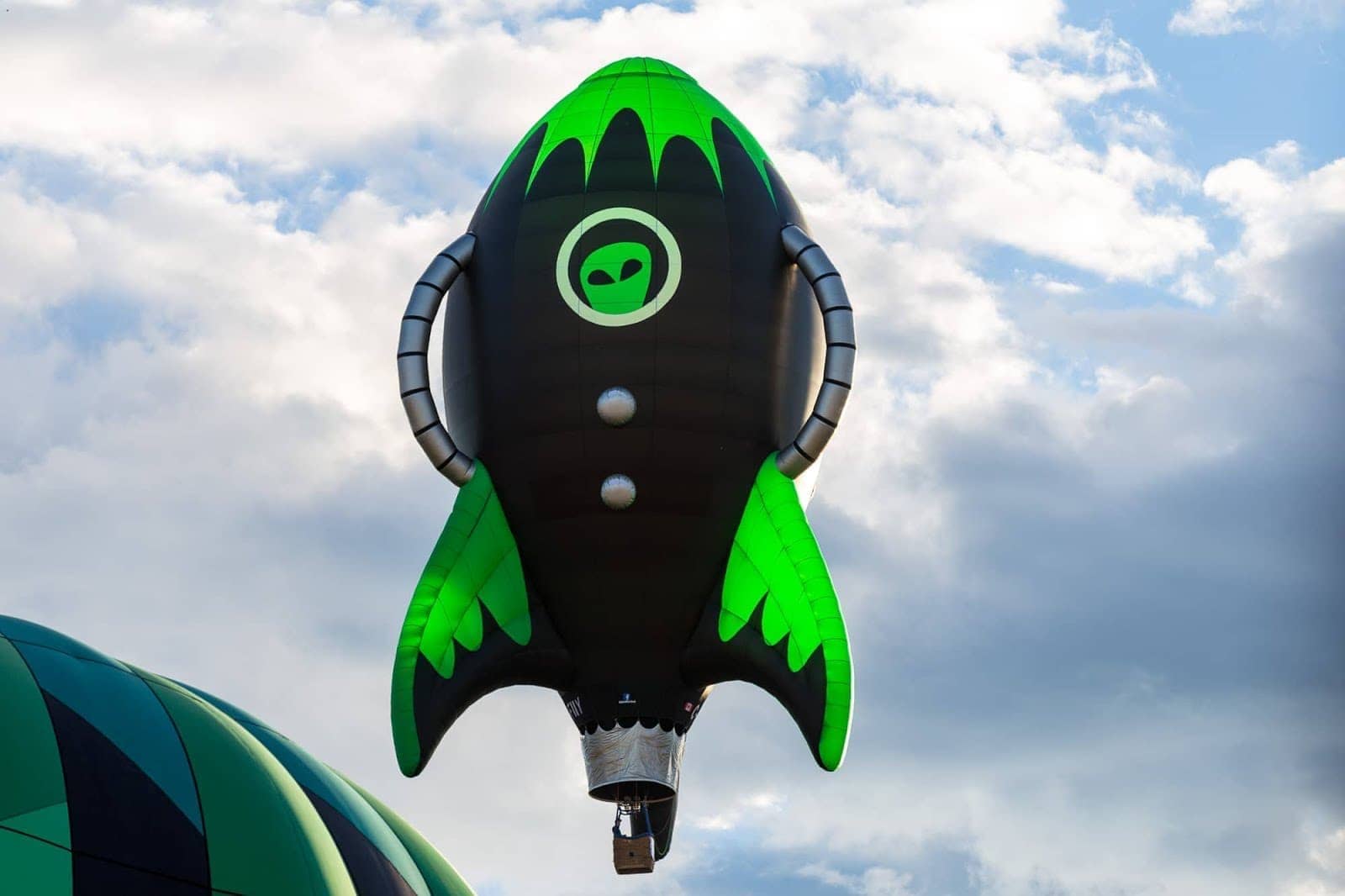
Huge strides are happening right now in space exploration, particularly with private companies looking at opening up space to your average person. Admittedly, right now, space tourism isn’t exactly accessible.
Up to 2009, only 7 people made it into space as tourists, all travelling with the Russian Space Agency, and all paying in excess of USD $20 million.
These weren’t exactly hop-on hop-off trips either, with the participants undergoing months of training, and many of them actively running their own experiments in space. So to call them space tourists is perhaps a bit of a misnomer.
However, things have now changed, and trips into space are becoming more affordable. Admittedly, they aren’t exactly “budget”, but they are less than $20 million a go.
So what’s changed?
Well, put simply, private investment. Whilst massive government organisations like NASA , the Russian Space Agency and the European Space Agency are always researching and expanding their space exploration efforts, their focus isn’t exactly on getting folks like you and me into space – at least not in the near term. Their focus is on long term scientifically focused exploration missions, with perhaps the most exciting being NASA’s Journey to Mars .
Other organisations though, see the potential for space based tourism as a way to generate funds and publicity for their projects. There are three main players in the space tourism business right now – Virgin Galactic , SpaceX and Blue Origin .
Let’s take a look at the main players with whom you have a real chance of getting into space within the next few years.
How to Go To Space As A Tourist
Other than flagging down a passing UFO Ford Prefect style, or signing up to be an astronaut with a government agency, getting into space is a bit tricky. But that’s all changing, and these are the companies with whom you are most likely to be able to travel into space.
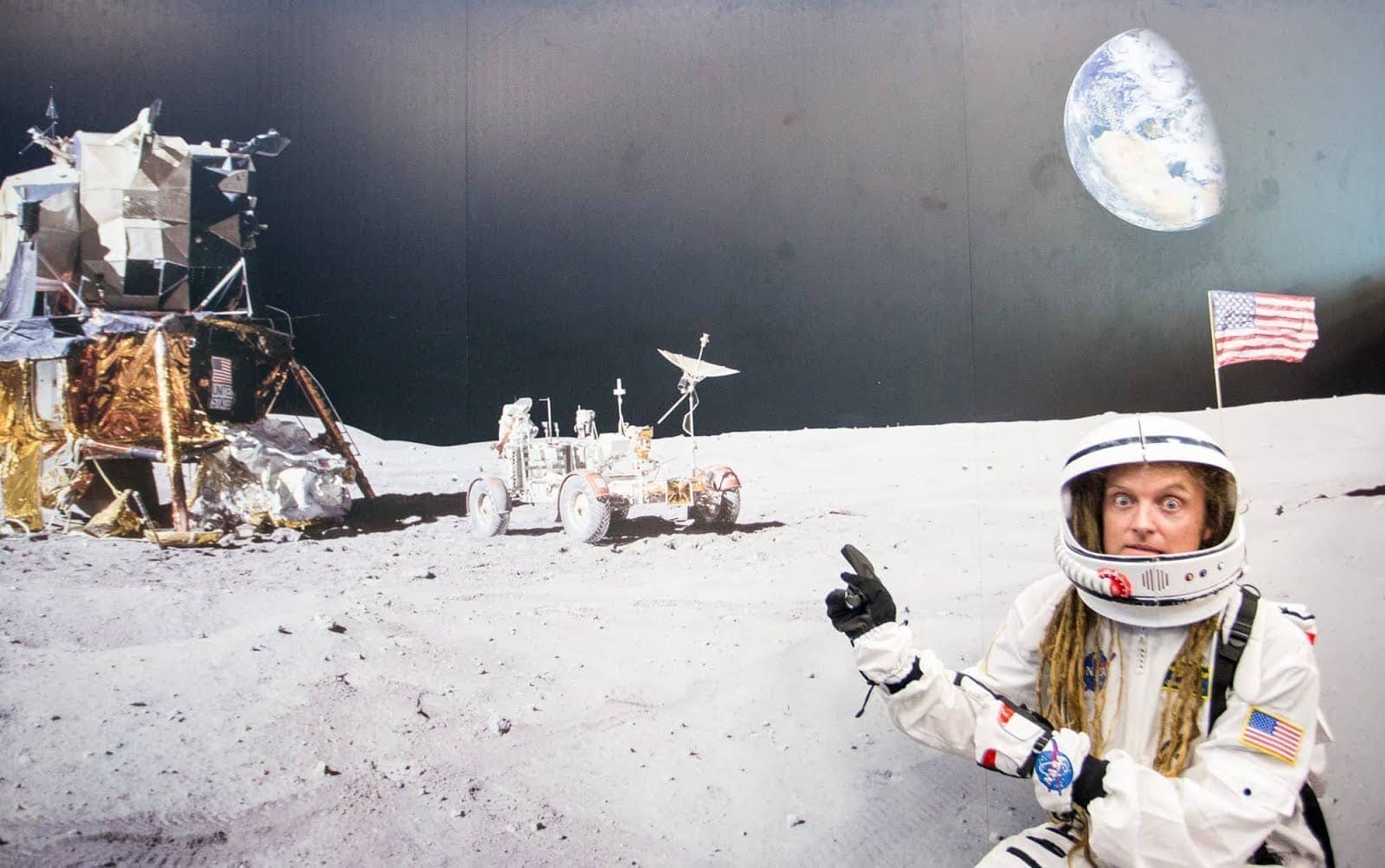
1. Virgin Galactic
Part of the Virgin Group headed up by Sir Richard Branson, Virgin Galactic currently offers sub-orbital flights to paying passengers aboard their SpaceShipTwo and SpaceShipThree craft.
Sub-orbital means that you’re not high enough to actually orbit the earth, but as the goal you do pass the 100km line that marks the edge of space, you will technically be in space, and also experience weightlessness. Hurrah!
The good news is that as of June 2023, commercial space flights have actually commenced. Trips are scheduled to go monthly, and you can now buy tickets for a voyage into space with Virgin Galactic. They are currently on sale for $450,000.
Admittedly, $450,000 USD isn’t exactly small change, but it’s a lot less expensive than the $20 million that previous space travellers have paid. For your money, you get three days of training at Spaceport America in New Mexico, a flight into space, a somewhat incredible view and a period of weightlessness. Not too bad.
2. Blue Origin
Owned by Amazon billionaire Jeff Bezos, Blue Origin is a private company which initially appeared to be focusing on sub-orbital flight, much like Virgin Galactic.
Unlike Virgin Galactic though, which uses a combination of a normal plane and a rocket plane to achieve the necessary space altitude, Blue Origin are using more conventional rocket technology, with a focus on re-usable components that cut the cost of launches.
Other than the spacecraft, the experience is largely the same – a sub-orbital flight that comprises a few days of training in Texas, a journey lasting around 11 minutes to up beyond the 100km line, weightlessness and some incredible views.
The technology to do this will look familiar to any fans of existing space flight technologies, including the capsule that returns to Earth by parachute, meaning that there are fewer technical hurdles to overcome.
As of 2021, flights have commenced on the New Shepherd, with Jeff Bezos being the first into space. The ticket for the first commercially available seat in the July 2021 launch was auctioned off for a cool $28 million.
Since that launch, there have been a number of flights with paying customers.
Regular pricing isn’t set, although it’s currently rumored to be around $1 million per seat. A timeframe for general availability of commercial flights isn’t yet known. You can sign up to be kept informed and updated however.
Perhaps even more excitingly than the New Shepherd program is its successor – the New Glenn program. This should offer longer duration, possibly even orbital flights, although details are currently sparse on the ground, with operations aimed to launch in late 2024. We do know however that priority on these trips will be given to New Shepherd customers.
Last in our trio of serious contenders for firms that will take your money and send you into space in the next few years is SpaceX .
SpaceX is owned by Elon Musk, who is particularly famous for being the CEO and co-founder of Tesla Inc, the electric car and battery manufacturer, amongst other things.
SpaceX largely focuses on commercial launch capabilities, with a particular focus on reusable rocket technologies that bring down the cost of putting payloads into orbit.
They’ve been hugely successful in this field, with multiple achievements, including being the first privately funded company to successfully launch, orbit and recover a spacecraft.
They were also the first private company to send a spacecraft to the International Space Station, and have since flown many missions to the ISS.
Whilst the majority of their work is on commercial and government contracts for putting things like satellites into orbit, some recent developments have put SpaceX firmly on the space tourism map.
First, in 2017 they announced that they had been contracted by two private individuals who want to go on a trip around the moon. This was originally due to launch in 2018, but has been postponed until at least 2024. It will be by far the most ambitious space tourism endeavor to date by any company, and you can read more about the project here .
SpaceX are also starting to sell tickets on their Crew Dragon capsule, which is the launch system NASA is using to shuttle astronauts to the ISS. These are not generally available, but a 3-day mission consisting entirely of tourists took place in 2021, with further missions expected. These are still priced in the tens of millions of dollars though, so don’t bank on these becoming affordable for a while to come.
Next, SpaceX is actively working on technology to colonise Mars, with a lofty goal of setting up a permanent colony on the red planet, home to over a million people, within the next 100 years.
Whilst the current estimate of cost for such a ride is in the region of $10 billion USD per person, SpaceX is aiming to bring that down to $100,000 through the development of their Interplanetary Transport System . This won’t happen in the near-term, but by the end of the century tourism to Mars might be a real possibility, with lunar and earth-orbital flights the norm by then.
4. Other Contenders
So those are the main players who, in my opinion, have the most realistic chances of taking you to space in the coming decade. But they aren’t the only players in the space tourism arena! Here are a few others to be aware of who might give you a chance of getting off Planet Earth.
Bigelow Aerospace: Bigelow Aerospace are actually a pretty major name when it comes to space technology, and if you ever happen to find yourself in a hotel on the moon or floating around the Earth, it’s likely going to be inside one of their inflatable habitats.
This isn’t theoretical either, they’ve got an inflatable capsule attached to the International Space Station already undergoing feasibility testing. Owner Robert Bigelow made his fortune in hotels, and he sees no reason why we can’t have them in space too.
Space Perspective: Space Perspective are taking a slightly different approach to everyone else, in that their route to space is to fly passengers 100,000ft above the ground in capsule carried aloft by a gigantic hydrogen filled balloon.
Ok, so 100,000ft isn’t exactly space, but it is high enough to see the curvature of the earth. It’s likely to be a more sedate and relaxed experience as well, compared to firing yourself into space on some sort of rocket at least. And whilst experiencing zero-gee isn’t going to be on the cards, you should be able to enjoy the views from the wraparound windows whilst enjoying a tipple from the on-board bar!
Tickets for 2024 flights have already sold out, but you can book for 2025 at a cost of $125,000 per person.
Boeing: Boeing are currently under contract with NASA to build a crew transport vehicle that would be compatible with a number of rocket systems, primarily for the purpose of shuttling astronauts to the ISS. It was originally due to start those flights in late 2018. However, testing did not start until late 2019, and the current timetable for crewed flights is now 2023.
As part of their contract, this CST-100 Starliner was specified to include one seat specifically for the purposes of space tourism , allowing one passenger to just tag along for the ride as it were. For a price, naturally. That price is currently unknown, although the original goal was to have it price competitive with the Russian Space Agency, so don’t expect it to come under the tens of millions mark!
Mars One: Mars One was an organisation with a goal of establishing a permanent human colony on Mars by the year 2035. Announced in 2012, it encouraged members of the public to sign up for the one-way mission, which resulted in over 200,000 applicants. That was whittled down to 100, and then a final 24 candidates.
Unfortunately, the project was dogged by criticism, particularly around the technical and financial feasibility of the plan. Finally, Mars One entered administration in 2019.
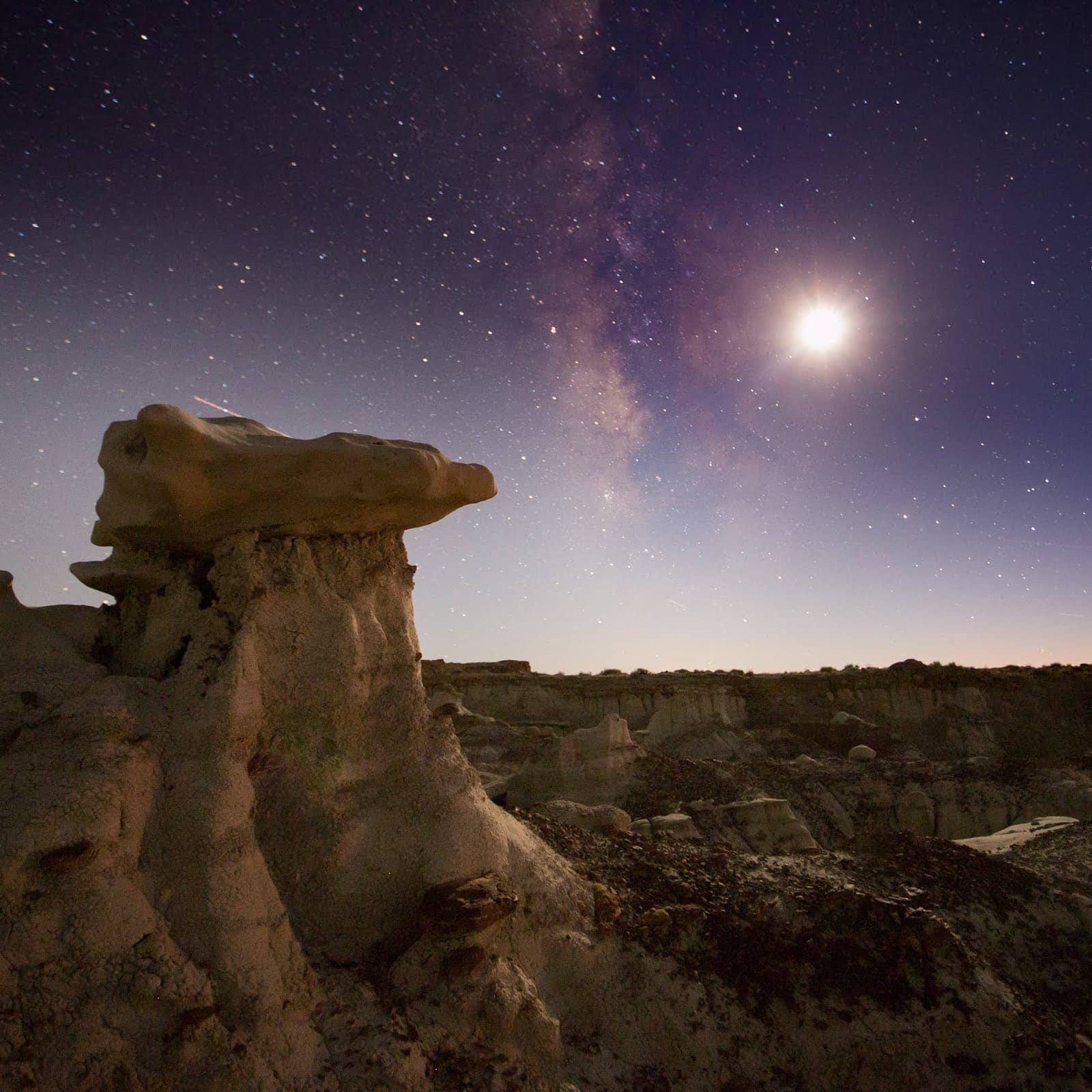
The Best Space Sights and Activities on Earth
Ok, so based on all the above, you’re probably realising that space is still a pretty tough place to get to right now, and even over the next few years it’s still going to be pretty darn expensive for a fairly brief jaunt.
Don’t fret though. Planet Earth is a pretty cool place, and there are a lot of space-related activities you can take part in without re-mortgaging your house and strapping yourself to a rocket.
Here are a few places you can learn about space and space travel in the meantime! Let’s look at these.
1. Active Spaceports
Whilst you might not get into space right now, you can still visit a spaceport and dream of the future! I’ve picked three spaceports for you to think about visiting.
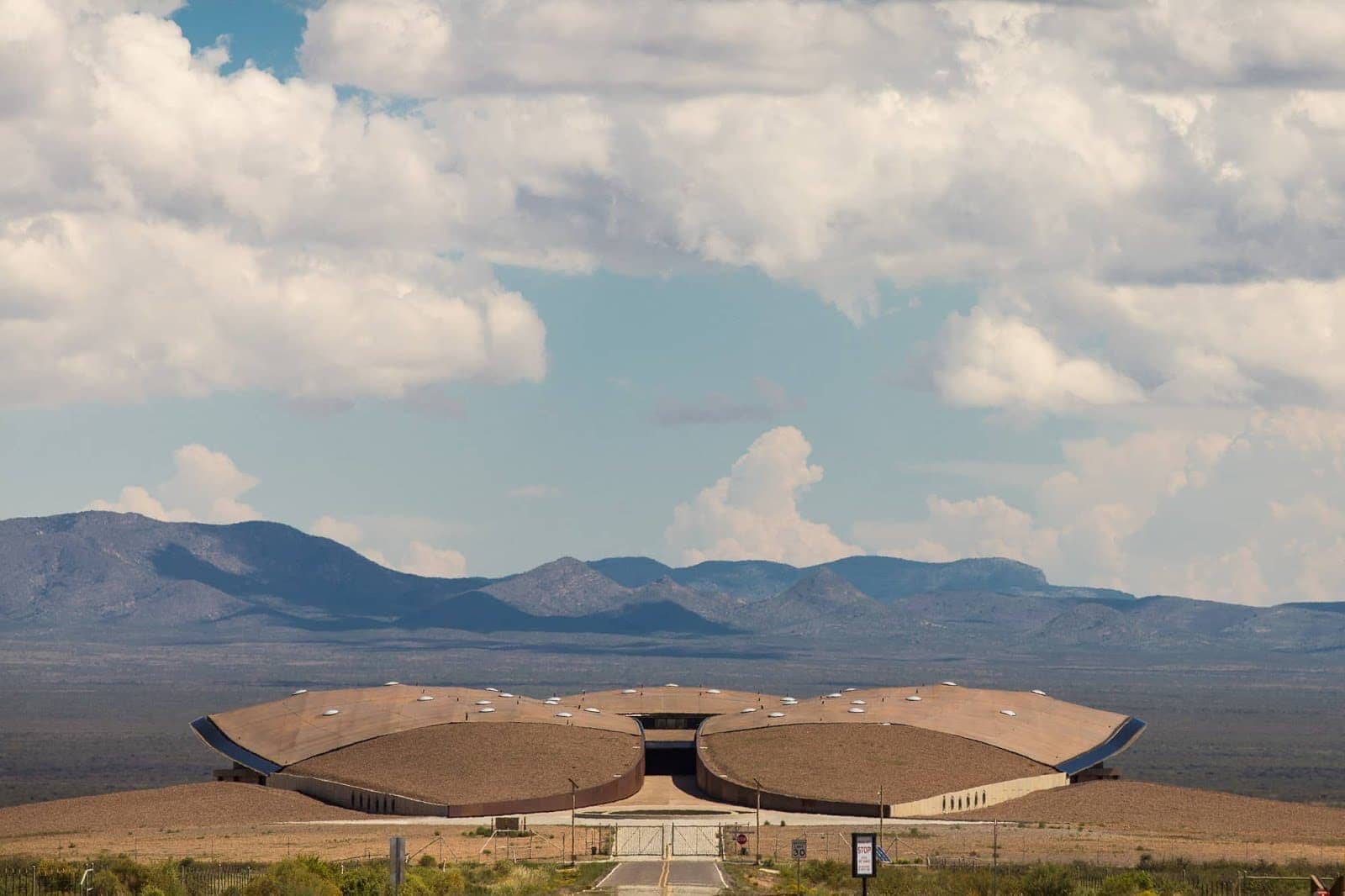
Spaceport America, USA. Set in the high New Mexican desert, Spaceport America is the world’s first purpose-built commercial spaceport, meaning it’s designed for commercial users. Yes, people like you and me. It’s the home base of Virgin Galactic, and is where that company will be operating from when they finally launch their space tourism flights. SpaceX also conduct some of their testing here. Unfortunately, you still can’t board a space trip here, but it’s a worthwhile place to visit, if only to get a tantalising glimpse of a possible future.
Kennedy Space Center, USA. Found in Florida, Kennedy Space Center is the main launch pad for NASA’s operations, and is where Apollo and Space shuttle launches took place. It’s a massive facility, spanning 144,000 acres. There’s a visitor centre on site, where you can learn all about NASA and it’s space operations, see an actual space shuttle and even experience a simulated space shuttle launch. Kennedy Space Center is still very much an active launch site, and you can also come here to watch rockets blast off into space – see their website for the launch schedule .
Baikonur Cosmodrome, Kazakhstan. One of the world’s most famous spaceports, and certainly the oldest and largest, Baikonur Cosmodrome is where the majority of Russia’s space program has operated from, including the first man into space, Yuri Gagarin. It’s still very active, and you can in theory visit, however prices are steep for a one day tour ($700+), and can only be arranged via a specialist tour operator in a complex process that needs to be booked weeks in advance.
2. Space Museums
As well as active space ports, there are a lot of museums around the world dedicated to sharing man’s activities in space. Here are a few of the best.
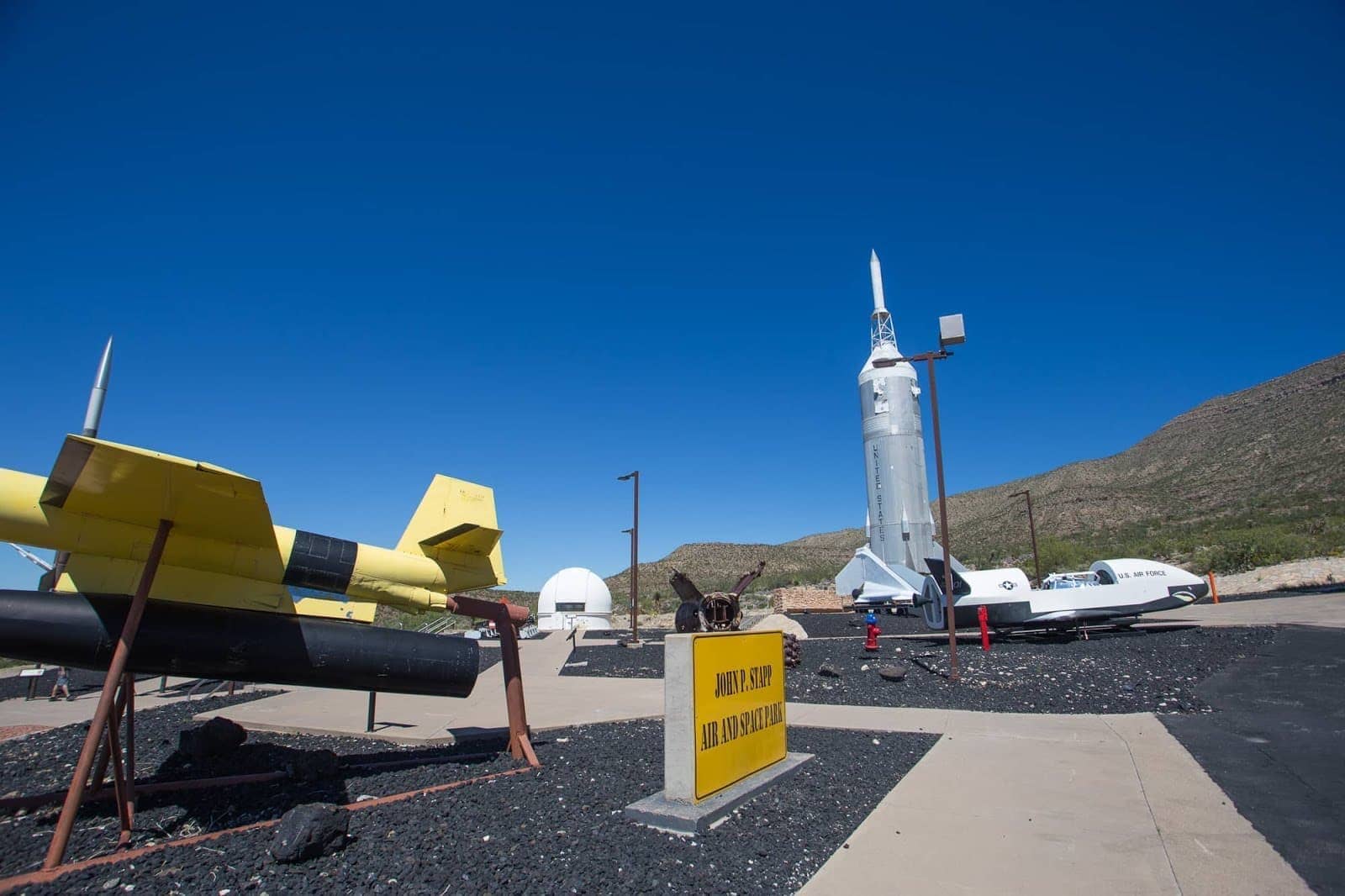
Space Center Houston, USA. The official visitor centre for NASA’s center for human spaceflight activities, Space Center Houston is an excellent place to come and learn all about NASA’s efforts around getting people into space. It has a number of artifacts from our explorations to date, including a lunar module replica and various actual capsules that have been into space. Tip – if you’re visiting a few sights in Houston, you can save money by investing in a CityPASS card which will get you into the Space Center as well as a number of other attractions in the city.
New Mexico Museum of Space History, USA. Found in Alamogordo in southern New Mexico, the five storey New Mexico Museum of Space History is full of information about man’s efforts to get into space, with everything from information on early rocket technology through to more modern day exhibits including a space shuttle landing simulator. It’s also home to the International Hall of Space Fame, a planetarium, and offers fantastic views across the White Sands National Monument.
Smithsonian National Air and Space Museum , USA . Found in Washington, D.C., this enormous museum is home to the world’s largest collection of historic aircraft and spacecraft in the world, including the Apollo 11 module and clothing worn by astronauts. With over 60,000 objects on display, you won’t run out of things to look at!
The National Space Centre, UK. Both a museum and an educational resource, the National Space Center in Leicester, UK, is home to six interactive galleries and the UK’s largest planetarium. A highlight though is the 42 metre high Rocket Tower , which houses a number of upright rockets, really giving you a feel for the enormity of these machines.
The U.S. Space and Rocket Center. Found in Huntsville, Alabama, right next door to NASA Marshall. The U.S. Space and Rocket Center has loads of information on the history of space flight, including two full size Saturn V rockets! This is also where you can attend Space Camp , a hands-on multi day training program for all ages, which will take you through a range of training similar to that which real astronauts do!
3. Space Themed Sights
We may be currently fairly stuck on the planet, but that doesn’t mean we’re not still hurtling through space, a small rock in a vast galaxy. Here are a few ways to help remind ourselves that there’s more out there than our horizon.
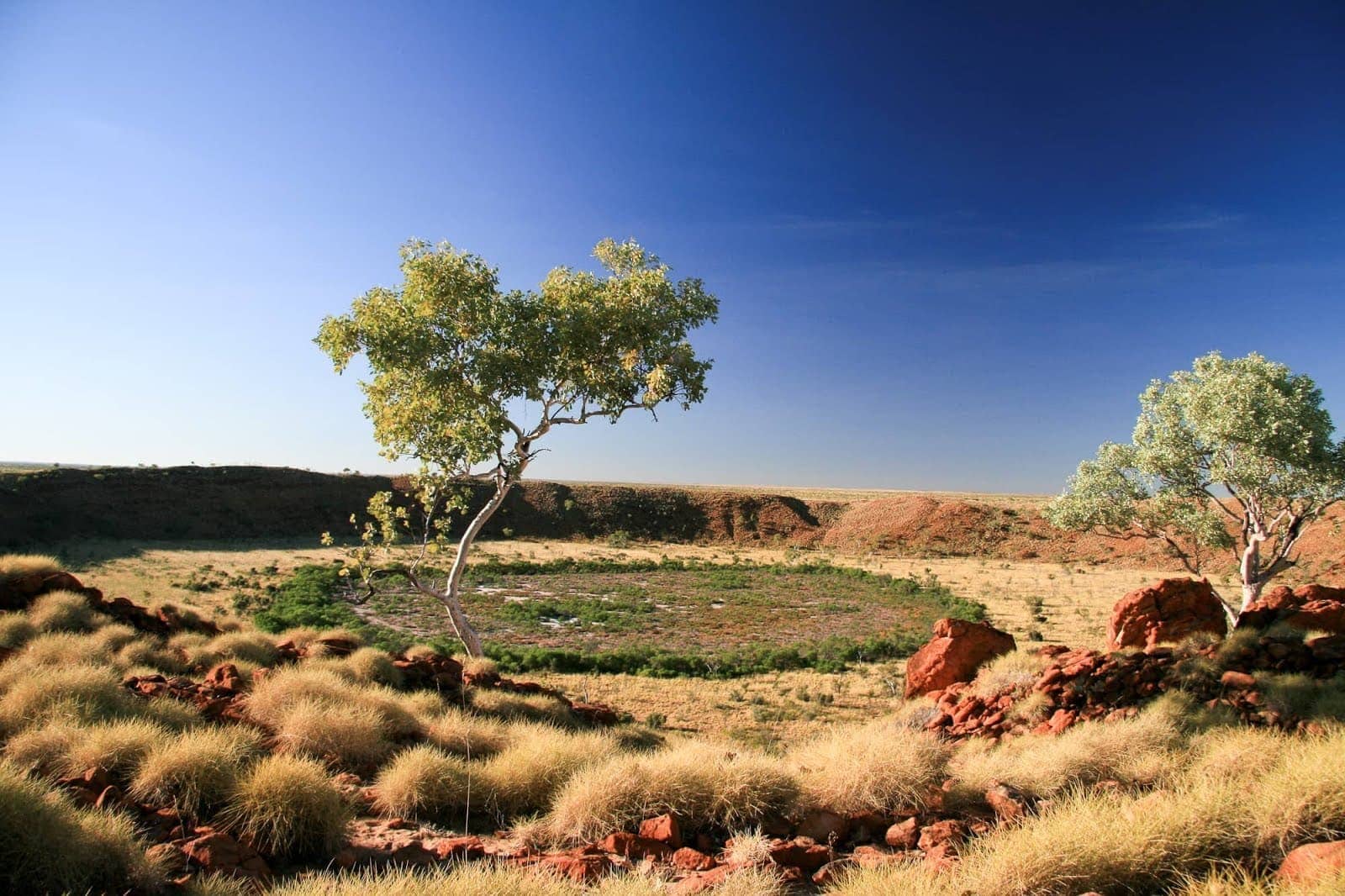
Meteor Craters. On our journey through space we regularly bump into errant lumps of space debris – around 100 tons a day in fact. Most often these lumps are so small (dust-specks really) that they just burn up in our atmosphere, creating beautiful shooting stars. However, anything larger than a marble has a chance of making to earth, although there are a lot of factors at work.
According to NASA , it’s the lumps that are around the size of a football field and up that make the most impact, and one of these hits us every couple of thousand of years. They can cause significant damage and leave a lasting impact. Two worth mentioning that you can visit are the aptly named “ Meteor Crater ” in Arizona, USA, and the Wolfe Creek Meteorite Crater in Western Australia. Both of these are around a kilometre in diameter, meaning you can see the whole structure with the naked eye and really get a feel for the force required to create such a hole. Of course you can also find smaller ones all over the world.
Star Gazing. You might not be able to get to the stars, but that doesn’t mean you can’t appreciate them. I always find that just lying back and staring into the vastness of space from a really dark location is a very powerful experience. You need to be somewhere far away from light pollution to get the best views of the night sky – there are dark sky preserves (and even festivals !) where you can get a great view, otherwise, head as far away from the lights as you can and just look up.
4. Giant Telescopes
How about if you can’t get into space, you try just looking at it through a really big magnifying glass and pretend you’re there? It might be as close as you can currently get to space for free, whilst also being wowed by humanities technological accomplishments. Below are four locations around the world where you can learn all about the art of looking into space. Of course, there are many more sites around the world and you can find a list of some of the major telescopes here although not all can be visited by the public.
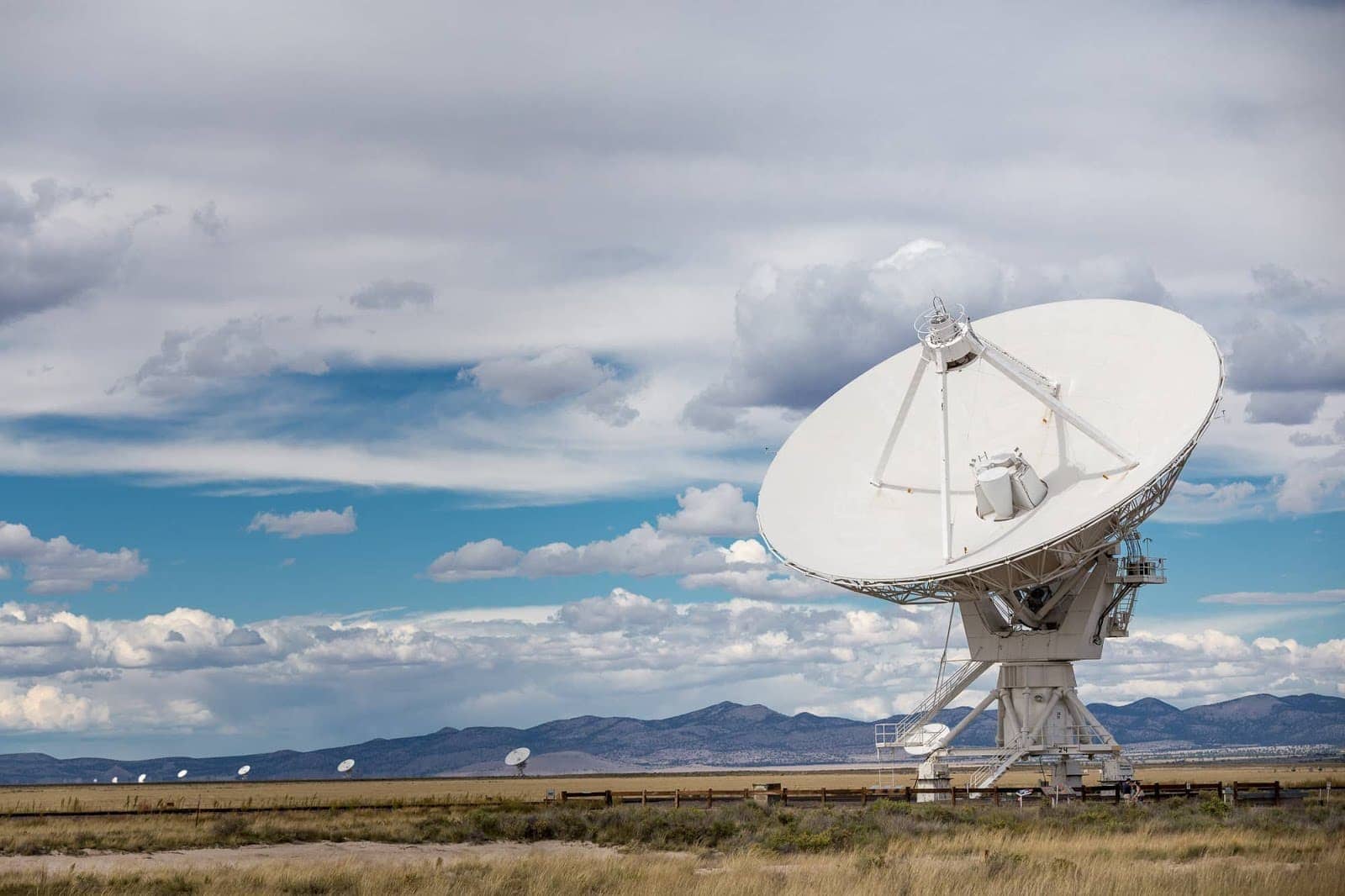
The Very Large Array, USA. Far out in the New Mexico wilderness, the Very Large Array is one of the world’s largest and most impressive radio telescopes. Unlike an optical telescope, which look at visible light waves, a radio telescope looks at radio waves, and from that we can learn all sorts of things from how black holes are formed through to the creation of the universe itself. These radio waves require a very large telescope, which is why the VLA is actually made up of 27 dishes, which work together to capture radio waves. There’s a small visitor centre and self-guided walking trail, and there are guided tours on the first Saturday of the month. See the official website for more details.
Jodrell Bank, UK. If you’re in the UK , then a trip to Jodrell Bank is a good option for viewing impressively large radio telescopes. In fact, Jodrell Bank is home to the world’s third largest steerable radio telescope, as well as a number of other active telescopes. There’s a visitor centre where you can learn all about the telescopes, and all sorts of other space-related things.
The Very Large Telescope, Chile. Way up high in the mountains of Chile is the world’s most advanced visible-light astronomical observatory – the aptly named “ Very Large Telescope ”. Operated by the European Southern Observatory, this is the most impressive optical instrument in the world to date, consisting of four main mirrors that are over eight meters in diameter, as well as four 1.8m diameter mirrors. These work together to create a final image, and the telescope is powerful enough that it would be able to make out a cars headlights on the moon. It’s fairly remote, what with it being on a mountain top in Chile, but you can visit – check here for more information on tours.
Green Bank Observatory, USA – At time of writing, Green Bank Observatory is home to the worlds largest steerable radio telescope, the Green Bank Telescope. Constructed in 2001, it’s one of the newest US telescopes, and with a total collecting area of 2.3 acres, is certainly impressive to behold. You can take a tour of the observatory, and there are also weekly and monthly events at the site.
5. Extra-terrestrial spots
If you’re really desperate to get off planet, you might want to frequent a location which has a history of extra-terrestrial activity such as UFO sightings. Whilst E.T. is yet to make formal contact, who knows, you might get lucky and have the chance to hop on a passing spaceship!
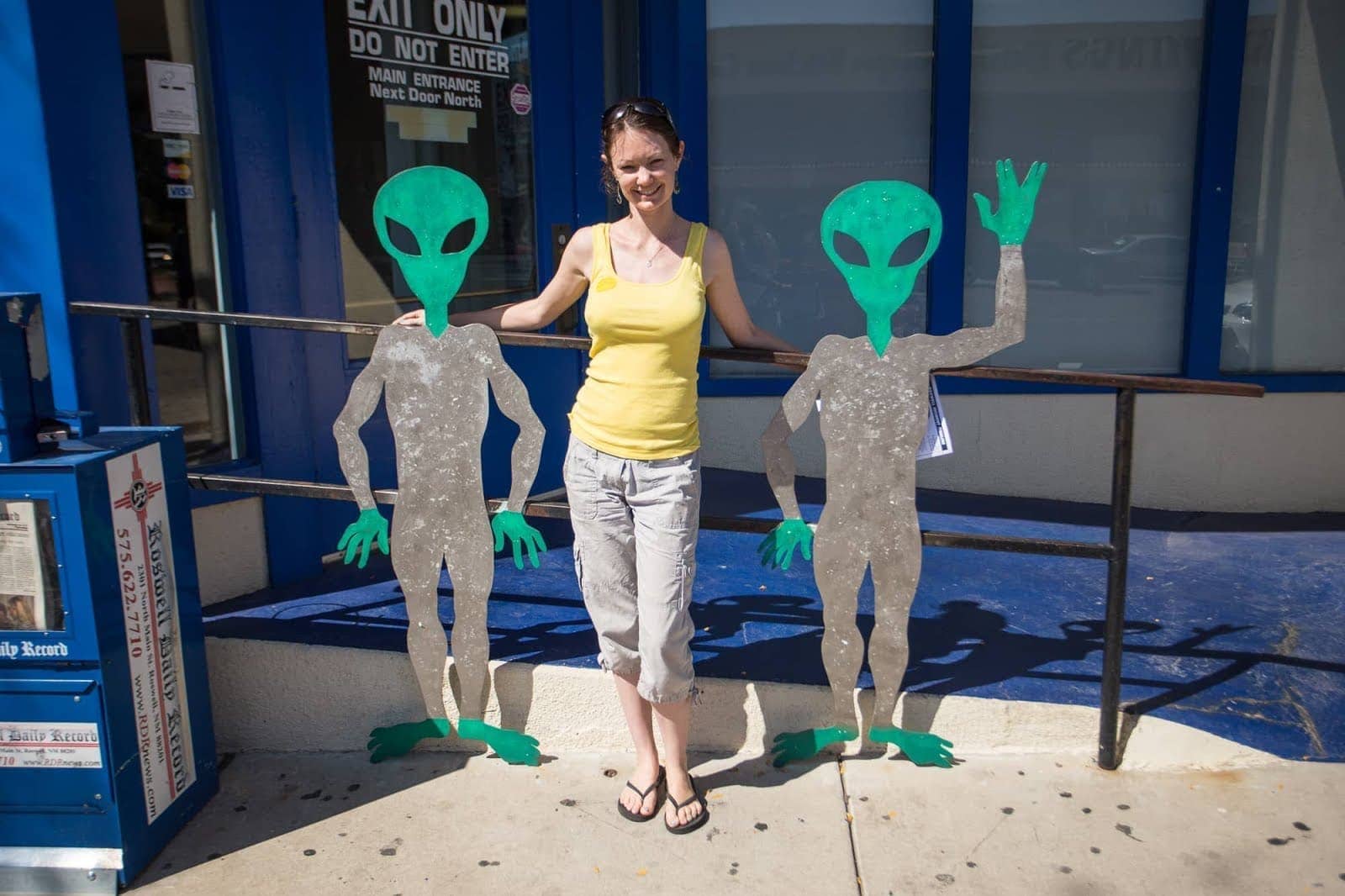
Roswell, USA. If you want to learn about aliens, then the town of Roswell in New Mexico has definitely got to be on your list. It became famous as the alleged site of a huge government cover-up of a supposed alien spaceship crash at a nearby ranch property, and the town has since embraced it’s position as the world’s most famous UFO hotspot. There are a number of alien themed attractions here – we’d recommend visiting the Roswell UFO museum as a good starting point.
El Enladrillado, Chile. Central Chile is well known as a UFO spotting hotzone. So much so in fact, that the country’s national tourism board established a UFO trail, a 30km long designated trail in the Andes mountains that centres around the town of San Clemente. This is definitely a good place to come to spot UFO’s, although the national tourism authority is keen to stress that a sighting isn’t guaranteed.
Nullabor Plain, Australia. When I was travelling in Australia, I had a memorable evening out in the outback on the vast Nullabor Plain with a chap who was convinced he was regularly visited by aliens. He might have been on to something of course, with this region of Australia being particularly famous for UFO sightings. And if you don’t see a UFO, fear not, the star gazing here is pretty epic too!
HR Giger Museum, Switzerland. If you prefer your aliens of the fantastical science fiction type, then a visit to the HR Giger museum in Gruyères, Switzerland, should definitely be on your list. It’s home a large collection of works by Swiss artists HR Giger, who famously created the monsters from the sci-fi classic horror movie Alien (and its sequels). Definitely one for the sci-fi fans.
Further Reading for your Space Trip
Well, that was a lot about space. Hopefully you’ve learnt a bit about your options for getting into space as a tourist, as well as some slightly more cost-effective ways to get your space fix on! Here are a few resources that you might find useful.
- Our favourite sights along the New Mexico Space Trail , USA. Plus a guide to attending the Albuquerque International Balloon Fiesta if you’re in New Mexico.
- Our guide to visiting Jasper National Park for their annual Dark Sky Festival
- A guide to attending Space Camp USA , as well as visiting the U.S Space and Rocket Center
- Official websites for Virgin Galactic , Blue Origin and SpaceX , for when you’ve saved up enough for that ticket to space
- The NASA Instagram feed , for mind blowing space images
- John Glenn’s memoir, to give you an insight into what it was like to be the first American to orbit the earth.
- Chris Hadfield’s book “ An Astronaut’s Guide to Life on Earth ”, helping you understand how to make the impossible a reality, which seems like a good place to end this post!
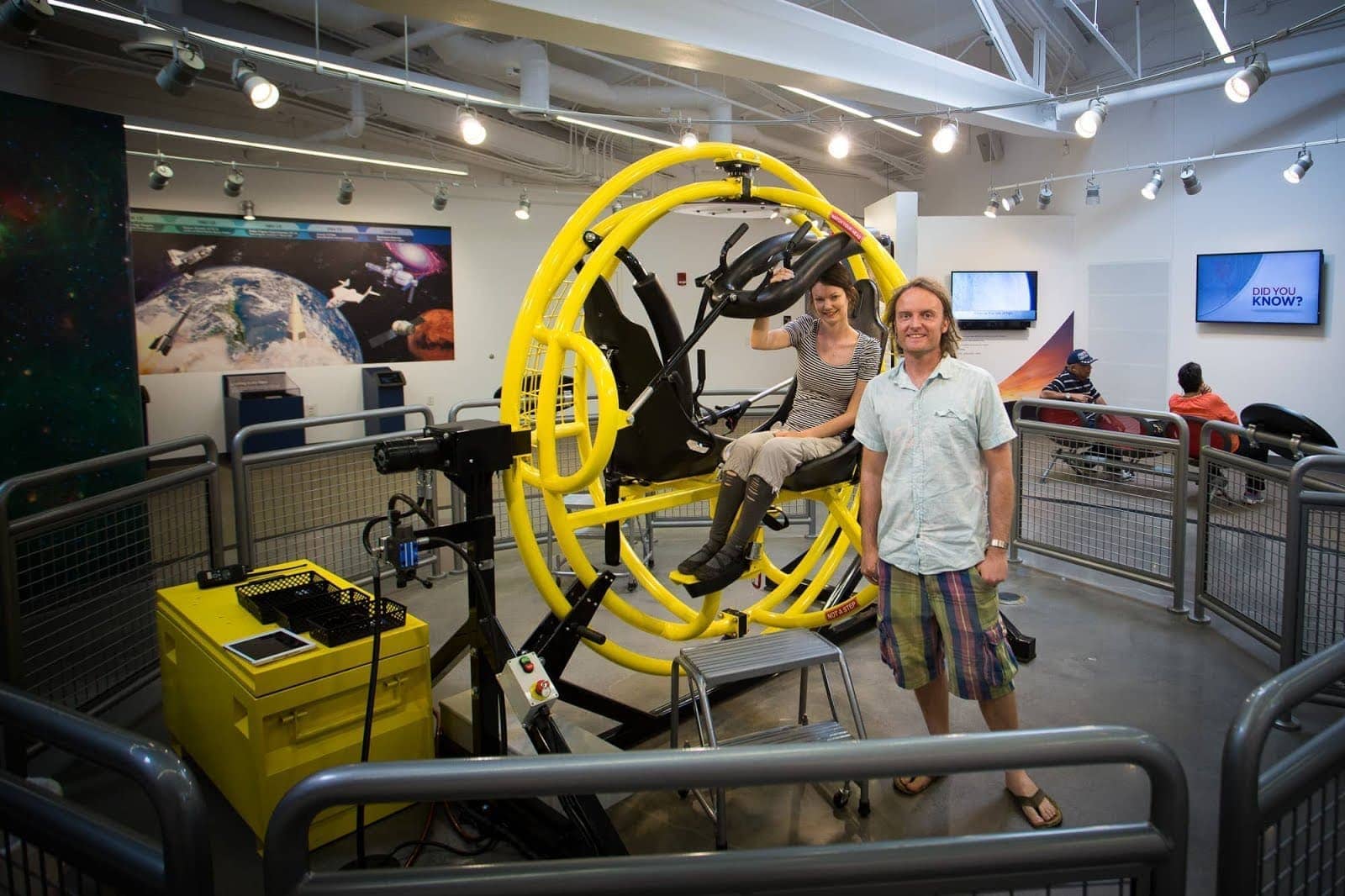
Well, that was a lot to write about space travel and space tourism! We’re not quite there yet, but with the pace of developments I see no reason why, in the coming years and decades, that I won’t finally be able to realise my dream of heading up into space for real. Let me know in the comments if heading into space is a dream of yours!
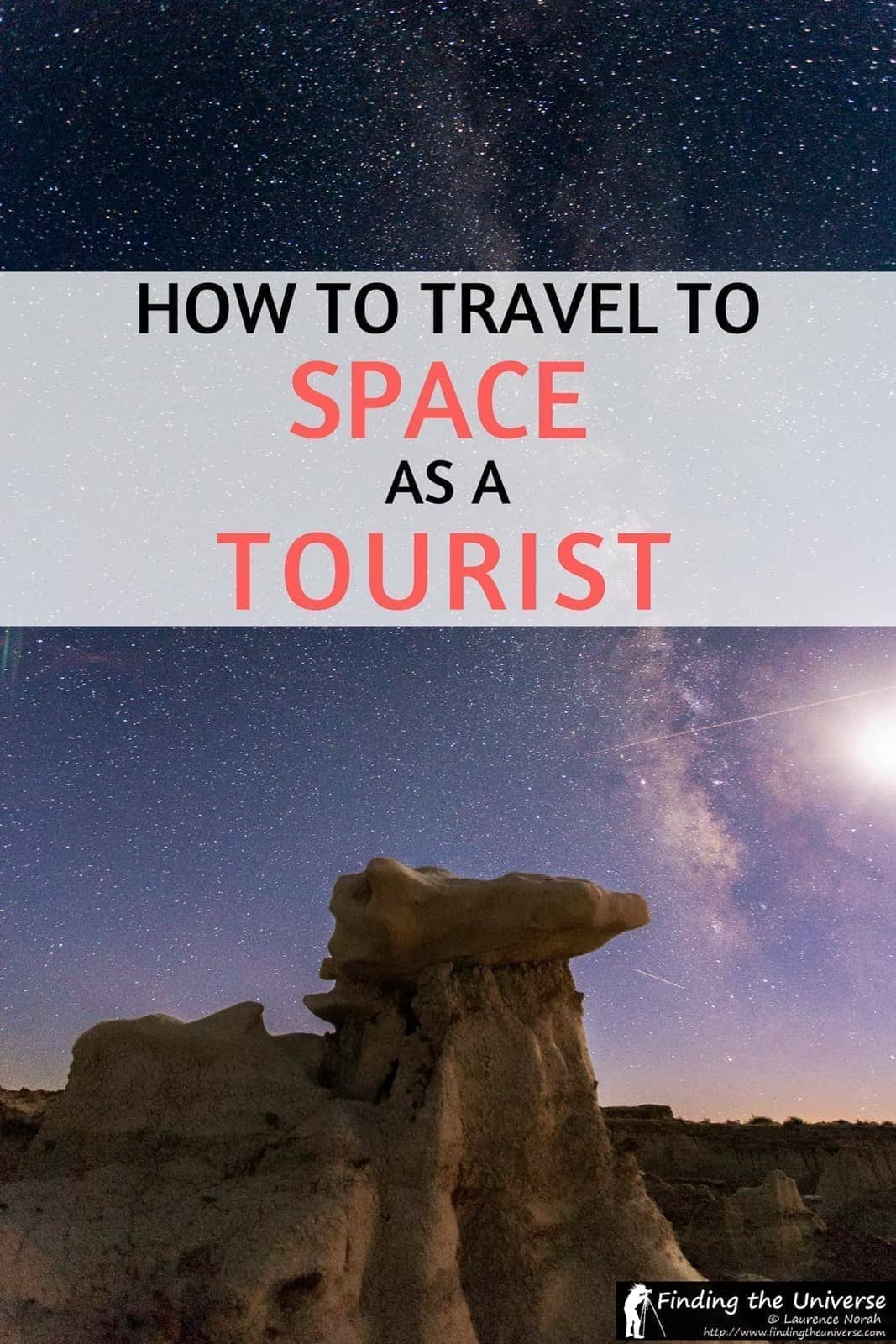
Enjoyed this post? Why not share it!
There are 4 comments on this post
Please scroll to the end to leave a comment
Lynn Magnuson says
17th February 2024 at 8:16 am
Traveling into space is something I’ve wanted to do ever since I was a child. I remember sitting in class and I think it was the third grade and watching Alan Shepard blast off. I knew at that point that someday I wanted to do the same thing. It hasn’t happened yet, but as time goes by the chance to do so, becomes more and more a possibility. I hope someday I do get the chance.
I love your article. Very well written and very informative. Keep up the great writing. That’s another thing I share a passion for. Writing
Laurence Norah says
20th February 2024 at 1:45 am
I’m right there with you! I really hope you get the chance to get into space some day soon. It’s definitely getting closer as a possibility 🙂
Safe travels, be they earthbound or not!
roshmand says
2nd July 2023 at 6:57 pm
amazing poat. thanks
4th July 2023 at 9:39 am
thank you very much 🙂
Leave a Reply Cancel reply
Your email address will not be published. Required fields are marked *
Let me know when there's a reply to my comment (just replies to your comment, no other e-mails, we promise!)
Subscribe to our monthly Newsletter where we share our latest travel news and tips. This also makes you eligible to enter our monthly giveaways!
We only ask for your e-mail so we can verify you are human and if requested notify you of a reply. To do this, we store your data as outlined in our privacy policy . Your e-mail will not be published or used for any other reason other than those outlined above.
We sent you SMS, for complete subscription please reply.
You are using an outdated browser. Please upgrade your browser or activate Google Chrome Frame to improve your experience.

Wonder of the Day #19
What Would You Pack for a Trip to Outer Space?

SCIENCE — Earth and Space
Have You Ever Wondered...
- What would you pack for a trip to outer space?
- What do you need to survive in outer space?
- Why is recycling important?
- astronaut ,
- ecosystem ,
- International ,
- life-support system ,
- recycling ,
- spaceship ,
- Astronaut ,
- Ecosystem ,
- Life-Support System ,
- Recycling ,
- Spaceship ,
Today’s Wonder of the Day was inspired by Kylie. Kylie Wonders , “ What is it like to live on the International Space Station? ” Thanks for WONDERing with us, Kylie!
Have you ever dreamed of traveling in space ? For many kids, gazing at the stars leads to daydreams about what it would be like to be an astronaut . Would you like to travel on a spaceship? Just think about how awesome it would be to set foot on the moon or another planet!
Of course, becoming an astronaut isn't easy. There aren't many astronauts in the world , so you have to be very skilled in a number of different areas. Astronauts have special combinations of skills that make them suitable to be traveling scientists beyond Earth.
Although it sounds like it would be great fun to travel to outer space, it would be a lot of work, too. Traveling to outer space takes lots and lots of preparation. Everything has to be planned carefully in advance. Why? Because once you leave Earth's surface, you're on your own with what you have in your spaceship. There's no store to go to in space!
Once you are in space, nothing can come on board the ship and practically nothing can go out. You must take everything you need to survive into outer space with you. Let's call these items “inputs." Inputs might include necessities such as food , water and oxygen .
Now let's talk about “outputs." Every input creates an output . Let's say you open a box of Coco Comets cereal for breakfast. What will you do with the box when it is empty? You only have so much room to store outputs on your spaceship. Every piece of garbage you create while on tour will stay on the ship with you. Where will you store the garbage? Can you think of a way to reduce the amount of waste output you create during your time in space?
In order to survive, you must eat and drink . This means your body will also process those food and water inputs and output them in the form of solid and liquid waste . Since nothing can leave the spaceship, you will need to think of a way to handle these bodily wastes. On Earth, we simply flush a toilet, but what happens after our bodily output leaves our homes and enters the sewer systems? Where does it go? It might seem icky, but this is an important question.
Even breathing creates an output — carbon dioxide! Can you think of a way to filter the carbon dioxide from your spaceship? And how will you replace it with the oxygen your crew needs to breathe? Hint: Plants love carbon dioxide and depend on it in the same way humans depend on oxygen to breathe.
Conveniently, plants output oxygen ! However, plants also have other input needs, such as water and fertilizer. If you bring a banana tree on board your ship, you will need to bring enough water to sustain it for a year. You must also consider another type of output the bananas will leave behind after you have snacked on the fruit — the peel! The banana peel will become another output to add to your garbage output pile. Can you think of other plants or trees that may provide a tasty treat without leaving a rind or peel behind for your garbage output pile?
See how carefully you have to plan for a trip to outer space? Not only do you have to think about all the things you'll need, you have to consider the consequences of those things in terms of the wastes they create.
Packing for a trip to outer space isn't as simple as packing your bag for a week at camp. Considering the impact of all your actions takes time and energy. And you can start right now! All of your actions here on Earth have impacts just like they would in space. How can you plan your actions on Earth to have the least impact on the environment and your future ?
Common Core , Next Generation Science Standards , and National Council for the Social Studies ."> Standards : CCRA.L.3, CCRA.L.6, CCRA.R.1, CCRA.R.2, CCRA.R.4, CCRA.R.10, CCRA.SL.1, CCRA.W.4
Wonder What's Next?
Can’t wait for tomorrow's Wonder of the Day? Are you counting down the seconds? It’ll be here in t-minus 3… 2… 1…
Ready for a tour of outer space? Find a friend or family member to help you check out one or more of the following activities:
- Curious about what actual astronauts take with them into space? Do some research on the International Space Station , where astronauts stay for weeks and months at a time. You can learn more about the space station and even see a video that will take you on a tour. Do you think you'd want to spend months at the International Space Station? Why or why not? What would be fun? What would you miss about Earth?
- Fasten your seat belt and prepare for lift off! Close your eyes for a moment and imagine that your car is a spaceship and you and your family are preparing to blast off and tour a far, faraway galaxy. Once in space, your crew will not be able to communicate with planet Earth, nor will you be able to receive any extra supplies from home. Whatever you pack in your spaceship is all you will have for one year. Thinking carefully about what you learned in today's Wonder of the Day about inputs and outputs, what items would you pack with you? Make a list and discuss it with your friends and family members. What do they think of your list? What would they add? Is there anything they'd leave behind? Make sure you evaluate your list carefully to make sure you have a plan to satisfy all of your inputs and to deal successfully with the outputs that will be created!
- Welcome home! We hope you enjoyed your trip! Now that you have returned from your galaxy tour, discuss with your friends and family members how inputs and outputs affect Earth. Much like your spaceship, Earth must carry everything it needs to sustain itself and its many ecosystems and life forms. Nothing can come in and nothing can go out. There is no way to communicate with another planet to ask for help or supplies. If Earth doesn't have enough water or oxygen, what will we do? We can't order it from Neptune! If our landfills begin to overflow, we can't send our garbage into a black hole. The survival of “Spaceship Earth" depends on the choices, actions and behaviors of the crew who inhabit it. That's me and you! Discuss simple changes your family can make to help conserve the resources on “Spaceship Earth" and reduce the amount of output you contribute to Earth's garbage output pile. These can be as basic as turning off the faucet while brushing your teeth or carrying water in a reusable thermos instead of drinking from disposable plastic bottles. When you're done, ask for an adult’s help sharing the ways your family is improving life on our spaceship via social media. Be sure to tag us @wonderopolis. We'd love to hear your ideas!
Wonder Sources
- http://www.windows2universe.org/kids_space/astronaut.html (accessed 03 Feb. 2020)
- https://www.nasa.gov/mission_pages/shuttle/behindscenes/troy_mann.html (accessed 03 Feb. 2020)
- https://www.businessinsider.com/what-astronauts-pack-when-they-go-to-space-2013-9 (accessed 03 Feb. 2020)
Did you get it?
Wonder contributors.
We’d like to thank:
killian and Emma for contributing questions about today’s Wonder topic!
Keep WONDERing with us!
Wonder Words
- consequences
Would that trash can have a heavy lid, too, Space Geek? Or, maybe a vacuum system to draw in the trash so it doesn't float around the space ship.
Hmmmmm......? I will think about that.
Caroline Huey
Thanks for sharing, Caroline!
Hey, there!
You can check out Wonders about UFOs and Area 51 that might help with your question about aliens.
As far as when NASA is going to Mars, you can check out NASA's website about missions to Mars .
Fortnite_GOD_Girl_
Henry stricker

Tyler Hayden
If I was to bring anything I would bring a snack and my family and maybe my candy. the most important thing I would bring is my bible.
Thanks for sharing, Tyler!
Hi, Harper! Great list of your favorite foods! Did you know that astronauts have to eat foods prepared a certain way in space? To learn more, check out Wonder 208: What Do Astronauts Eat In Space?
Thanks for sharing, Xavier! Have you ever WONDERed about What It's Like to Live on the International Space Station? Let us know what you find out!
CodeBreaker416
Oh, no! We're sorry to hear that, CodeBreaker416! What are some of the topics you are most interested in? You can explore other Wonders here!
Welcome to Wonderopolis, Ms. Green! We are excited to hear about what your students would pack, as well!
that was rude code breaker 416.
Hi, Ashlynd! Great question! We encourage you to take a Wonder Journey to see what you can discover!
We hope that the wifi hotspot would work in space, Idkimbored!
Great question, km!! It sounds like there may be a few different answers for this question, though. This Wonder can help give some examples of things you may want to consider packing, and ideas that you would need to consider before taking a trip to outer space!
Thanks for sharing, breanna!
Brice______kbl
I would bring oxygen water and my phone so I can listen to music. BTW LOOOVVVVeEE the article.
Thanks for sharing and for WONDERing with us!!
Thanks for sharing, Spencer_K! Do you think your dog would like outer space?
Great question, tani_madii! We did some digging and think that this link: https://www.nasa.gov/vision/space/livinginspace/Now_Thats_A_Long-Distance_Call.html should help you out!
Tani_Meowww#####
Thanks for sharing, Tani_Meowwww####! Would you be excited for a trip to outer space?
Tani_Meowww#######
That's a good list! But now we are ?...how is there electricity in outer space?
Curious kid
Oooo good question! We've got to think about that one...what would YOU pack?
Great question, Karter! Yes, it is true muscles can easily weaken in space. Without gravity there is much less resistance so the muscles aren't challenged very much. This is why astronauts have to spend some significant time each exercising so they can counteract that. Cool, huh??
Kenzy Ossama
Thank you for commenting, Kenzy! We're glad you visited Wonderopolis today!
Aidan Davidson
That's a great list, Aidan! Sounds like you have thought this through pretty well!
Damian Ortega
Tbh athena, would there be plugs for all tht n would u clean up ur dogs poop whn he/she uses the restroom and where would u put all those electronics
Thanks for joining the discussion, Damian. It's fun to pretend we're going on a space trip! ?
That seems like a good list, athena! Don't forget the power cords and chargers for your electronics (and dog food)! ;-)
would that work in space?
Thank you for joining the discussion, sarah! What would you bring?
Thanks for sharing your list with us, Leo! Tell your brother we said Hello! :D
It sounds like you've given this a lot of thought, Athena! Thanks for WONDERing and sharing with us! :)
You need air.
VERY good point.
Those are things you'd definitely need, Lucas! Thank you for commenting! :)
Hi, Fazaima! We hope you liked this Wonder! Thanks for your comment! :)
We think this sounds like an interesting writing topic, Fazaima! We hope you learned lots of cool new facts! :)
Great question, verona! We hope this Wonder was helpful! We also encourage you to embark on your own Wonder Journey. We're sure you can find lots of info at your library and online! :)
How ever it works just do it
Thanks for WONDERing with us, Taylor and Nevaya! Sounds like you will be ready for a space mission! :)
Sounds like you'll be prepared, Tyresse! Thanks for sharing your ideas with us! :)
Hi, Gregory! We're glad you're having fun exploring Wonderopolis! Thanks for sharing your list of items for space travel! :)
Wonderpolis do you have a second website?
Great question, Gregory! Check out Camp Wonderopolis where you can earn Wonder Cards and explore Maker activities! :)
Flying rosegold zebra!
Thanks for sharing! Those would all be important items to bring! Thanks for WONDERing with us! :)
Hi, Joseph! We're THRILLED to hear you would bring books! Sounds like a GREAT list of important items! :)
We're sorry it didn't help you, Quinn. We have many other Wonders of the Day related to outer space -- perhaps those will help! Just click here to view them. :)
Yu-An Huang
Welcome, Yu-An! All important items for a space mission! Thanks for visiting Wonderopolis! :)
WONDERful, Nancy! Thanks for stopping by Wonderopolis! We're glad this Wonder was helpful and you learned something new! :)
Parth Kotwal
Welcome, Parth! We hope this Wonder was helpful. Thanks for visiting Wonderopolis! We're THRILLED you're WONDERing with us! :)
Cole Richards
Wonderopolis
Great, Cole Richards! We love when we are learning and having fun at the same time! Thanks for visiting WONDERopolis, today! :)
MorgPorgGorp
I hate it too
We're sorry to hear that, Fazaima! There are more than 1,700 Wonders of the Day. We're sure you can find one you like better! :)
We're sorry you didn't like this Wonder! We'd LOVE to have you stop by and read a few other Wonders. :)
SpaminCanadian
You don't have satellite connection in outer space..... So the screen will be blank.
We're glad you joined the conversation, SpaminCanadian! Thank you for visiting Wonderopolis! :)
CarlyRae107
LOL minecraft
Hi, Carly! Many WONDER Friends would agree that Minecraft is a "must pack" item. Do you like playing Minecraft, too? :)
We think you'd have LOTS of things to do to keep you busy in outer space, Daivionne! We're WONDERing what kinds of foods you would want to take to eat? Happy WONDERing! :)
No no that we need real food and not no phone
Thanks for joining the discussion, kaylan! We appreciate you sharing your opinion. The GREAT part is we can all bring different items! :)
Those are some interesting choices, Bryce. Who would you call from outer space? We hope you join us to WONDER again tomorrow! :)
Wow, sian pi! We are impressed with all of your WONDERful thinking! You ROCK! :)
Way to go, Lyrik! Those are some WONDERful things to take with you to outer space. Do you have anything special that you would want to take? Thanks for stopping by Wonderopolis today! :)
Hi, Wonder Friend Hemanta! We are so HAPPY you shared some of the things you think you would need in outer space with us today! We hope you WONDER with us again soon! :)
We're SO GLAD you're spending time with us WONDERing today, Lawrence! We think a pillow and cover would be a GREAT idea to take to outer space! :)
Hello, Amaria. Thanks for visiting us today! Outer space doesn't have electricity, so there isn't a need for outlets. You need food and water to survive, so you would need food and water in outer space. We think bringing a space suite and helmet is a MUST if you were to visit outer space! :)
WONDERful, Orianna! Books make it possible to travel anywhere! Keep Reading and WONDERing with us! :-)
Mrs. Foster's Class
Alright, we're so excited that you're WONDERing with us today, Pinkninja! Thanks for sharing your comment AND telling us all about your interest in NASA! We hope you follow your dreams! Check out all these Wonders about space: https://www.wonderopolis.org/wonders?q=space :)
We are undergoing some spring clearing site maintenance and need to temporarily disable the commenting feature. Thanks for your patience.
Related Wonders for You to Explore

Do All Sharks Live In Saltwater?

What Type of Shark Is the Slowest?

Why Do Sharks Have Nostrils?

Who Was Kalpana Chawla?

How Do You Clean Up an Oil Spill?
Drag a word to its definition
Select a Wonder Word:
Match its definition:
Congratulations!
You’ve matched all of the definitions correctly.
Share results
Question 1 of 3
Which of the following is an example of an “input” you would need to survive in space?
- a television Not Quite!
- b oxygen Correct!
- c maps Not Quite!
- d both (B) and (C) Not Quite!
Question 2 of 3
Breathing creates what “output”?
- a oxygen Not Quite!
- b carbon dioxide Correct!
- c nitrogen Not Quite!
- d trash Not Quite!
Question 3 of 3
Which of the following is an example of an output that an astronaut would need to plan for on a trip to outer space?
- a carbon dioxide Not Quite!
- b trash Not Quite!
- c human waste Not Quite!
- d all of the above Correct!
Quiz Results
Share Results
Spread the joy of wonder, get your wonder daily.
Subscribe to Wonderopolis and receive the Wonder of the Day® via email or SMS
Join the Buzz
Don’t miss our special deals, gifts and promotions. Be the first to know!
Share with the World
Tell everybody about Wonderopolis and its wonders.
Share Wonderopolis
Wonderopolis widget.
Interested in sharing Wonderopolis® every day? Want to add a little wonder to your website? Help spread the wonder of families learning together.
You Got It!

http://www.wonderopolis.org/wonder/What-Would-You-Pack-For-a-Trip-To-Outer-Space
© National Center for Families Learning (NCFL)
- Newsletters
Ten things to take on your next trip to space
Tory Shepherd
Tory Shepherd is an Adelaide-based freelance journalist who has covered Space 2.0 for The Advertiser.
By all accounts, going to the toilet in space is horrid. NASA astronaut Peggy Whitson said it was the most challenging thing about the International Space Station (ISS). Still, at least they have toilets. On the Apollo missions, astronauts used plastic bags .
Things have got better since Whitson’s time. Last year, NASA introduced its new space toilet , with an “improved seat and funnel design for increased cleanliness and crew comfort”.
It’s still not that easy to “boldly go”, though.
This week, space archaeologist Alice Gorman took a look at how toilets and other household artefacts translate (or don’t) into space.
The Flinders University associate professor gave a talk to commemorate the 60 th anniversary of Russian cosmonaut Yuri Gagarin’s 1961 orbit of Earth – after which an Australian journalist presented him with a boomerang to symbolise the act of returning.
More on the boomerang later.
Gorman has studied the ISS and how the crew use objects, and talked about her findings in Don’t leave Earth without it: Ten objects you need to survive in space .
1. A pencil
You know the old Cold War gag about the US spending millions on a special pen that will write in space? Meanwhile, the Russians used pencils…
“It’s a great story, but it’s unfortunately not true,” Gorman says. “Both NASA and the USSR use pencils.” Today’s astronauts and cosmonauts use both pens and pencils, but the pencils as an “old and simple technology” are used both functionally and artistically – like “ space artist and pioneer ” Alexei Leonov.
Another space myth? Many think Velcro was developed by NASA for space use, but it was actually invented in 1941, long before the Apollo missions. Having said that, though, its use in space may well be what made it so popular.
Gorman says there are dots of velcro all over the ISS and that these act as “gravity surrogates”. In areas of high activity, you might have lots of “male” Velcro dots, so you put “female” Velcro dots on the things you carry around.
3. Wet Wipes
Water’s at a premium, so the ISS crew use wet wipes. There are gentle ones for skin, and disinfectant ones for other areas.
“You want to get the right ones, though,” Gorman says. “Because there are bleach-infused ones for cleaning the surfaces.”
4. Toothbrush
Gorman says the ordinary, non-electric-powered toothbrush is “almost pre-adapted to space”.
“When you have free liquid water… it doesn’t fall, it stays floating in a little globule. If you squeeze a bit of water onto a toothbrush, the bristles will capture the water and hold in place because of the surface tension. So it’s perfect,” she says.
Then there was the time the ISS suffered a malfunction after a bolt became encrusted with metal shavings. Astronaut Sunita “MacGyver” Williams made a tool out of toothbrush to fix it .
You don’t need shoes in space, because you’re barely touching the floor… actually, there’s not really a “floor” to touch. Socks become the main footwear. They help protect feet from rubbing against footholds, but they have also become a form of self-expression. People might have Christmas socks, or even pictures of their families on the socks keeping their toes warm.
Sometimes, in male-dominated industries like space, men aren’t really sure how women will cope with their menstrual cycles. Turns out it’s pretty straight forward, and Earthly tampons will do the trick.
Gorman says space toilets are “horrendous things”. “They work by suction. They’re not very well adapted for women’s bodies. They’re horribly expensive, and no one likes using them,” she says.
But she explains another reason going to the toilet can be such a pain in the proverbial: “We rely on the presence of gravity for a full bladder to send signals to the brain,” she says.
“That’s not what happens in space. Because liquid floats, there’s no pressure, and the bladder fills from the inside. And you only become aware that you need to do something about this right at the last minute.”
See this article in The Conversation for more information on going to the toilet in space (includes pictures!).
It takes a lot of technology to put in something as “ordinary” as a window on a spacecraft. Gorman says initially engineers were not keen on the idea – they thought of them as an “unnecessary piece of frippery” – but the astronauts said it was an absolute necessity. And as it turns out, it can help with situational awareness, with seeing other craft docking, and of course with alleviating the monotony of space.
“What’s the point of being in space if all you can see is the walls of the tin can that you’re floating in?” Gorman asks.
9. Photographs
When you’re away from your loved ones photos become essential, and crew members keep them in their personal spaces. Apollo astronaut Charlie Duke did something a bit different, which was leaving a photograph of his family in a plastic bag on the Moon. A quickly fading memorial.
10. Boomerang
Gorman brings us back (returns us, if you will) to the boomerang.
While Gagarin’s boomerang never made it into space, another one recently did. US astronaut Shannon Walker carried a boomerang made by Kaurna man Jack Buckskin up to the ISS – Dr Walker is married to Adelaide-born former astronaut Andy Thomas. In this video , she talks about returning the artefact to Earth.
Gorman points out that the boomerang shows a connection to Aboriginal cultures, and is also a symbol of flight, and returns.
The Royal Institution of Australia has an Education resource based on this article. You can access it here .
Originally published by Cosmos as Ten things to take on your next trip to space
Please login to favourite this article.

Take an interstellar tour: what would you see if you could travel around our galaxy?
An imaginary starship trip beyond the solar system to the edge of the Milky Way offers new perspectives on the wonders of space
A stronomy and cosmology can feel detached from everyday reality. But what if we could take a 23rd-century starship tour through the Milky Way and experience the cosmos like an Earth-bound tourist visiting exotic destinations? What would we see from our window?
Although physicists enjoy speculating about warp drives, or using wormholes to jump between locations, there is no way to travel faster than light at present. So we’re assuming a fictional ability to do this – but beyond that, everything we will encounter on our voyage is based on best current theories.
Passing other probes
As we exit the solar system and enter interstellar space, we will stop initially alongside Pioneer 11 , one of the first probes to leave our planetary neighbourhood. There is no “you are leaving the solar system” sign – but the border is the limit of a solar phenomenon. The sun sprays out energetic particles that sweep away the gas and dust found between the stars. This no longer happens about 90 times the Earth’s distance from the sun.
Several probes have made it out of the solar system. To the sightseer they look similar: a large radio dish bolted to a collection of metal boxes. But their most interesting aspect lies in attempts to communicate with passing alien rubbish collectors. We could look at the gold discs on Voyagers 1 and 2, launched in 1977 to study the outer planets. Or we could unpack the interstellar version of a high-school time capsule on the 2006 New Horizons mission to Pluto and beyond… But we’ve arrived alongside Pioneer 11, which along with its twin, Pioneer 10, carries an enigmatic gold-plated plaque.
Parts of the image are straightforward: it shows two naked humans, with the probe to the same scale, and a solar system map. But what do you make of three small vertical lines over one horizontal line to the right of the female figure? Or a starburst effect filling half the plaque?
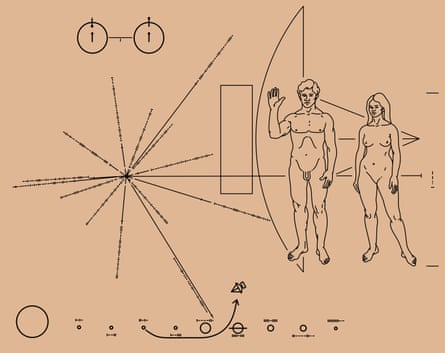
The concept behind this is to convey messages through a scientific symbolism that it was hoped could be understood by aliens. The collection of lines (representing binary) give the woman’s height, thanks to information deduced from the pair of linked circles (representing a process undergone by hydrogen atoms) at the top of the plaque.
And as for that starburst, it pinpoints Earth’s location. Each line represents the distance and direction to a series of pulsars – collapsed stars that flash out regular blasts of electromagnetic energy. The timing, shown by binary numbers on each line, indicates the pulsar’s frequency, based on timing implied by the hydrogen diagram. Some have worried that this map opens us up to alien invasion. Luckily, part of the pulsar data is slightly off. Even if it were precise, though, this is a message in a bottle on a galactic scale, and we are unlikely to be found.
Stellar nursery
Leaving Pioneer behind, we travel on to the Orion nebula. From Earth, this forms part of the familiar constellation of Orion, the hunter . We need to remember, though, that the apparent connection between a constellation’s stars is illusory: they are not actually linked. For example, Alnilam, the middle star of Orion’s belt, is about 1,342 light years from Earth, whereas Bellatrix, the top right of Orion’s main stars, is just 245 light years distant. A light year is the distance light travels in one year – around 5.9tn miles (9.5tn km).

From Earth, the nebula looks like a small fuzzy patch in Orion’s sword, about 1,500 light years away. This is where new stars are born out of the dust and gas, and it’s the closest-known nursery to us. It’s about 20 light years across and contains approximately 1,000 new stars forming. It’s a slow process , as the particles that make up the cloud – mostly hydrogen atoms – are slowly pulled together by gravity. As they squash ever closer, the atoms warm up, and with enough matter, the pressure and heat become so intense that nuclear fusion begins.
The young star begins to convert hydrogen into helium, releasing energy as it does. Stars need to be huge for this to happen. Our sun, for example, a middling star, contains 99.8% of the matter in the solar system and fuses about 600m tonnes of hydrogen every second.
Other worlds
Our next stop is a protoplanetary disc: a rotating disc of dense gas surrounding a young star. On the whole, matter in the universe spins around. Because the clouds of gas and dust giving rise to stars are not evenly distributed, the material starts to rotate as gravity pulls it inward. Just as a skater’s spin speeds up when they pull in their limbs, thanks to the conservation of angular momentum (the oomph with which something rotates), so the spin of the star accelerates as matter piles in.
The central star has so much gravitational attraction that it remains spherical, but matter further out from the centre flattens into a rotating disc, just as a ball of pizza dough does as it is spun. In both cases, there is attraction towards the centre, but not at 90 degrees to the direction of rotation, producing the flattening. Material in the disc eventually coalesces because of gravity, producing planets.
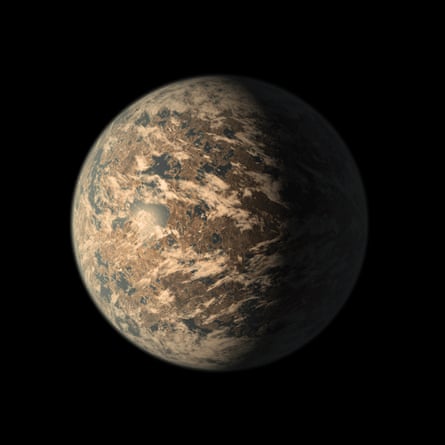
On our tour, we can now visit an extrasolar planet – more than 5,000 of these had been discovered by the 2020s. Trappist-1e is one of the most likely sites for life from the early 21st century discoveries. It’s rocky and similar to Earth in size. Though not certain in the 2020s, it appears to have liquid water and an Earth-like atmosphere. Admittedly, its relationship with its star is nothing like Earth: it completes its orbit in six days, being located about 15 times closer to its star than Mercury is to the sun. However, this is a very low-energy star, making Trappist-1e a viable potential home for life.
The neighbourhood of our next destination will definitely not be habitable for long: Betelgeuse, the bright red star at the top left of Orion. In the 2020s, it was known that this red supergiant would go supernova during the following 100,000 years. We’re lucky – our fictional starship has arrived just as Betelgeuse undergoes this catastrophic change.
A supernova is a massive stellar explosion. From the Earth, this means some previously invisible stars flare into brightness – hence the term “nova”, from the Latin for “new”. Betelgeuse has always been visible – but it’s about to get much brighter. Its fusible material is running out. As heavier elements form, there comes a point when fusion takes more energy than the star can provide and it switches off. No atoms heavier than iron can be produced this way.
Up to now, the energy of nuclear reaction has fluffed up the star. Now, its inner parts collapse to form a neutron star – so dense that one teaspoon has a mass of around 100m tonnes. When that core collapses, it bounces back, blasting away the outer layers of the star, providing so much energy that heavier elements form. Over centuries, those outer layers will form a different type of nebula – a glowing remnant, such as the Crab nebula.
Our final stop before heading home enables us to see our galaxy, the Milky Way. This is partially visible from Earth, but is hard to see in built-up areas thanks to light pollution. In a dark sky it appears as an arch of fuzzy light. What we see from home is the view from within. But here, from the outside, we see it in all its glory.
Back in the 2020s we had never seen the Milky Way from the outside, but it was known to be a vast spiral about 100,000 light years across, with a central bar of densely packed stars. Despite being just one of approximately 200bn galaxies within the limits of the observable universe, the Milky Way is home to about 100bn stars.
Though we can’t see something as small as the sun from here, we can place it roughly near the edge of one of the outer spiral arms.
With a final jump, we return to Earth. It’s tiny in the perspective of the galaxy, let alone the universe. Yet this is a special place. Planets like ours, with so many things right for life, are rare. A whole host of features have come together.
Earth sits in the “Goldilocks zone” – not too hot nor too cold for liquid water, seemingly essential for life. Our unusually large moon stabilises the Earth’s orbit, and the Earth’s active surface, a result of the moon’s formation, helps keep our environment in balance. We have a stable star, plus a strong magnetic field and ozone layer protecting Earth from deadly solar radiation. Some say that Earth isn’t anything special. But it truly is, and we need to keep it that way.
Brian Clegg is the author of Interstellar Tours : A Guide to the Universe from Your Starship Window , published by Icon Books (£18.99). To support the Guardian and Observer order your copy at guardianbookshop.com . Delivery charges may apply
- The Observer

Voyager 1 transmitting data again after Nasa remotely fixes 46-year-old probe

Cosmic cleaners: the scientists scouring English cathedral roofs for space dust

Russia acknowledges continuing air leak from its segment of space station

Uncontrolled European satellite falls to Earth after 30 years in orbit

Cosmonaut Oleg Kononenko sets world record for most time spent in space

‘Old smokers’: astronomers discover giant ancient stars in Milky Way

Nasa postpones plans to send humans to moon

What happened to the Peregrine lander and what does it mean for moon missions?

Peregrine 1 has ‘no chance’ of landing on moon due to fuel leak
Most viewed.
- Virtual Events
- BBC Astronomy
- How we review
- Telescope mounts
- Finderscopes
- Astronomy accessories
- Top astro kit
- Astronomy for beginners
- Astronomy DIY
- Buyers' guides
- Online Planetarium
- Astronomy news
- Astrophoto guides
- Send us your images
Want to go to space? Here's how you can
Have you ever wanted to travel into space? It's theoretically possible. Here are the various options, and how much it will cost you.
Ezzy Pearson
Have you ever wanted to go to space? Is it your dream to leave Earth behind and travel the cosmos? These days getting to space is becoming more of a reality for non-astronauts, even if the cost of doing so remains astronomical.
Go back 60 years and the idea of anyone going into space was little more than a dream. Today, more than 550 people have achieved this ambition, journeying beyond our planet and into low Earth orbit.
For decades it’s been governments footing the bill for training and flying astronauts, but that could all be about to change as space tourism becomes more of a reality over the coming years.
Private spaceflight is on the verge of being able to regularly carry private passengers into space, allowing anyone who wants to travel to the stars to do so – provided they have the money, that is.
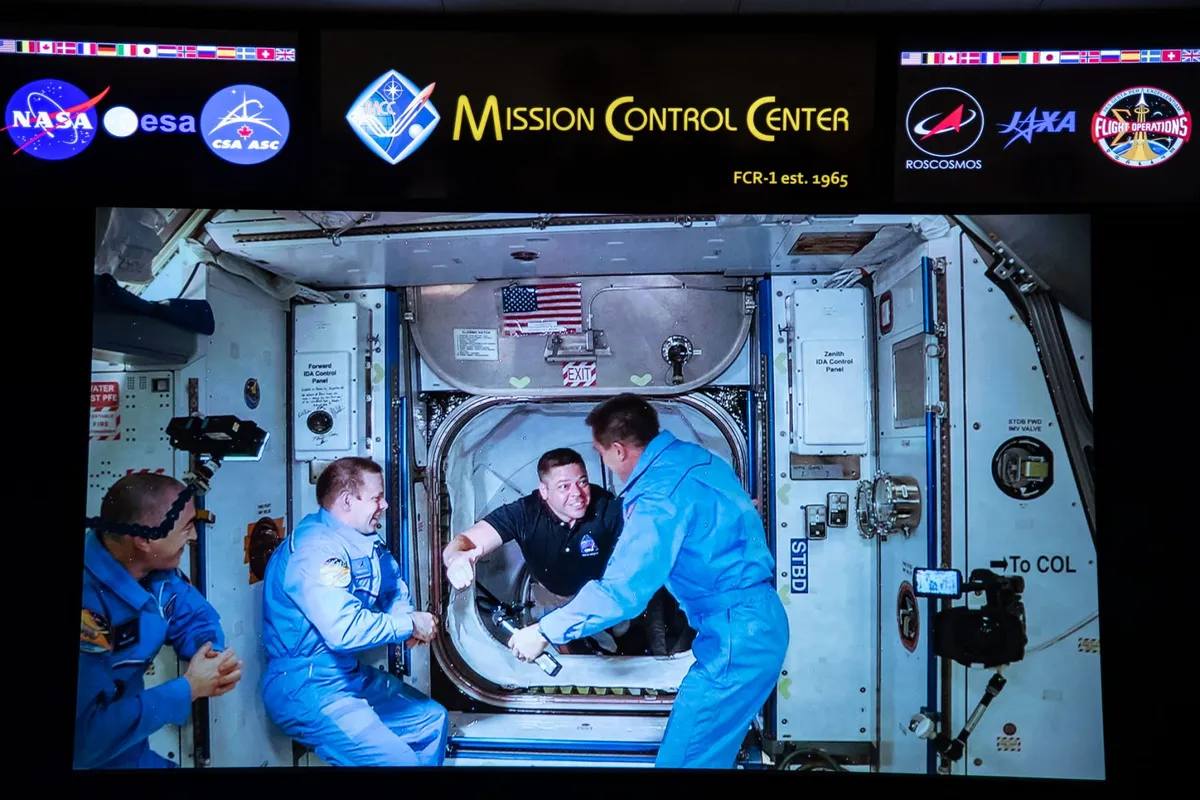
What companies are sending tourists to space?
The private company closest to sending people into space is SpaceX. In fact, it has already done so, having completed the first successful crewed flight of the Crew Dragon modules in August.
Rival Boeing isn’t far behind and hopes to have its own Starliner spacecraft certified for human spaceflight by the end of 2021.
Both companies are remaining tight-lipped about their fees, but a 2015 NASA estimate put the cost of a round trip ticket to the International Space Station (ISS) on a Crew Dragon or Starliner module at around $58 million.
Though both companies built the spacecraft to ferry astronauts to and from the ISS, they also plan on selling flights to whoever can afford it, be they academic institutions hoping to conduct research in orbit or deep-pocketed individuals wanting to take the ultimate trip.
Getting into space: your options
Visit the international space station.

NASA is already anticipating the coming boom of private passengers, announcing back in March that the American space manufacturer Axiom would be building an ISS module to accommodate them.
Axiom is also helping to facilitate flights to the station. Their first, which will take 3 private astronauts to the International Space Station , is planned for mid 2021. There’s still a seat going spare but you’ll have to pay the $55 million price tag on the ticket.
If your budget can stretch to the billions rather than the millions, however, you can always approach private space exploration companies direct for something a little more bespoke than an off-the-shelf flight.
Take a trip around the Moon
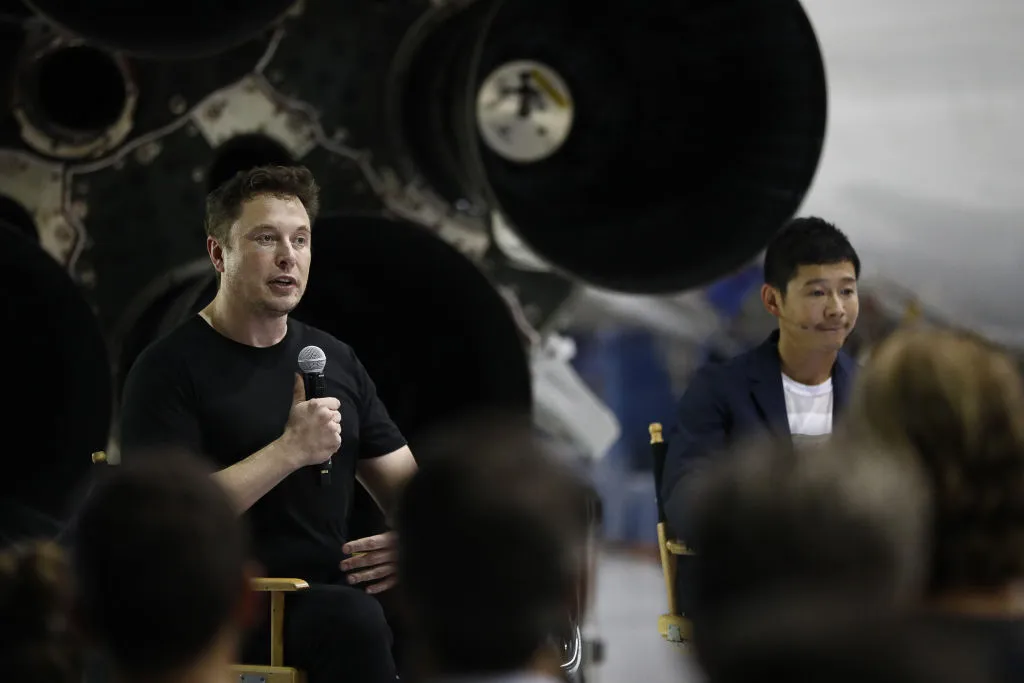
Space X is currently working with Japanese billionaire Yusaku Maezawa on such a mission, called #dearmoon , which will send 6 to 8 passengers on a flight around the Moon.
Maezawa is even giving away his seats, but you’ll have to be a world-class artist to stand a chance of getting one; his plan is for all the passengers to create works of art attempting to convey the experience of being in space to the world.
Reach 'outer space' with Virgin Galactic
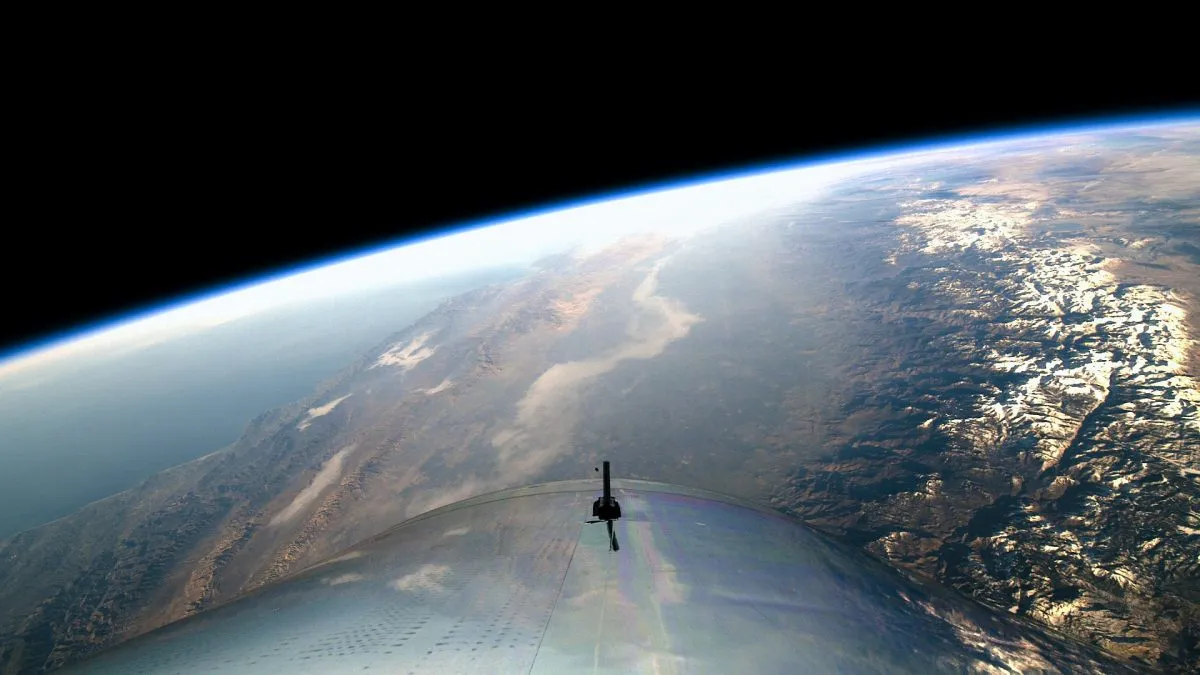
At the other end of the fee scale, relatively speaking, is the option of taking a sub-orbital flight with Virgin Galactic .
The company promises passengers three things: to cross the boundary into outer space 100km above Earth’s surface; to let them see the curvature of Earth; and at least 5 minutes of free-floating weightlessness.
After years of postponements, founder Richard Branson has announced that he hopes to take his own first flight in early 2021, before working down the list of 600 people who have purchased a ticket at the early-bird price of $250,000.
Become an astronaut
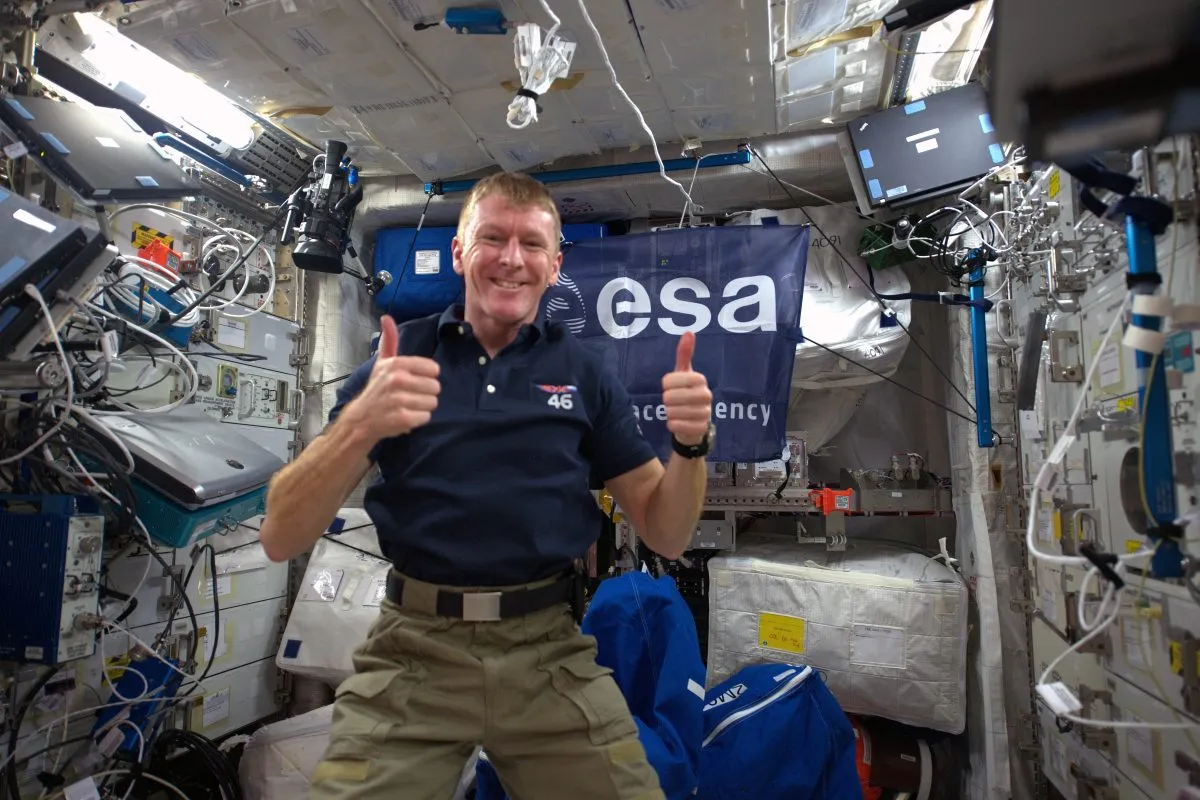
While it’s nice to daydream, the reality is that most of us could never afford even the 6-figure option. There is one more possibility, however: become a professional astronaut.
All you need is excellent physical health; a masters in a physical science, engineering or medicine; several years of work experience; a decorated military history; or over 1,000 hours of flight experience. Easy, eh?
If you’re applying to NASA, who select around a dozen candidates every few years, then you’ll need to have US citizenship. For more on this, read the guide to becoming a NASA astronaut .
For Europeans there might be a bit more of a fight, as the European Space Agency (ESA) hasn’t selected a new class of astronauts since 2008, when 8,414 people applied for just 6 places.
Rumour has it that the agency will be sending out a call for new astronauts in 2021, so it might be time to start working on the CV.For more on this, read the ESA guide to becoming an astronaut .
Which non-astronauts have been to space?
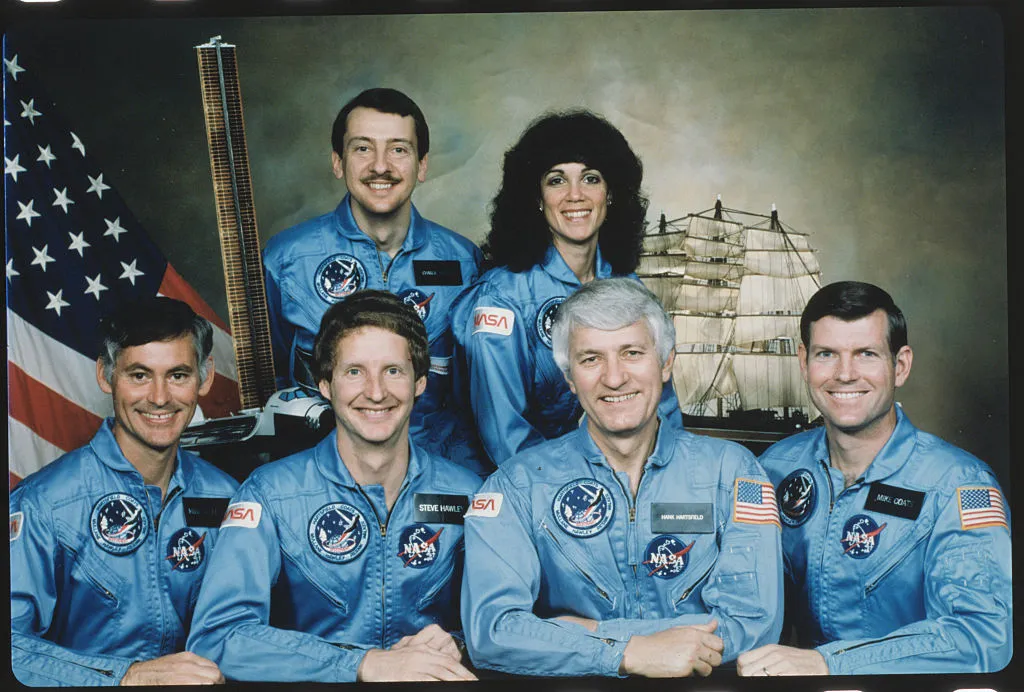
In 1984, American citizen Charles D Walker became the first non-government sponsored person to reach space.His employer, aerospace company McDonnell Douglas, paid for him to fly on three Shuttle missions.
NASA charged just $40,000 per flight, though the company spent around $20 million of its own money training him.
Most private spaceflights, however, were not flown on NASA's Space Shuttle but on the Russian Soyuz .
In the 1990s, the Soviet Union’s wider financial problems left its space agency with a shortfall in its ledger, making it more than willing to accommodate paying customers.
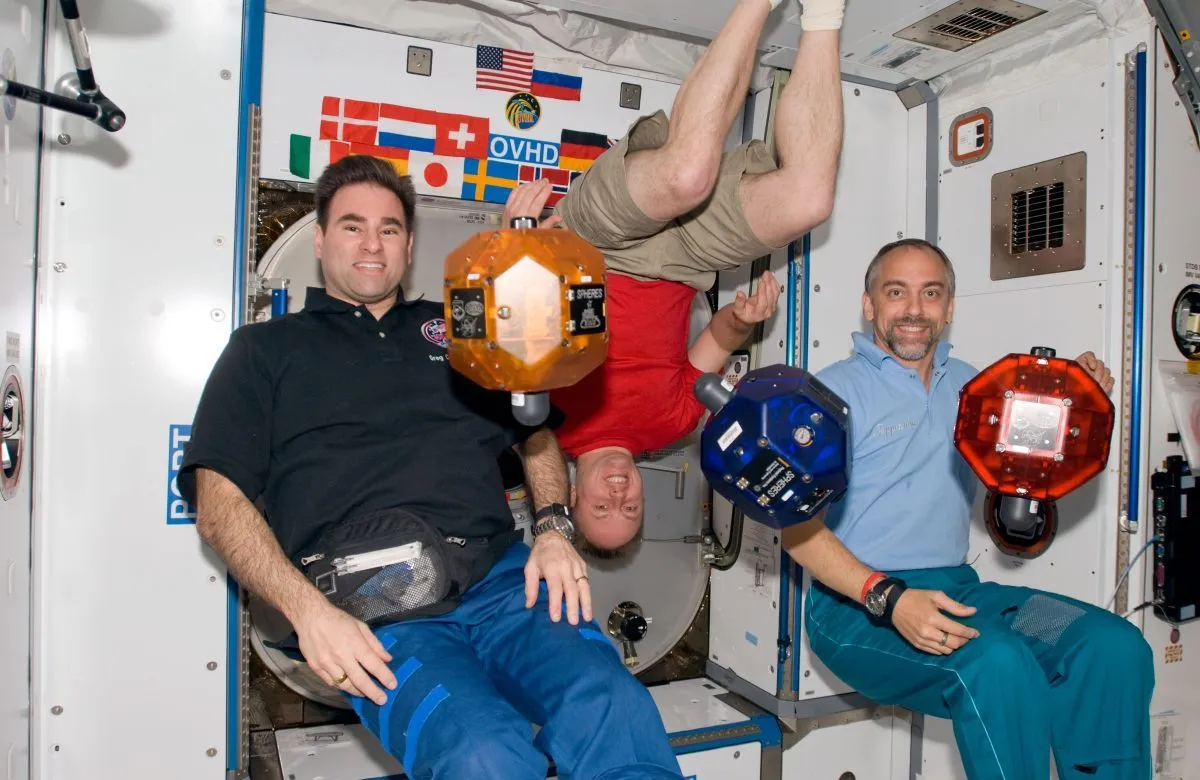
In 1990, a Japanese broadcasting company paid for reporter Toyohiro Akiyama to fly to the Mir space station, and a few years later Helen Sharman had her flight paid for by various sponsors, becoming the UK’s first astronaut.
In 1998, Space Adventures began working with the Russian space agency to broker future flights to the International Space Station (ISS).
Since then, the company has trained and flown seven individuals, including the second person to wear the British flag in space, gaming entrepreneur Richard Garriott.
In all these flights, the individuals did more than just float around, looking at the view.Instead, they helped to conduct research and experiments, or put on outreach events to educate those back on Earth.
Ezzy Pearson is BBC Sky at Night Magazine's News Editor. This guide originally appeared in the November 2020 issue of BBC Sky at Night Magazine .
Share this article

Science journalist

- Terms and conditions
- Manage preferences
So You Want to Be a Space Tourist? Here Are Your Options
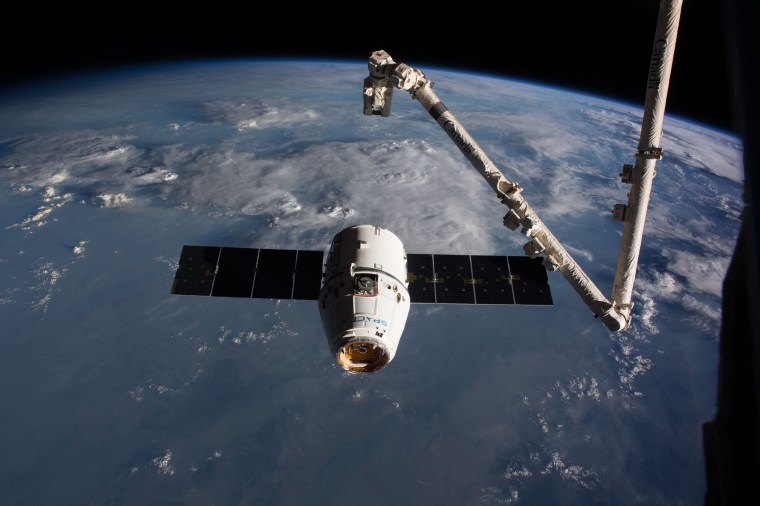
Though we’ve been living in the Space Age for more than half a century, going into space remains an extreme rarity. Fewer than 600 people have gone above the Kármán line — the point, about 62 miles above Earth, that marks the beginning of space — and all were put there by the U.S. or another nation's government.
But the rise of private spaceflight companies like Virgin Galactic and Space X means that the final frontier may soon be within reach of a great many more of us. The firms have announced plans to put private astronauts, a.k.a. space tourists, on orbital or suborbital flights within the next few years.
Initially, the cost of a ride on one of these rockets will be hundreds of thousands of dollars at a minimum. That puts the experience within reach of only the wealthiest people. But advances in rocket and capsule design are expected to lower the price to the point that people of more modest fortunes are able to afford a ticket.
Some projections put the global space tourism market at more than $34 billion by 2021 .
What Space Tourists Can Expect
What exactly is in store for space tourists? The excitement of a rocket ride and a chance to experience weightlessness, for starters. And the bragging rights are hard to beat. But some say the biggest benefit of going into space is getting a dramatic new outlook on life on the fragile blue marble we call home. It’s a perspective shift that could have profound implications not just for individuals but also for society at large.
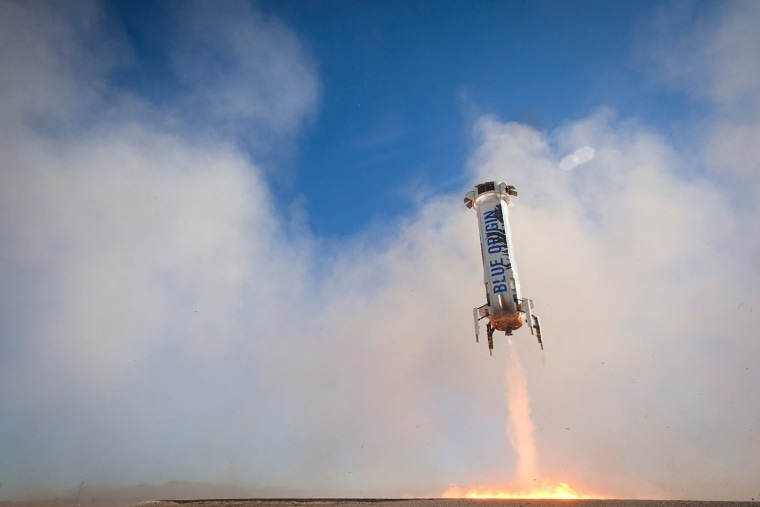
“I personally believe the planetary perspective is going to be crucial to solving humanity’s biggest challenges over the next century,” says Virgin Galactic CEO George Whitesides. “I’m inspired that we’ll take people up so they can experience that view, which is said to change your world view in a fundamental way.”
Related: NASA Said No to My Astronaut Dream, So I Found Another Way
Billionaire computer engineer Charles Simonyi flew to the International Space Station aboard a Russian spacecraft with the assistance of a Vienna, Virginia-based firm called Space Adventures, and he echoes that sentiment. “It’s great to go to space just because it’s there,” he says. “But I think space is our destiny and we will discover great benefits from it.”
Flying High
Virgin Galactic plans to offer suborbital jaunts into space, with customers being treated to six minutes of weightlessness along with that one-of-a-kind view. The Las Cruces, New Mexico-based company says more than 600 customers have signed up, including Leonardo DiCaprio, Katy Perry, Ashton Kutcher, and superstar physicist Stephen Hawking. The price of a ticket stands at $250,000, with registration open for anyone who has that kind of extra cash on hand.
On June 1, Virgin successfully tested SpaceShipTwo Unity . The six-passenger spacecraft glided more than nine minutes to the ground after being released from an airplane flying at 50,000 feet. The company plans to make several more unpowered tests before allowing Unity’s rocket engine to fire up so that, following its release from the plane, it can soar into space.
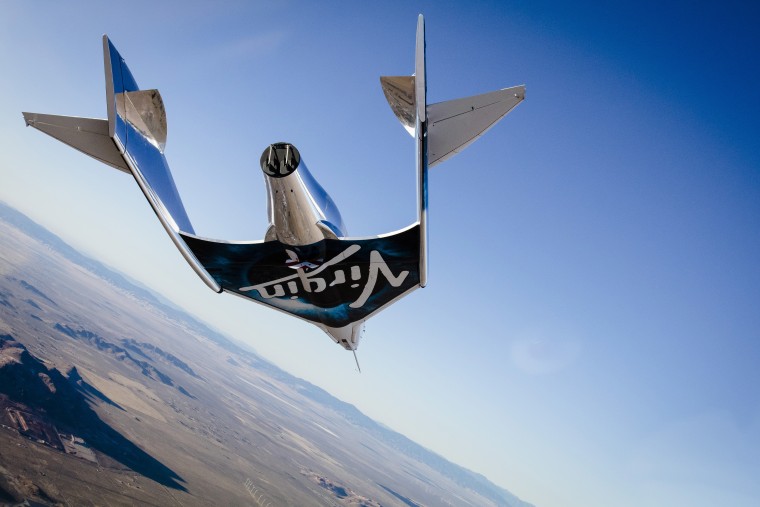
The company has been promising flights since unveiling SpaceShipTwo in 2009. But a series of bruising setbacks, including a 2014 crash that claimed a test pilot’s life, extended the craft’s test phase.
Virgin CEO Richard Branson said on July 5 that he hopes to see sp ace tourists flying on Virgin by the end of 2018 . But other executives at the firm seem reluctant to commit to that. As Whitesides put it to NBC News MACH, “Once when we’re at a place where we’re comfortable with powered flights, we’ll be ready to begin commercial operations.”
Downs and Ups
Midland, Texas-based XCOR Aerospace sought to offer suborbital flights similar to those envisioned by Virgin Galactic. But in 2016, the company halted development of its space-plane, Lynx. On July 5, it announced that all remaining employees had been laid off but stopp ed short of saying it was out of business .
Related: Take a Tour of NASA's Full-Size Mockup of the International Space Station
Between 2001 and 2009, Space Adventures arranged for seven paying customers (including Charles Simonyi) to blast into space for a stint aboard the ISS. Each of these private astronauts got to the station aboard a Russian Soyuz capsule. Space Adventures has unspecified plans to send up more customers but can’t now. Since the end of NASA’s Space Shuttle program in 2011, all seats on Soyuz have been filled by American and Russian astronauts.
Amazon CEO Jeff Bezos has been eyeing the space tourist market with his private space company, Blue Origin. The company recently posted computer renderings of the opulent interior of its reusable New Shepard capsule configured with six plush leather chairs and six enormous windows.
Blue Origin has yet to say exactly when flights might begin or how much they would cost. Bezos said in March that he’d like to have his first customer flights next year. The company has a sign-up form for those interested in reserving a seat.
Of all companies offering, or expecting to offer, flights into space, SpaceX may have the most compelling story. Earlier this year, CEO Elon Musk announced that the company had accepted payment from two customers for a weeklong flight around the moon and back to Earth, largely retracing the path taken by Apollo 8 astronauts in 1968.
Musk has said that the mission could come as soon as 2018. Some are dubious, however, given SpaceX’s reputation for offering overly optimistic schedules. How much the customers paid for the flight is unknown, but estimates have ranged from $80 million to $175 million per seat .
SpaceX has also announced the even more ambitious goal of sending colonists to Mars starting in 2025. Musk has said that once the company is able to build its massive 100-person Mars Colonial Transporter spacecraft, a trip to the Red Planet will cost about $500,000 — roughly the price of a middle-class house in California — with the goal of eventually bringing the price down to $100,000.
Almost Space
Tucson, Arizona-based World View Enterprises has announced plans to send passengers to an altitude of 100,000 feet in a luxury gondola suspended from a gigantic helium balloon. It's not quite space, but at that altitude, it’s possible to see the blackness of space and the curvature of the earth. Eight customers would spend two hours ascending, two hours in cruise, and another hour or two returning to the ground.
Though lacking the cachet of true spaceflight, the World View flights promise a more refined experience; customers would be able to clink champagne glasses while taking in the view from enormous picture-frame windows and posting their photos to social media using onboard Wi-Fi.
Related: This Aspiring Astronaut Has Taken Some Dramatic Steps to Make His Dream Come True
World View says it hopes to begin manned testing in 2018 but offers no specific dates for the tourist flights. A ticket is projected to cost $75,000. The company’s co-founder and chief technology officer, Taber MacCallum, says the target customer is “the Baby Boomer who’s already bought their Ferrari and bought their third house and are looking for an experience to talk about and share.”
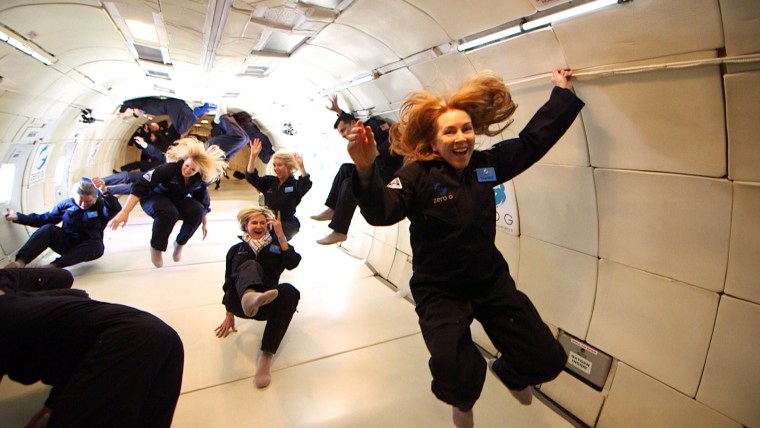
Finally, there’s Zero Gravity Corporation , an Arlington, Virginia-based company that already offers flights aboard a specially modified Boeing 727 that dives steeply to give paying passengers brief periods of weightlessness. As with the World View balloons flights, these parabolic flights aren’t actually trips into space. But with a ticket for the experience running a relatively modest $5,000, it might be the cheapest way to get a sense of what it’s like above the Kármán line.
Zero G flights take off weekly from airports across the U.S., including Orlando Sanford International near Orlando, Florida, McCarran International near Las Vegas, and Moffett Federal Airfield near San Francisco.
FOLLOW NBC MACH ON TWITTER , FACEBOOK , AND INSTAGRAM .
.png)
- Sent Into Space
- Apr 27, 2023
How to Go to Space | A Guide to Space Tourism

Always wanted to go to space? You're in luck. Space travel is quickly becoming more accessible than ever, with Virgin Galactic and Blue Origin among those offering civilians the chance to buy a ticket to space.
Whether on a commercial space flight, as a trained astronaut, or after your passing, there are a variety of ways that you can go to space. We're exploring some of the ways you can experience space travel - with one of them costing less than the average UK holidaymaker’s budget!
1. Be a Billionaire
In the domain of space travel, it certainly helps if you're a billionaire - or at least a multi-millionaire. According to an article from Forbes, ticket prices can be over $55 million, depending on the nature of the flight. But let's say you have the money, and you really want to go - here are some of your options:
Space Tourism
Space tourism refers to private recreational space flights . While the phrase 'space tourism' may have you picturing yourself lounging by a pool with an astronaut's helmet on, this isn't quite right (at least for the time being). There are actually three types of space tourism: orbital, suborbital, and lunar.

Lunar tourism, as you may have guessed, refers to private space trips which orbit or land on the moon. You'll have to wait to do this, though - there are no tickets available to the public as of yet. If you're not fussed about the moon, there is one form of space tourism you can already sign up for - suborbital space tourism.
Suborbital Space Tourism
Ready to sign up? Sounds great! If you have a spare $450,000, that is. Virgin Galactic began offering reservations for future flights in February of last year for just under half a million dollars. It's important to understand what 'suborbital flight' means, though - these trips may cross the boundary of space, but they don't travel fast enough to stay there. Virgin Galactic's first crewed flight only experienced 4 minutes of weightlessness, and it was actually debated whether or not this flight reached space.
If you're looking for a slightly more budget-friendly option, look no further. World View is currently accepting deposits for their 6-8 hour space flights, taking off from destinations all over the globe. Tickets are currently priced at $50,000 each, with a $500 deposit. This is much more affordable than a Virgin Galactic flight, and World View aims to start launching in 2024.
As World View flights are suborbital, their crafts only enter the first region of space, known as Near Space. Their craft are still considered a spacecraft by the Federal Aviation Administration due to the high altitudes they reach. And hey - although you won’t experience the zero-gravity effect often associated with space travel, you will witness similar views to those who have travelled to the International Space Station and other manned orbital vessels. Expect to see the Earth's curvature with the blackness of space around you - and for an affordable $50,000, this is certainly an option you should consider if you want to schedule in a trip soon.
A suborbital journey might differ from your imagined image of a space flight. While these trips do cross the boundary of space, they don't travel at fast enough speeds to stay there. If you have a longer trip in mind, orbital space travel may be the way to go.
Orbital Space Tourism
While tickets or reservations aren't widely available yet, public access to orbital space trips is getting closer every day. Keep an eye on SpaceX, Virgin Galactic and Blue Origin for all your orbital space travel needs. While travelling on an orbital space flight will inevitably come with a hefty price tag, the trips could last days - so if you have the money, you could soon be considering space for your next holiday destination.
Buy a ticket to stay on the International Space Station
If you're looking to one-up the standard space tourist, look no further. A ticket aboard the Axiom Mission 1, which included a stay at the ISS, reportedly cost $55 million. This is another option for those looking for an out-of-this-world experience - if you have a few million to spare.
2. Experience Space on the Vomit Comet
For those of you willing to compromise on an actual space experience, zero gravity could be an option that suits you and your pocket. While its nickname may not sound appealing, the vomit comet is merely a reduced-gravity aircraft used in NASA training programmes. These crafts do not actually go to space, but instead simulate the weightlessness of a space flight's zero gravity environment, so you can experience the sensation of real space travel for a fraction of the price of a Virgin Galactic flight.

The best part is that these aren't just for astronauts in training, and you can have a go for as little as £4000. These are much more affordable options compared to actual space flights, if not actually going to space isn't a deal breaker for you. But before you go, be warned - NASA's reduced-gravity aircraft was nicknamed the vomit comet for a reason, so it's maybe best avoided if you get travel sick.
3. Scatter your ashes in space
You could consider a slightly different approach - travelling to space after you have passed away. How ? Have your ashes scattered in space.

UK company Aura Flights specialises in scattering ashes in space, taking you or your loved ones on a breathtaking final journey. While this option may not necessarily let you experience space in the way you have in mind, it is certainly an exciting way to have your ashes scattered, and unlike most of the previous options, it would allow you to not only see space but actually be in space. Your ashes would travel around the globe for three to six months before arriving back on Earth as snowflakes -so your loved ones can rest assured that you'll be with them wherever they go.
So, yes, this option doesn't involve going to space in the way you might be imagining, but it is a beautiful and unique way to be remembered after you're gone - and, unlike every option we've covered so far, it's more affordable than you'd think, as it's cheaper than the average traditional funeral service. If you're interested in a memorial flight for yourself or for a loved one you can find out more on the Aura Flights website .
4. Start your own space agency
If you're really sold on going to space but don't want to pay the likes of Richard Branson and Elon Musk to take you there, you could start your own space agency and take yourself into space instead of paying someone else to do it for you. Of course, this involves some knowledge of how you get yourself to space in the first place.

If you’re serious about starting a space agency it’s going to require careful planning, a dedicated team, and significant investment. You’ll need to identify and acquire experts in various fields and secure funding to invest in infrastructure such as spacecraft, launch vehicles, and ground support systems. Building partnerships with other space agencies, research institutions, and private companies is also essential.
Regulatory compliance and adherence to international treaties and agreements are crucial in the space industry, so you must ensure that your team is knowledgeable in these areas and that your plan includes measures for regulatory compliance. If you have the resources to follow these steps - and a bit of luck - you should be on track to running a space agency capable of sending yourself and others into the great unknown.
At Sent Into Space, we've completed more than a thousand space launches - but we don’t take people to space (yet!). Instead, we specialise in unmanned spaceflight for both creative and scientific purposes . We provide a variety of space launch services from advertising and marketing services to environmental validation and satellite component testing.
4. Join the Space Force

The United States Space Force (USSF) is the space branch of the US Armed Forces. If you happen to be a US citizen looking to join the military and have a specific interest in space, the USSF might be a good fit for you. However, if it's going to space you're after, this may not be the easiest option - the force isn't planning on sending troops to space any time soon, and any member of the Space Force who wants to go to space has to do so by winning a spot in NASA's astronaut corps - which leads us to our next point.
5. Go to space as a trained astronaut
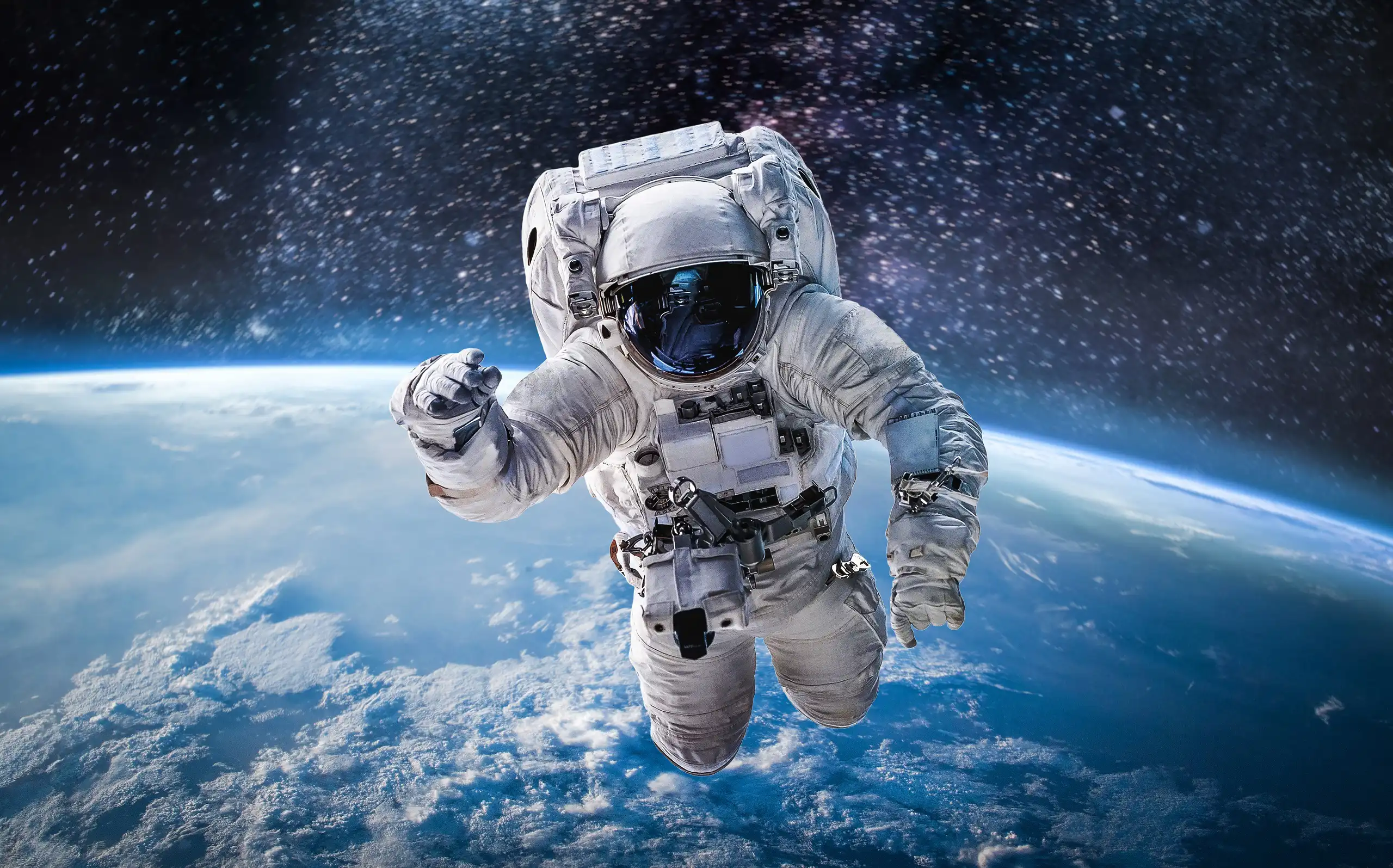
So you're not a multi-millionaire, billionaire, or engineer; a reduced-gravity aircraft isn't exciting enough for you; and even if you can join the US Space Force, you won’t be going to space anytime soon. But you still want to go - so how? At this point, you should probably just train to be an astronaut. Unfortunately, it isn't necessarily as simple as it sounds. According to the National Careers Service, anyone aged 27-37 can apply for astronaut training with either the European Astronaut Corps or NASA, depending on your citizenship - but there are several steps you need to take to qualify:
While not an essential part of the application criteria, it helps your chances if you're a trained pilot. Ideally, you'll be one with experience flying a high-performance aircraft - 1,000 hours of experience, to be specific. That amounts to over 41 days of flying, which is almost 6 weeks. You'd better get going!
Get a degree, or two
To apply, you need to have an undergraduate and master's degree in a relevant subject, such as engineering, physics, mathematics, or medicine. Yes, this takes time (and money), but it will at least prepare you for the terrestrial activities you'll spend most of your time doing as an astronaut - such as writing reports, training, and attending meetings.
A NASA astronaut's advice
NASA astronaut Anne McClain wrote an article for NASA about her experience and advice in getting selected to become an astronaut. She states that those most apt for the job are adaptable, trustworthy, tenacious, and detail-oriented - qualities which most job applications would ask for. This sounds easy enough, but make sure you're aware of the reality of the job: Claire says that most astronauts only go to space once every 5-7 years! But when you do go, it may be for a while - Claire was stationed on the ISS for over six months. The job certainly requires a level of commitment, so maybe talk this one through with your partner, children or parents if you're interested.
Now, I know you've been waiting for it, so here's the catch, straight from the horse's mouth: the reality is that even if you meet all the criteria, it's hard to get picked to be an astronaut . In 2013, just eight of more than six-thousand applicants were chosen; in 2017, a class of eleven graduated - of over eighteen-thousand applicants. In light of this, here's Claire's most important piece of advice: 'Don’t do things so you can put them on a resume, do things because you have a passion for them ... If you do all these things just to be selected then are not selected, it can be very disappointing. But if you do what you love, you will not only perform better, but you will be happier too.'
Basically, you can't really just decide to be an astronaut. It takes a lot of time and effort to even be eligible to apply, and then if you're lucky enough to be one of the few chosen applicants, you have to complete the two-year training programme before you can even think about actually going to space. But if you really want to go to space, and can't afford a ticket, it's probably your best option - plus, you'd actually get paid for this one!
With that, we've reached the end of our list. Now you hopefully have a better idea of how you can go to space, and maybe you even know which of these options you'll try first!
In all seriousness, going to space is an incredible feat which, until fairly recently, seemed impossible other than in science fiction. The fact that commercial space flights are even a possibility, even if only for the super-rich, is (as they say) a giant leap for mankind. Even though it may cost a lot of money now, hopefully, the day when space travel is a little more affordable isn't too far off. Until then, we'll keep focusing on unmanned space flights at Sent Into Space - if you're interested in a space launch for marketing or scientific purposes, don't hesitate to get in touch .
Recent Posts
Paving the way for human spaceflight | Remembering Joseph Kittinger
LGBTQ+ People in the Space Industry | Pride Month
Comentarios

What is a light-year?
Light-year is the distance light travels in one year. Light zips through interstellar space at 186,000 miles (300,000 kilometers) per second and 5.88 trillion miles (9.46 trillion kilometers) per year.
We use light-time to measure the vast distances of space.
It’s the distance that light travels in a specific period of time. Also: LIGHT IS FAST, nothing travels faster than light.
How far can light travel in one minute? 11,160,000 miles. It takes 43.2 minutes for sunlight to reach Jupiter, about 484 million miles away. Light is fast, but the distances are vast . In an hour, light can travel 671 million miles.
Earth is about eight light minutes from the Sun. A trip at light-speed to the very edge of our solar system – the farthest reaches of the Oort Cloud, a collection of dormant comets way, way out there – would take about 1.87 years. Keep going to Proxima Centauri, our nearest neighboring star, and plan on arriving in 4.25 years at light speed.
When we talk about the enormity of the cosmos, it’s easy to toss out big numbers – but far more difficult to wrap our minds around just how large, how far, and how numerous celestial bodies really are.
To get a better sense, for instance, of the true distances to exoplanets – planets around other stars – we might start with the theater in which we find them, the Milky Way galaxy.
Our galaxy is a gravitationally bound collection of stars, swirling in a spiral through space. Based on the deepest images obtained so far, it’s one of about 2 trillion galaxies in the observable universe. Groups of them are bound into clusters of galaxies, and these into superclusters; the superclusters are arranged in immense sheets stretching across the universe, interspersed with dark voids and lending the whole a kind of spiderweb structure. Our galaxy probably contains 100 to 400 billion stars, and is about 100,000 light-years across. That sounds huge, and it is, at least until we start comparing it to other galaxies. Our neighboring Andromeda galaxy, for example, is some 220,000 light-years wide. Another galaxy, IC 1101, spans as much as 4 million light-years.
Based on observations by NASA’s Kepler Space Telescope, we can confidently predict that every star you see in the sky probably hosts at least one planet. Realistically, we’re most likely talking about multi-planet systems rather than just single planets. In our galaxy of hundreds of billions of stars, this pushes the number of planets potentially into the trillions. Confirmed exoplanet detections (made by Kepler and other telescopes, both in space and on the ground) now come to more than 4,000 – and that’s from looking at only tiny slices of our galaxy. Many of these are small, rocky worlds that might be at the right temperature for liquid water to pool on their surfaces.
The nearest-known exoplanet is a small, probably rocky planet orbiting Proxima Centauri – the next star over from Earth. A little more than four light-years away, or 24 trillion miles. If an airline offered a flight there by jet, it would take 5 million years. Not much is known about this world; its close orbit and the periodic flaring of its star lower its chances of being habitable.
The TRAPPIST-1 system is seven planets, all roughly in Earth’s size range, orbiting a red dwarf star about 40 light-years away. They are very likely rocky, with four in the “habitable zone” – the orbital distance allowing potential liquid water on the surface. And computer modeling shows some have a good chance of being watery – or icy – worlds. In the next few years, we might learn whether they have atmospheres or oceans, or even signs of habitability.
One of the most distant exoplanets known to us in the Milky Way is Kepler-443 b. Traveling at light speed, it would take 3,000 years to get there. Or 28 billion years, going 60 mph.
Discover More Topics From NASA
Search for Life

Black Holes

HALO Space unveils capsule design for stratospheric space 'glamping'
A Spanish balloon company plans to begin flying paying space tourists in 2026

LONDON — Stratospheric balloon company HALO Space plans to offer aspiring space travelers the space tourism equivalent of glamping. Instead of tight space suits and stomach-churning G-forces typically attached to a rocket flight, the company's pressurized capsule, attached to a helium-filled balloon, will offer comfy swivel seats, giant windows and a selection of fine cuisine.
The Spanish-headquartered firm unveiled the design of the 3.9-ton (3.5 metric tonnes) Aurora capsule at an event in London on Wednesday, April 10, and said it hoped to begin commercial operations in 2026.
Unlike suborbital space tourism companies such as Virgin Galactic and Blue Origin , HALO Space won't be taking passengers high enough to experience weightlessness . The flight will be a rather leisurely affair lasting up to six hours, almost four of which will be spent hovering in the stratosphere some 22 miles (35 kilometers) above Earth's surface. There, high above the cloud tops, passengers will be able to admire the star-studded blackness of space above, as well as the curvature of the planet shrouded in the atmosphere beneath their feet.
Related: Space Perspective is nearly ready to fly tourists on luxury balloon rides near the edge of space (exclusive)
"When you talk to astronauts, they tell you that this experience of watching the planet from above is really something unique and extraordinary," HALO Space CEO Carlos Mira said in the press conference. "So far, only 650 humans have had the opportunity to experience this overview effect. But you don’t need to go all the way to space to have it. We hope to offer this experience to 1,000 people by 2030."
HALO Space is one of two companies currently readying its balloon technology to begin commercial operations in the next two years. The other is Florida-based Space Perspective, which revealed a completed test model of their Spaceship Neptune in February. HALO Space said they have conducted five test flights with a mockup and plan to take off for the first crewed test in 2025 before commencing flights with paying passengers a year later.
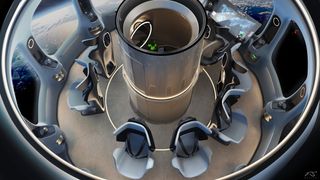
Both companies hope their propositions will attract a wider customer base than the jerky rocket rides of Blue Origin and Virgin Galactic, which propel daredevil clients on short joy rides to the edge of space and back. Reaching an altitude nearly three times higher than stratospheric balloons, Virgin Galactic and Blue Origin's spacecraft experience several-minute-long spells of microgravity before falling back to Earth .
Get the Space.com Newsletter
Breaking space news, the latest updates on rocket launches, skywatching events and more!
At $164,000 per seat, a trip with HALO Space will cost about a third of the price of a Virgin Galactic flight and won't require any advanced medical certifications.
"The take-off will be like being in an elevator," said Mira. "The ascent is soft and gentle, climbing at 12 miles per hour."
The 16-foot-wide (5 meters) and 11.5-foot-tall (3.5 m) capsule will be made of aluminum alloy and composite materials. With an internal space of 30.4 square feet (2.8 square meters), the spaceship could host eight paying passengers, plus a pilot. The internal atmosphere will be maintained by a life-support system similar to that of an aircraft. Yet despite this crammed interior and the extreme environment outside the capsule, passengers should still feel perfectly comfortable and able to relax.
"It's meant to be a sort of a glamping experience," Frank Stephenson, creative director and founder of Frank Stephenson Design who led the design work said at the conference. "It's a high-level experience for these people who are used to flying first class rather than economy."
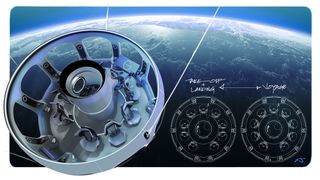
Stephenson, who had previously worked for high-end car makers including BMW, Ferrari, Maserati and McLaren, said the biggest challenge was keeping the capsule light enough so that it can be safely lifted by the balloon while still making sure every aspect of the interior lives up to the expectations of passengers.
“It's very easy to add weight to things and make it super comfortable," Stephenson said. "It's more difficult to reduce weight, reduce material and still make it feel like a very unique experience."
When fully inflated, the stratospheric balloon will be 460 feet (140 meters) tall, towering over the gleaming space capsule. The balloon is designed to detach from the capsule during descent. The capsule will then be brought down to a landing under a steerable parachute. Mira said the balloon technology is inherently safer than rockets loaded with explosive fuels. It also produces no greenhouse gas emissions, making the experience 100 percent compliant with the most stringent environmental protection standards.
— Space Perspective wants to take tourists on balloon rides to the stratosphere
— Space Perspective partners with Exclusive Resorts for balloon rides to the stratosphere
— Space Perspective starts selling seats for balloon rides
"We are using mature technologies," said Mira. "Balloons in general have been around for more than 200 years. This type of balloon, stratospheric balloons, have been around for almost 100 years. The first human went to the stratosphere on a balloon in 1931."
HALO Space plans to fly from spaceports in the Mojave Desert in the U.S., Spain, Australia and Saudi Arabia. The company is currently working with the U.S. Federal Aviation Administration to receive a license before its first crewed flight next year.
Join our Space Forums to keep talking space on the latest missions, night sky and more! And if you have a news tip, correction or comment, let us know at: [email protected].

Tereza is a London-based science and technology journalist, aspiring fiction writer and amateur gymnast. Originally from Prague, the Czech Republic, she spent the first seven years of her career working as a reporter, script-writer and presenter for various TV programmes of the Czech Public Service Television. She later took a career break to pursue further education and added a Master's in Science from the International Space University, France, to her Bachelor's in Journalism and Master's in Cultural Anthropology from Prague's Charles University. She worked as a reporter at the Engineering and Technology magazine, freelanced for a range of publications including Live Science, Space.com, Professional Engineering, Via Satellite and Space News and served as a maternity cover science editor at the European Space Agency.
Watch 2 gorgeous supernova remnants evolve over 20 years (timelapse video)
James Webb Space Telescope discovers some early universe galaxies grew up surprisingly fast
Russia vetoes UN resolution against nuclear weapons in space
Most Popular
- 2 Beavers are helping fight climate change, satellite data shows
- 3 Astronomers just discovered a comet that could be brighter than most stars when we see it next year. Or will it?
- 4 This Week In Space podcast: Episode 108 — Starliner: Better Late Than Never?
- 5 Boeing's Starliner spacecraft will not fly private missions yet, officials say
Waste in space: Why junk in Earth orbit is becoming a huge problem

Who knew space could get crowded? Junk is filling the space above Earth.
In recent weeks, some of that junk has made its way back.
In January 2021, astronauts at the International Space Station pitched a pallet of used lithium-ion batteries over the side to free up some room after NASA determined it would "harmlessly reenter the Earth’s atmosphere," according to Ars Technica .
Three years later, on March 8 of this year, a nearly 2-pound chunk of it may have torn through the roof and two floors of a man's house in Naples, Florida .
On April 2, large fiery streaks of light appeared over a wide area over Los Angeles. It turned out to be space debris, part of a Chinese spacecraft, according to the U.S. Space Command .
What is space junk? We explain:
There are various types of space junk
Space junk basically is any machinery or debris left in space by humans.
Items range in size from large objects such as failed or dead satellites to tiny objects such as paint flecks and nuts and bolts.
Types of debris include:
- Rockets : Portions of the rocket stages used in launches and discarded in low Earth orbit.
- Payload : Satellites that have reached the end of their operational lives.
- Mission-related objects : Items such as hand tools, screws and nuts and bolts. One example is a tool bag that drifted away during a spacewalk in December 2023.
Unable to view our graphics? Click here to see them.
Since the beginning of space exploration in 1957, the North American Aerospace Defense Command (NORAD) has collected data on space debris. It tracked Russia's first satellite, Sputnik, which launched the same year. Since then, NASA, the U.N. Office for Outer Space Affairs and the European Space Agency have tracked thousands of objects orbiting Earth.
NASA estimates 17.6 million pounds − or 8,800 tons − worth of objects are in Earth orbit, according to its most current Orbital Debris Quarterly News. And the number of small satellites is expected to increase.
About 44 tons of space debris falls into Earth’s atmosphere each day. About 95% of it burns up.
Where do you find space junk?
Space junk typically circles the planet in low Earth orbit, or within 1,200 miles of Earth's surface. Orbits are classified in three basic categories:
- High : Most weather and communications satellites, farthest from the planet's surface.
- Medium : Navigation and specialized satellites, intended to observe a specific area.
- Low : The majority of research satellites, such as the fleet of NASA's Earth Observing System .
There are 9,777 objects circling Earth, the majority of which are in low Earth orbit, according to the satellite tracking website Orbiting Now .
Why is space junk dangerous?
There are roughly 100 million debris fragments larger than 0.04 inches in size and about 23,000 particles larger than 4 inches in orbit.
Debris can travel at 18,000 mph , according to NASA. That's 10 times faster than the speed of a bullet, so even a tiny paint chip can rupture a spacesuit or damage delicate solar arrays and electronics on a satellite.
Future and current missions can be at risk of debris strikes. There are drawbacks to maneuvering a satellite to avoid space junk: the satellite may end up in a less efficient orbit.
How does junk get into space?
Countries that launch objects into space contribute to debris.
Since 1957, the U.S. has launched 9,632 objects into space, according to Our World in Data. The U.S. accounted for the majority of satellites launched into orbit last year.
Number of launches in 2023:
- U.S. 2,166
- United Kingdom 144
- Luxembourg 12
What’s the risk of being hit by a piece of falling space debris?
Your risk of being injured by falling space debris is less than 1 in 100 billion , according to the European Space Agency .
That means you have better odds of winning a Powerball jackpot of any amount, at 1 in 292 million.
Though that's not zero, your chances of being hit by a falling satellite are 65,000 times lower than the risk of being struck by lightning and three times lower than the risk of being struck by a meteorite, ESA says.
CONTRIBUTING George Petras and Emily DeLetter , USA TODAY, C.A. Bridges and John Tufts/USA TODAY NETWORK
SOURCE NASA Orbital Debris Program Office, NASA Jet Propulsion Laboratory, Our World in Data, The United Nations Office for Outer Space Affairs and European Space Agency

Why you should take a day-trip to Birmingham
Posted: 6 August 2023 | Last updated: 6 August 2023

When you’re visiting England, London may well be calling. However, skipping a trip to the country’s second-biggest city is a real mistake. Birmingham is a vibrant place brimming with captivating things to do, Michelin-starred restaurants to sample, and more canals than Venice. If you’re planning a trip to the busy and bustling centre, we’ve got you covered. In the following guide, we take a look at some of the must-see attractions the city has to offer.

See the canals at Brindley Place
Birmingham is known for its remarkable network of canals which date back to the 1700s and 1800s. The scenic transport links played a central role in the Industrial Revolution. Flashforward to modern times, and Brindley Place boasts a variety of shops, bars, and restaurants, all set against the stunning backdrop of the city’s canals.

Grab a pastry at Perch Bakery
If delectable baked goods and rich coffee sound like a slice of heaven, you have to check out Perch Bakery . The brunch spot is a favourite among locals and serves a wide selection of tasty treats. Highlights include the heirloom tomato and goat’s cheese danish, and the chocolate, coconut, and passion fruit cake.

Check out the Library of Birmingham
Book lovers from all around the globe are certain to be in awe of the Library of Birmingham. Designed by Dutch studio Mecanoo , the building features rooftop gardens and a sunken amphitheatre. Safe to say, it’s impressive both inside and out. Walk through the doors, and you will see a dazzling mezzanine filled with colourful books.

Try a 10-course menu at Opheem
The Midlands is famed for its Indian cuisine, so why not try one of the best in the city? Michelin-starred Opheem is an eatery that pushes the boundaries of flavour with their unique take on classic dishes. The menu changes with the season and you can pick from a five- or 10-course menu, depending on both your budget and appetite.

Sample something sweet at Cadbury World
Have you ever wondered how Cadbury makes their best-selling chocolates? You don’t need a golden ticket to take a tour behind the scenes at Cadbury World . The family-friendly attraction is set inside a real chocolate factory and is a must-visit if you have a sweet tooth. You can also check out the 4D Chocolate Adventure, Bournville Experience and African Adventure play areas while you’re there.
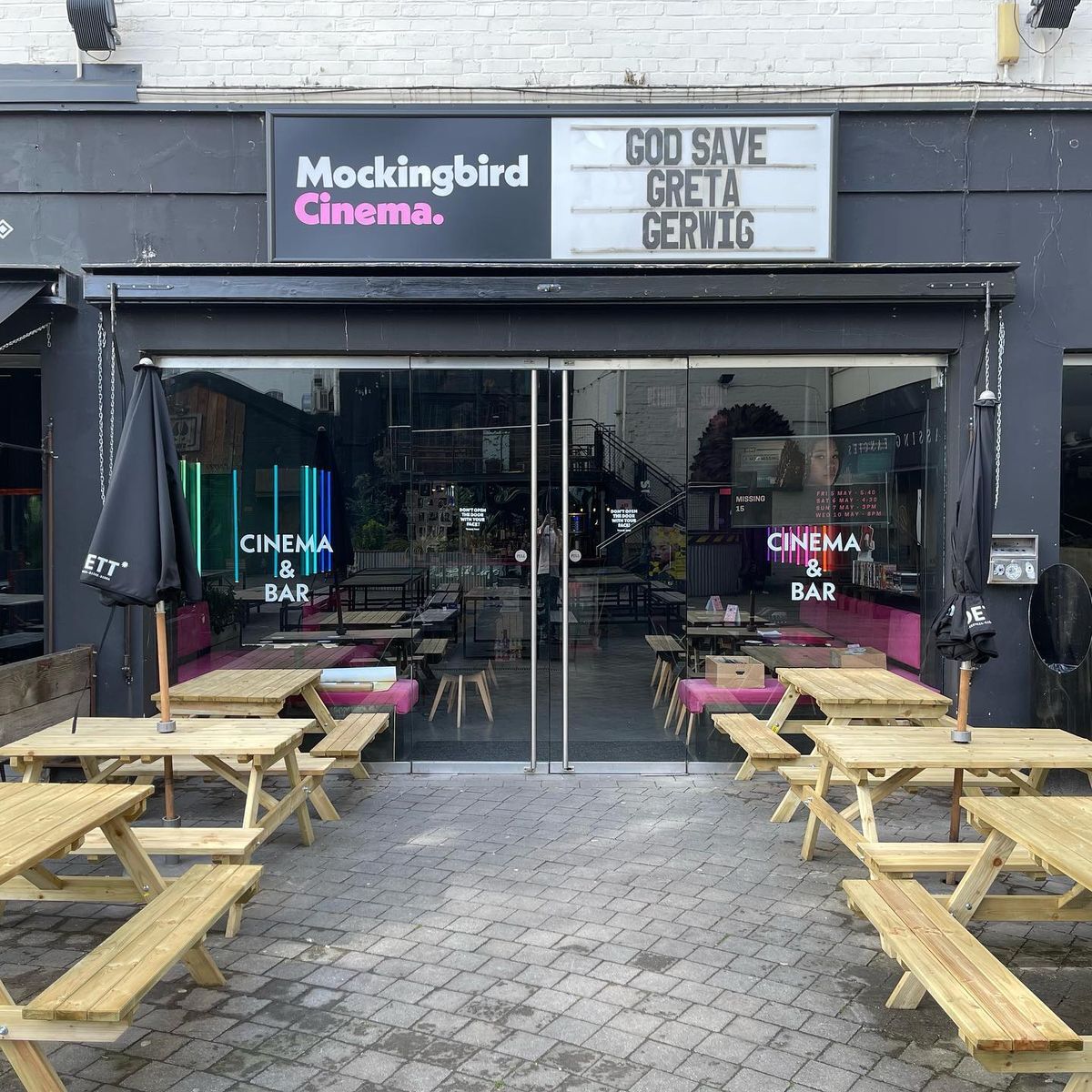
Catch a film at the Mockingbird Cinema
If you’re a film buff, the Mockingbird Cinema should be on your radar. It’s one of the best independent venues in Birmingham. While the cinema shows all of the big blockbusters you would expect, it also plays a selection of independent and niche flicks. As if that wasn’t enough, there are tons of film-themed events and special occasions to boot.

Take a picture with the famous bull
Situated just outside the Bullring shopping centre , you will find a six-tonne bronze bull statue. Unveiled back in 2003 , the contemporary statue has become an attractive tourist trap with people flocking to take a picture in its presence. Grab yourself a quick snap and then head into the shopping centre to treat yourself to something special.

Grab some brunch at Yorks
The Second City is home to a wealth of independent brunch spots. However, one of the best has to be Yorks . Located outside New Street Station, the first café opened its doors back in 2012. Since then, it has been recognised as one of the best brunch places in the country by The Sunday Times and The Observer . Try the smashed avocado on toast.

Sip a cocktail in the Grand Hotel
If you fancy sipping a high-class drink in a luxury location, look no further than the Madeleine Bar at the Grand Hotel. Complete with floor-length windows, stunning chandeliers, and plush furnishings, this place is the perfect photo opportunity. Treat yourself to a Kir Royale—you won’t regret it.
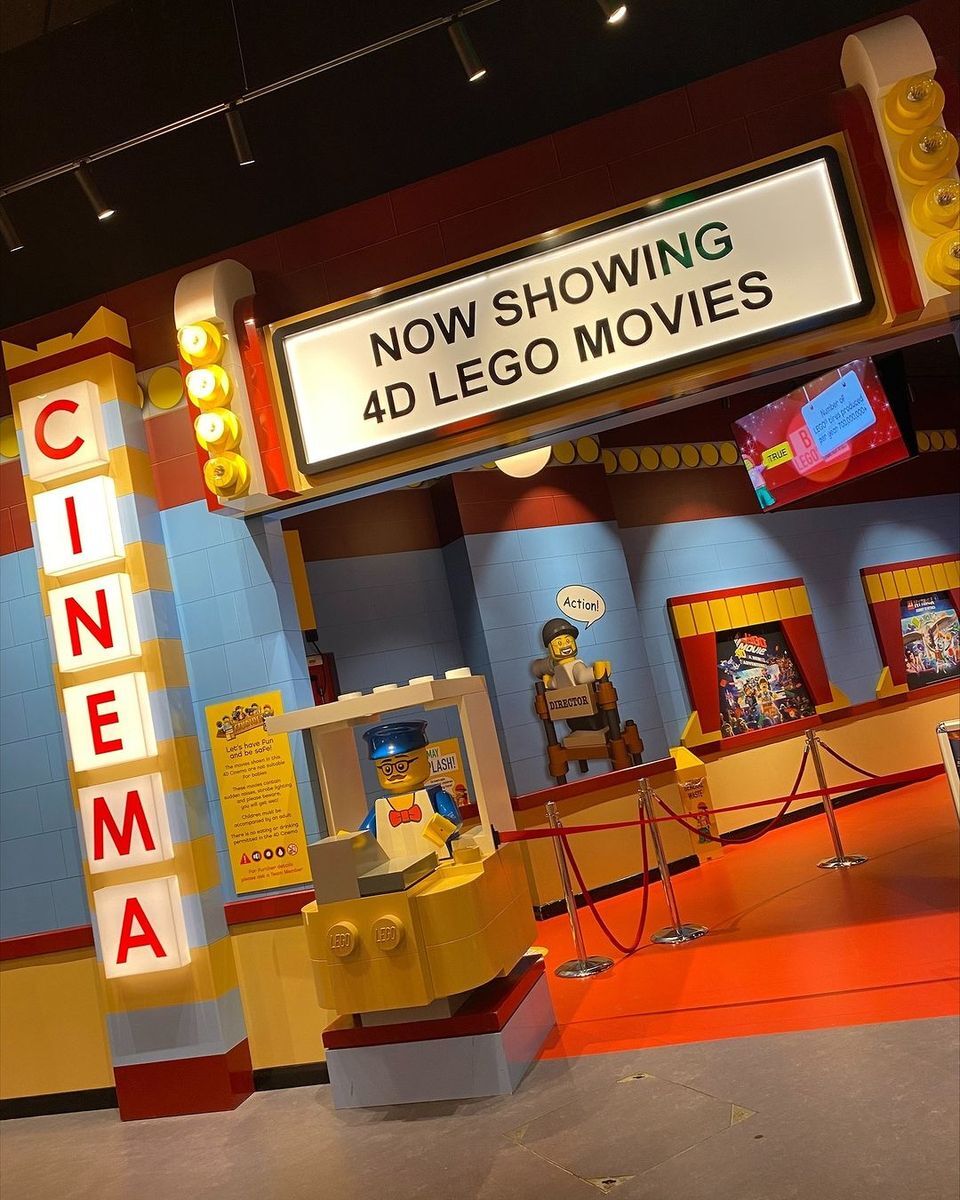
Visit the Legoland Discovery Centre
The Legoland Discovery Centre is the ideal day out for kids. Located on the canal, the indoor Lego play centre features a massive soft play area, a 4D cinema, and a Midlands-themed miniland. Tickets are cheaper if you book them in advance, so be sure to plan ahead.

See a show at the Birmingham Hippodrome
The Lion King , Charlie and the Chocolate Factory , Bluey’s Big Play , Hamilton , and Jack and the Beanstalk —those are just a handful of the big-name performances to show at the Birmingham Hippodrome . The theatre is also a registered independent charity.

Gaze at some art at the Ikon Gallery
The artist-led alternative space known as Ikon Gallery is a must-see for culture vultures. Since way back in 1964, this unique venue has played host to some of the most awe-inspiring contemporary art and installation pieces. The internationally-acclaimed venue is free to check out and it never disappoints.
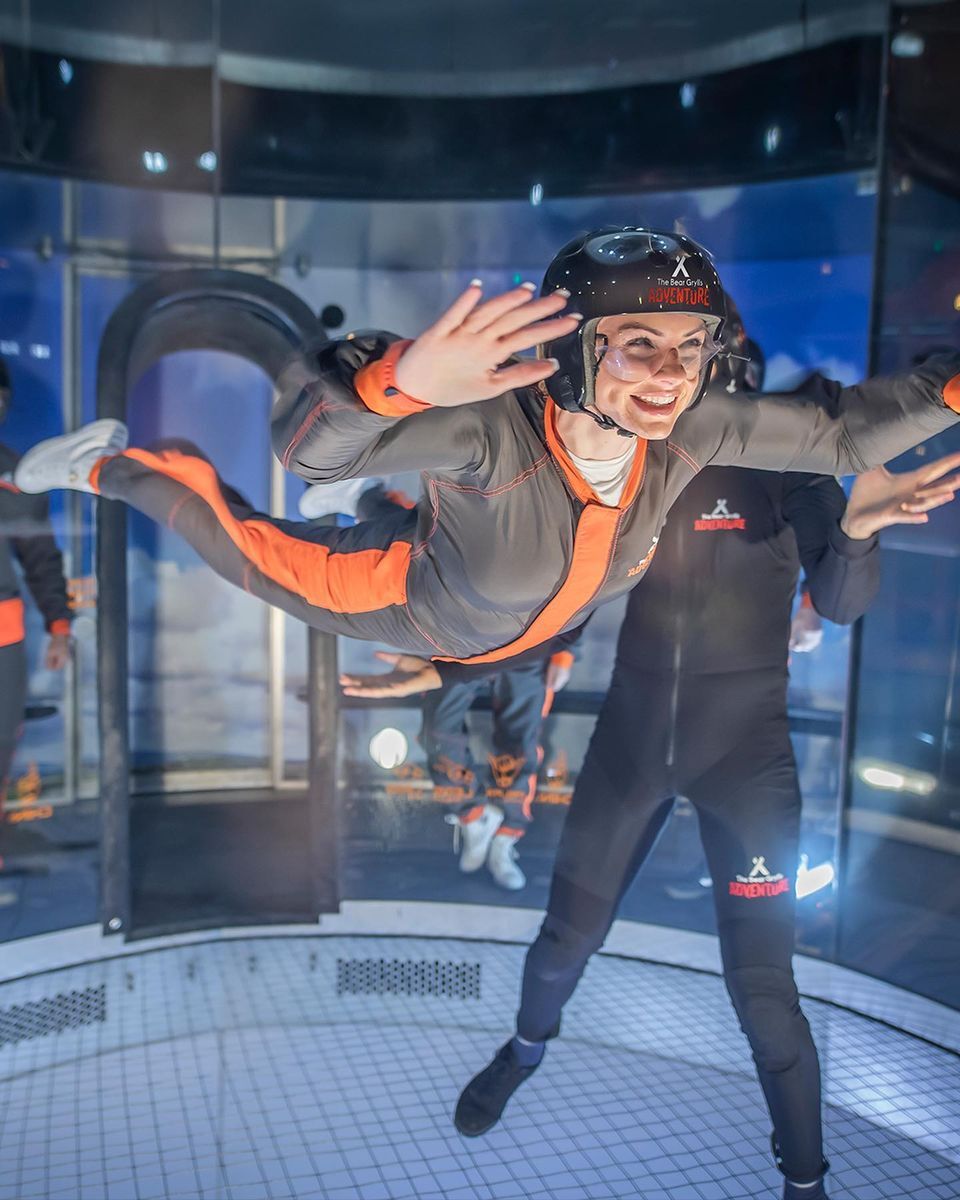
Experience the Bear Grylls Adventure
Feeling daring? If you’re up for the challenge, the Bear Grylls Adventure is an exhilarating experience in the heart of Birmingham. Located inside the National Exhibition Centre (NEC), the attraction includes indoor climbing walls, an axe-throwing range, and a shark dive. You will need to book ahead if you’re ready to give it a go.

Try “rock and roll” dining at The Wilderness
Situated inside a restored factory, The Wilderness is a unique concept restaurant from the brain of chef Alex Claridge. With this rock and roll dining experience in the Jewellery Quarter, you’re sure to sample a one-of-a-kind meal. You can expect an experimental tasting menu set against a soundtrack of rock, punk and heavy metal.

Watch the Birmingham Royal Ballet
Fancy seeing some of the world’s best ballet? The Birmingham Royal Ballet has got you covered. The company launched in the Second City back in 1990 and has been delighting audiences ever since. Guided by the genius director, Carlos Acosta, it hosts regular performances throughout the year.
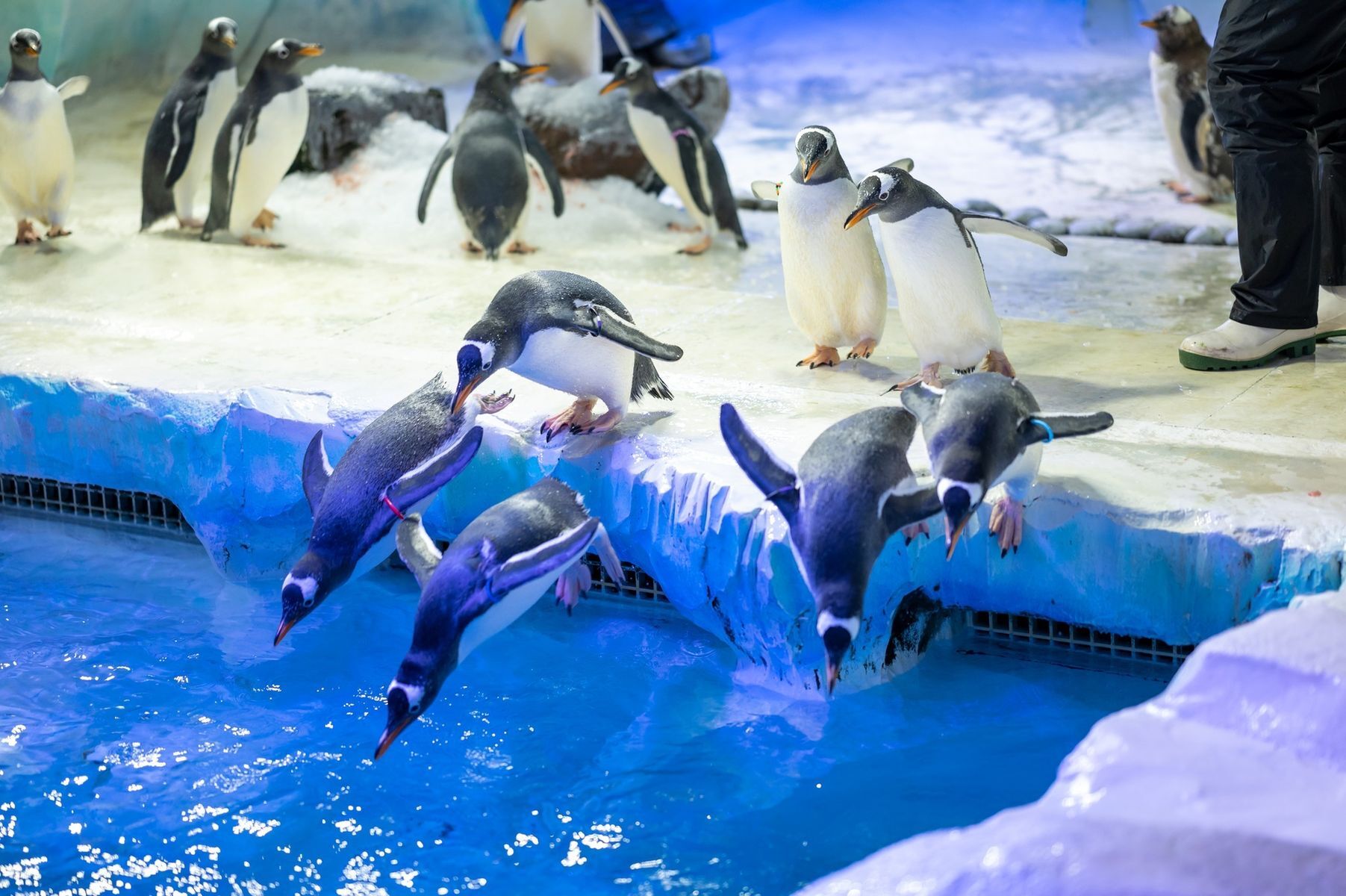
See some penguins at the Sea Life Centre
If you and your family want to take a trip into the depths of the ocean, the Sea Life Centre is the place to go. The huge family attraction has a selection of aquarian zones, including the infamous Ocean Tunnel and Penguin Ice Adventure featuring gentoo penguins. The centre is also home to the U.K.’s first and only sea otters.

Have afternoon tea at Cocoa by Ali
If you’re craving a sweet afternoon tea with a twist, Cocoa by Ali is the place to be. The independent patisserie offers a unique Mughal-inspired set meal. You can expect mini chaats, finger sandwiches, Indian desserts, plus tea, hot chocolate, and coffee.
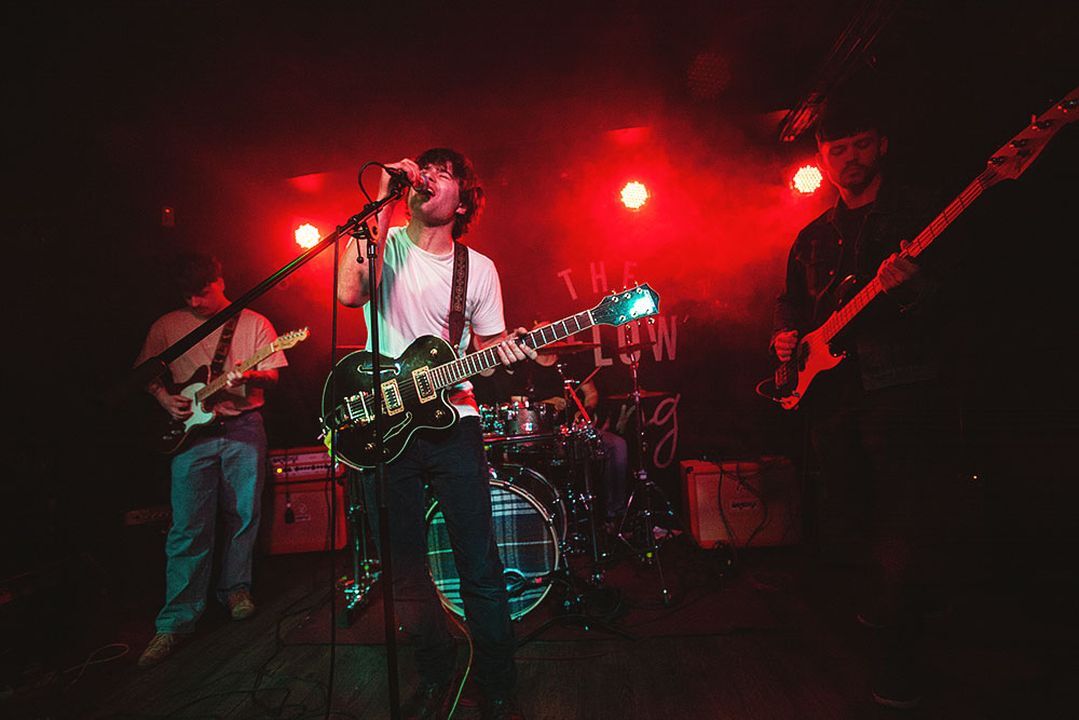
Catch a gig at The Sunflower Lounge
Bringing the “glamour and grunge of New York dive bars” to the city, The Sunflower Lounge is a true hidden gem. The independent venue includes an underground basement bar and plays host to local talent and big names. Since it opened in 2002, it has welcomed a variety of indie royalty, including Foals, Wolf Alice, Royal Blood, and Dua Lipa.

Play space-themed mini-golf at Mr Mulligans
Imagine playing a game of mini-golf… in space. That is the theme at Mr Mulligans . The adventure golf course consists of a whopping 36 holes, each with an “out of this world” theme. There’s also a fully-stocked bar and plenty of pool tables.
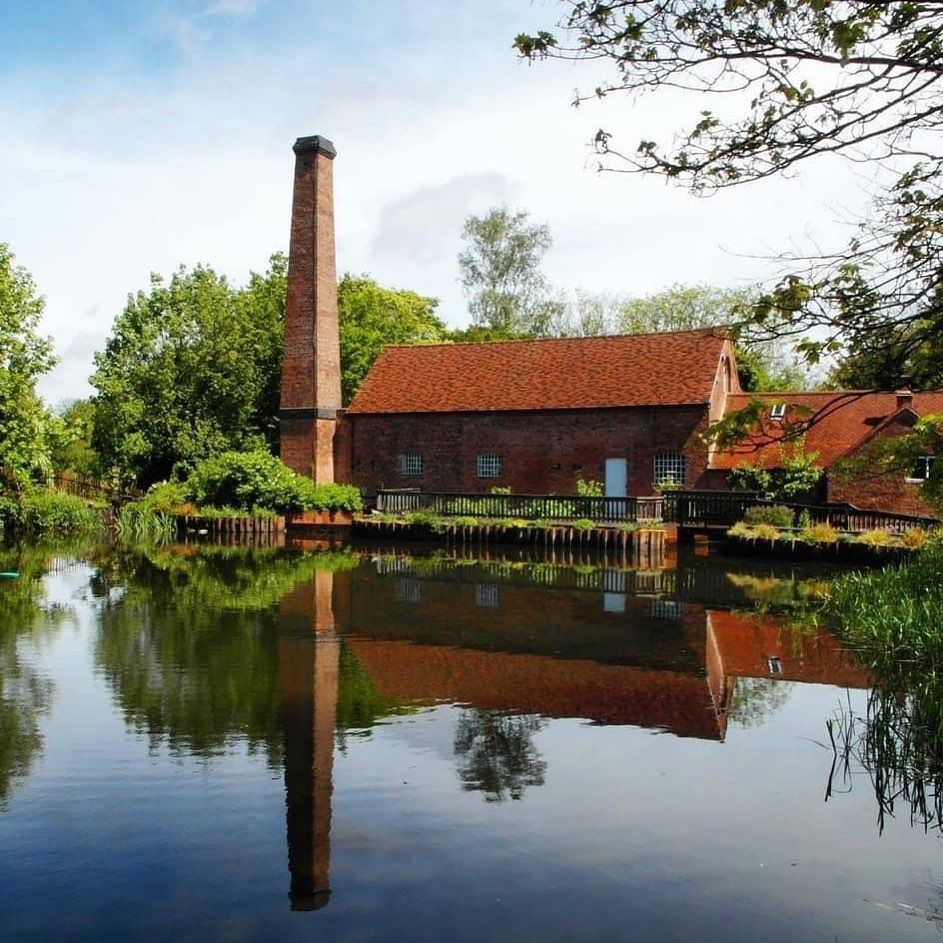
Take a tour of Middle-earth
Lord of the Rings fans will be thrilled to hear about this last one. Travel to Sarehole Mill on selected Sundays and you can experience a J.R.R. Tolkien-inspired tour . The legendary writer lived in the area as a child and may have taken inspiration from his surroundings. Book ahead for an hour-long hike and captivating talk.
More for You
Over-employed: Man who earned over S$300K/year via 2 remote jobs says it wasn’t worth it
Ukraine just destroyed a really expensive piece of Russian equipment
Our Editor Swears By This Houseplant for Her Dark Apartment
Things To Do After Beating Dragon's Dogma 2
The Lost Bee Gee
Restaurants Should Be Able to Rate Customers, Too
Can a virtual brick wall cure your slice? Golftec brings new technology to old-school learning
These 13 countries are not as rich as you think they are
20 Cordless Lamps That Are Equally as Pretty as They Are Practical
Post-retirement depression: recognizing the signs
The best PS5 SSDs
New Bandai Namco RPG Launching in August 2024
How to Build a Salad Table — and Why Everyone Should
How to use emulators to play retro video games on your phone
RAF stealth fighter jet's 290mph near miss with drone at 14,500ft
Uniqlo’s Zelda: Tears of the Kingdom is next video game collab
From riches to rags: 13 famous faces who died poor
Alzheimer’s disease: watch out for these alarming warning signs
29yo Singaporean finally hits S$100K savings, but “still doesn’t dare buy expensive stuff, not even to dine out in restaurant”
No Rest for the Wicked Dev Suggests Dark Souls Would Have Benefited from Early Access
Science | April 26, 2024
Ten Amazing Facts About Tornadoes, Explained
To prepare you for the movie “Twisters,” we’ve compiled some jaw-dropping details about the powerful phenomenon
:focal(800x602:801x603)/https://tf-cmsv2-smithsonianmag-media.s3.amazonaws.com/filer_public/33/dc/33dc6f79-65f4-47c2-b67f-8dd30d26e647/gettyimages-937849166_web.jpg)
Catherine Duncan
Staff Contributor
As looming thunderstorm clouds spit out baseball-sized hail and torrential rain, a narrow whirlwind of air stretches its way toward the ground, signaling the arrival of one of nature’s most violent phenomena: a tornado.
Also known as twisters, these violent cyclones can reach wind speeds of 300 miles per hour and blaze a path of destruction that can last from mere seconds to several hours . While most people flee or take shelter at the sight of these alarming conditions, others dive headfirst into them. Storm chasers, people who get dangerously close to extreme weather events, sometimes for scientific research, jump at the chance to pursue the ever-unpredictable tornado.
The 1996 disaster classic Twister follows a group of these daring storm chasers, a university professor and her team of students who rush toward an outbreak of severe twisters sweeping Oklahoma. Their goal: deploy a revolutionary weather alert device, aptly named “Dorothy,” within the heart of multiple tornado systems to track and possibly tame the forces of nature. After a series of disastrous attempts to deploy their invention within multiple cyclones, a final, massive tornado rips through the area. In the nick of time, the team successfully sets up their device in the twister’s center and collects crucial data.
The highly awaited sequel Twisters sees the continuation of this research nearly two decades later, with a new generation of storm chasers and technology. The story’s hesitant protagonist Kate Cooper, played by Daisy Edgar-Jones, joins forces with adrenaline junkie Tyler Owens, played by Glen Powell, as twin twisters ravage the plains of central Oklahoma. The pair races against a rival team and devastating weather conditions to conduct groundbreaking analysis. Though the film is fictionalized, its overarching circumstances—the treacherous nature of twisters and the difficulty of predicting their arrival—ring true.

In anticipation of the July 19 release of Twisters , we contacted three scientists to unravel some of the secrets wrapped within these catastrophic cyclones. Here are a few of the coolest finds we uncovered.
Supercell thunderstorms are responsible for creating tornadoes
/https://tf-cmsv2-smithsonianmag-media.s3.amazonaws.com/filer_public/05/8b/058bb8e8-210f-4339-9aa4-83fe134be1e4/supercell_thunderstorm_over_needmore_texas_may_4_2019_web.jpg)
Tornadoes are born within supercell thunderstorms , an anvil-shaped cloud with a rotating updraft called a mesocyclone. As an extremely rare weather event, only one in thousands of storms yields a supercell thunderstorm. One in five or six supercells , though, produces a tornado.
“To get a thunderstorm, we have to have an unstable atmosphere, and generally, for a tornado, we need the thunderstorms to rotate,” says William Gallus, a meteorologist at Iowa State University. “That happens if we have wind shear, which means that the wind speed and wind directions are changing as you go up.”
Warm air rises, cold air falls, rough winds whip within the storm system, and an updraft occurs. If this rotating updraft descends toward the ground, lowering itself below the storm, a tornado can emerge from the chaos.
The tornado forms as the mesocyclone accelerates from the bottom up—and the feature intensifies its rotation, in a way similar to an ice skater who pulls her arms into her body to spin faster, says Jana Houser , a supercell thunderstorm and tornado radar analysis expert at Ohio State University.
The strongest winds of the tornado are closest to the ground
/https://tf-cmsv2-smithsonianmag-media.s3.amazonaws.com/filer_public/b3/8d/b38dc04c-527b-4586-a357-66bfe4af2ca4/gettyimages-535057762_web.jpg)
In the atmosphere, the winds get stronger the higher up you go. Tornadoes reverse these conditions, with their strongest winds appearing at the lowest points. This powerful rotation starts at the ground and then floats its way upward to converge into the visible funnel cloud.
“This process happens very quickly,” says Houser, who, alongside her team and National Geographic cameras, captured the very tornadoes set to appear as background footage in the upcoming film Twisters . “In under a minute, you can go from a weak rotation to, all of a sudden, a full tornado.”
According to Gallus, computer models of tornadoes have shown that the strongest winds could lie just 15 feet above the ground—their most brutal region lining up with the height of homes and buildings.
“That’s pretty unfortunate for all of us who live on Earth, because that means that in a tornado, unlike any other weather system, the very worst winds are impacting buildings, people and trees down near the ground,” says Gallus.
Tornadoes can form anywhere, anytime
/https://tf-cmsv2-smithsonianmag-media.s3.amazonaws.com/filer_public/1f/f8/1ff86ef4-3453-48d8-9df0-a9425de1a083/tornadoalley_web.jpg)
Most tornadoes are formed in the Great Plains of the United States, in an area deemed “Tornado Alley.” Flat terrain combined with unstable conditions—warm, moist air from the Gulf of Mexico collides with dry winds drifting in from the Rocky Mountains—provides the ideal breeding ground for twisters to spawn. But tornadoes can happen almost anywhere. They have been reported in all 50 states and all continents except Antarctica, and they’ve struck major urban areas , such as Dallas, Miami and Minneapolis.
But cyclones don’t follow any sort of pattern or path, contrary to popular misconceptions. “It doesn’t matter if you’re in a downtown part of the city, in a hilly area or even a mountainous area,” says Houser. She adds that some terrain may reduce or increase the probability of tornadoes, but complete protection from the twisters can’t be guaranteed.
Similarly, while peak tornado season ranges from May to July depending on location, tornadoes can hit at any month and any time, both day and night.
Tornadoes have uniquely powerful upward motion

In most weather phenomena, the most aggressive winds blow horizontally, directing their potency outward toward the north, south, east and west, rather than upward and downward. Tornadoes defy these expectations. Things resting in the tornado’s path—the roofs of homes, cars, animals—can be suddenly whisked straight up and into the whirl of debris, victim to the sheer power of the tornado’s upward winds. According to Gallus, the strength of a tornado’s upward motion is comparable to the speed at which it moves along terrain, with 100- or 200-mile-an-hour winds shooting up toward the sky.
“That’s why the damage that a tornado does to buildings is very different than if you have the exact same mile-per-hour wind from just a thunderstorm,” says Gallus. “It’s also why you hear these stories of people or things getting picked up and seeming to levitate or fly up into the air—it’s because the tornado has such strong upward motion.”
The air pressure inside a tornado can cause just as much damage as the wind itself
/https://tf-cmsv2-smithsonianmag-media.s3.amazonaws.com/filer_public/76/8a/768a0468-e614-45f2-bfce-4fd9c9252dd6/gettyimages-545869429_web.jpg)
When visiting the site of a Missouri hospital ravaged by a tornado, Gallus recalls, a nurse he spoke with had to tilt her head a certain direction to hear. Due to the intense air pressure change caused by the tornado, her eardrum ruptured. The air pressure in the middle of a tornado can drop suddenly and strongly, as if you were riding on a plane flying up into the air extremely fast. Many people near tornadoes have reported their ears “popping” during the phenomenon. “That change in pressure is almost like nature’s way of giving you a very last warning by having your head experience this strange rapid adjustment and popping going on in your head,” says Gallus.
The change in air pressure can also create an additional force on buildings that, along with the strong winds, can intensify and quicken their destruction.
Terrain can change a tornado’s behavior
/https://tf-cmsv2-smithsonianmag-media.s3.amazonaws.com/filer_public/c0/15/c0152ae6-7858-4517-983b-82084c5eb34c/gettyimages-1321594650_web.jpg)
Researchers have a difficult time predicting when a tornado will form—and where it will go. Changing winds and differing terrain can make it hard for meteorologists chart the exact path of a twister.
“Tornadoes are incredibly susceptible to very small nuances in the land cover, in the environment, in the storm itself, and it’s very difficult, I would say impossible, to account for every single factor that could possibly go into changing what a tornado is doing,” says Houser. “They defy generalization.”
While predicating a storm is hard, meteorologists say that some features of terrain may enhance the conditions needed for a twister to form. For example, sprawling urban areas can affect thunderstorms, which, in turn, can affect tornadoes. Since cities have more precipitation on their downwind side because of the way water systems interact with urban structures, they produce more rain and more hail, and can be warmer, helping set up an environment that’s more likely for a tornado to form.
“Sometimes urban areas are warmer than rural areas due to the urban heat island. What happens if a tornado goes over a warmer city?” says Jason Naylor, an atmospheric scientist at the University of Louisville. “It looks like the urban heat island could potentially enhance the low-level updrafts in the storm and may help instigate tornadoes in a theoretical way.”
Tornadoes usually rotate counterclockwise, but they can switch directions
/https://tf-cmsv2-smithsonianmag-media.s3.amazonaws.com/filer_public/79/31/7931efbe-e744-46fb-a37a-8eb4687b8e5e/pl23_nssl0254_web.jpg)
In the Northern Hemisphere, about 98 percent of tornadoes spin counterclockwise , which meteorologists label as cyclonical. However, a clockwise-swirling tornado is not out of the question—just much less common.
The counterclockwise motion of most tornadoes has long been attributed to the Coriolis effect, the force caused by the Earth’s rotation. But, according to Houser, this is merely a myth. Tornadoes exist on “too small a space scale and time scale for the Coriolis force to affect it,” she says. Rather, the counterclockwise motion results from how vertical winds change in speed and height within the storm.
Meteorologists call clockwise tornadoes anti-cyclonic. “You get an anti-cyclonic tornado when you have a very strong surge of air within the storm,” says Houser.
Storms can produce more than one tornado at a time
/https://tf-cmsv2-smithsonianmag-media.s3.amazonaws.com/filer_public/18/b1/18b12ac6-1b65-4098-9350-f334ce1dea3b/pl23_con00002_web.jpg)
Twisters sees two groups of storm chasers unite as two different tornadoes converge over a small town in central Ohio. This event isn’t just movie magic: The same storm system can really eject multiple tornadoes at once. As winds change, the storm itself can begin to form a new tornado in a slightly different location from the original tornado—with the fledgling rotating updraft gaining power as the other twister slowly dies down. Or, if the original tornado is particularly violent , the level of agitation can churn out smaller whirlwinds that extend toward the ground.
And Houser says that other freak circumstances, such as extremely strong rotation along the edges of a storm, can also produce multiple tornadoes. A clockwise and counterclockwise tornado can even appear in the same storm system.
Tornadoes themselves can’t be forecast—only the conditions that produce them can
/https://tf-cmsv2-smithsonianmag-media.s3.amazonaws.com/filer_public/ea/d5/ead5205b-33f5-4305-b238-8714480a6bc4/may_4_0012_r_web.jpg)
The 1996 film Twister and its 2024 companion Twisters center around the same key issue: the frustrating impossibility of forecasting tornadoes. “We don’t even really try to forecast exactly when and where a tornado would hit, because we simply cannot do that ahead of time,” says Gallus.
Warnings for tornadoes are only issued when a twister is already forming and has been sighted—or indicated by weather radar—and the alerts cover an area that may be impacted.
Scientists are able to predict, however, the conditions favorable for supporting thunderstorms that spin and would be more likely to produce tornadoes. Up to a couple of hours ahead of time, when increased weather severity is detected, local television and radio news stations issue a tornado watch.
But a tornado’s intensity can’t be determined until after its wake. Scientists determine a tornado’s level of destruction by using the Enhanced Fujita Scale . The scale assesses the damage a tornado does to trees, buildings and homes. Scientists then use that information to calculate its probable wind speed. The rating system ranges from F0, the weakest cyclone, to F5, a vicious, deadly tornado, which a character in Twister deems the “finger of God.”
Climate change is affecting tornadoes

Tornado Alley is moving eastward . In the past decade, twisters have been inching their way into the Midwest and hitting states such as Missouri in record-breaking severity . Meteorologists attribute this shift to climate change.
“Now, with climate change, places that were normally too cold in the winter are finding themselves with days warm enough that you’re starting to see tornadoes at times of year, parts of the country, where they didn’t used to happen,” says Gallus.
This is caused by climate change’s impact on weather. Gallus says that climate change is making conditions warmer and more humid near the ground, which is increasing the level of instability that leads to stronger, tornado-producing storms.
According to Gallus, we may see more days that meteorologists call tornado outbreak days, where five to ten tornadoes crop up. But climate change could also decrease the frequency of days where one or two tornadoes crop up. Essentially, the number of tornadoes could be concentrated on fewer days.
“We can’t say that tornadoes are going to become stronger. We can’t say that we’re going to have less,” says Gallus. “But what we do know is, because of how the temperature is changing, we are going to start finding them in weird times of the year and places where it always used to be too cold to have a tornado.”
Get the latest Science stories in your inbox.
/https://tf-cmsv2-smithsonianmag-media.s3.amazonaws.com/accounts/headshot/Catherine_Duncan_headshot.png)
Catherine Duncan | READ MORE
Catherine Duncan is an intern with Smithsonian magazine.
Politics latest: MSP who could decide Humza Yousaf's fate appears to reveal price for her support
Scotland's first minister says he will fight a vote in his leadership and is "very confident" of winning. Listen to this week's episode of the Electoral Dysfunction podcast while you scroll through the latest updates.
Friday 26 April 2024 18:00, UK
- Yousaf tells Sky News he'll 'fight' vote of no-confidence and is optimistic of winning
- MSP who could decide his fate seems to have named price for her support
- Connor Gillies: First minister must reset relations with very people he's burned bridges with
- Explained: How did we get here - and what happens next?
- Coming up on Sunday: PM sits down with Trevor Phillips
- Tap here to follow Electoral Dysfunction
- Sam Coates explains why the local elections matter
- Live reporting by Charlotte Chelsom-Pill
Rishi Sunak sits down this Sunday with Trevor Phillips for a wide-ranging interview ahead of the local elections.
With the Rwanda bill becoming law this week and the PM announcing a commitment to increase defence spending, there's been plenty to talk about.
You can watch it in full from 8.30am on Sunday .
Trevor will also be joined by Labour's shadow health secretary Wes Streeting .
Embattled Humza Yousaf has told Sky News he will not resign as Scotland's first minister.
Pressure has been building on the SNP leader after he tore up the power-sharing deal with the Scottish Greens - prompting a no-confidence motion in his leadership and a threatened knife-edge vote.
However, Mr Yousaf, on a visit to Dundee that was arranged at short notice after he pulled out of a speech in Glasgow, insisted he was getting on with the job and accused the opposition of "playing games".
He said he would be writing to the leaders of all Scottish political parties to seek talks on making a minority government work.
He told Sky's Scotland correspondent Connor Gillies : "I intend absolutely to fight that vote of no confidence, I've got every intention of winning that vote of no confidence.
"And let me say to the opposition for minority government to work in the interest of the people of Scotland also requires the opposition to act in good faith."
Humza Yousaf's future as first minister is hanging in the balance ahead of a motion of no confidence next week.
Now, as leader of a minority government, his fate may be hanging on just one vote - that of a former SNP leadership rival.
We take a look at how:
The numbers
In the Scottish parliament, the SNP has 63 seats out of 129 , two short of an outright majority;
The Conservatives have 31;
Labour has 22;
The Greens have seven;
The Liberal Democrats have four;
The Alba Party has one ;
There is also one presiding officer Alison Johnstone, who is both an MSP and Scotland's equivalent of the Commons speaker.
How the numbers are expected to fall
The motion of no confidence was brought by the Scottish Conservatives.
The Greens, Labour and the Lib Dems have all said they are backing the motion.
That would translate into 64 votes against the first minister versus 63 SNP votes.
So the one Alba vote is expected to be key.
How it may all come down to one ... Ash Regan
Once an SNP leadership rival to Mr Yousaf, Ash Regan defected to Alex Salmond's Alba Party last October.
If she backs Mr Yousaf then that would mean both sides have 64 votes.
Ms Johnstone would then be expected to vote in favour of the status quo, so the first minister would survive.
But if Ms Regan votes against Mr Yousaf, then the opposition parties will have 65 votes against the SNP's 63, and the first minister would lose.
He wouldn't be compelled to resign in this situation, but he'd be under huge pressure to step aside.
More to come
And remember, Scottish Labour have lodged a separate motion of no confidence in the Scottish government.
Alba have said it won't back that motion.
Scotland's First Minister Humza Yousaf is battling to save his job as he faces a knife-edge no-confidence vote.
The SNP leader triggered a crisis at Holyrood after he dramatically brought the power-sharing deal with the Scottish Greens to an end.
The backlash has plunged Mr Yousaf's future into doubt, although party colleagues insist he will not resign.
How did we get here?
The Bute House Agreement - signed back in 2021 and named after the first minister's official residence in Edinburgh - brought the Green Party into government for the first time anywhere in the UK.
It gave the SNP a majority at Holyrood when the votes of its MSPs were combined with those of the seven Green members, and also made Green co-leaders Patrick Harvie and Lorna Slater junior ministers.
Without it, the SNP would need to have operated as a minority administration at Holyrood.
What caused the relationship to sour?
There had been mounting tensions between the largest party at Holyrood and their junior partners in government.
The Greens were angered at the SNP-led administration's recent decision to ditch a key climate change target.
That, combined with the decision to pause the prescription of new puberty blockers to under-18s at at Scotland's only gender clinic, resulted in the Greens announcing they would have a vote on the future of the power-sharing deal.
Read more here:
The 2 May local elections will see more than 2,600 seats at stake across 107 English councils.
Labour's Sadiq Khan and Andy Burnham are among the 10 mayors up for re-election.
Those in Blackpool South will also be voting for their next MP after ex-Tory Scott Benton broke Commons lobbying rules, triggering a by-election.
With the Conservatives lagging behind Labour in the polls, the outcome will offer some insight on how voters in England and Wales feel ahead of the general election.
On the Sky News Daily, Niall Paterson is joined by deputy political editor Sam Coates to discuss why the elections are so important for the prime minister's future and where the key political backgrounds are.
By Daniel Dunford , senior data journalist
There might not be a general election just yet, but there are important votes that will define how the areas around us are run for the next four years.
See what's happening where you are here:
With the local elections less than a week away, deputy political editor Sam Coates explains why they matter and what they might tell us about the upcoming general election.
Ash Regan - the MSP who could decide the future of Humza Yousaf - has appeared to name her price for her support in next week's no-confidence vote.
She has said, in a letter to Alba Party members, that investment in the Grangemouth refinery will be a key condition of her backing the first minister.
The refinery is currently due to shut as early as next year and move to being an import and export terminal.
Alba has launched a a campaign to sustain jobs at the refinery.
"A sign of good faith would be a significant government investment, reinforcing the campaign to save the Grangemouth refinery from closure," she says in her letter.
"I am requesting the undertaking to produce such an initiative in the early course.
"I am hopeful that the first minister will commit to such an initiative in the near future as a sign of our shared dedication to Scotland's welfare."
Ms Regan was once part of the SNP and ran in the contest to succeed Nicola Sturgeon as leader last year, the contest Mr Yousaf won.
She defected to Alex Salmond's Alba Party in October.
The battle for a town that no one there wants.
Sky News is reporting from Grimsby in the run-up to the general election as one of its Target Towns - a key constituency prized by both Conservatives and Labour - Great Grimsby and Cleethorpes.
But it turns out that Grimsby doesn't really want them.
It hasn't always been a town doused in apathy.
In 2016, 70% of people here voted to leave the EU - one of the highest results in the country - and in the 2019 election, the constituency turned Tory for the first time since the Second World War.
But five years on, polling by Sky News found that since then, the number of people saying they "almost never" trust the British government to place the needs of the nation above the interests of their own party has nearly doubled - from 26% to 49%.
It's a stark but bleak view. Voters described both leaders as uninspiring and uninteresting.
When asked what they make of the current prime minister, words like "weak" and "performative" were used.
Voters couldn't make their minds up about the Labour leader, saying they were unsure about him or his policies.
The lack of a clear dividing line between the two parties could be a problem in the general election, especially as both parties have been trying to show a bit more leg this week ahead of a fully-fledged election campaign.
Labour has shown a hint of more radical policies, with their announcement on aiming to nationalise railways within five years.
But have they waited a bit too long to impress the people of Grimsby?
The Conservatives ratified their Rwanda policy into law, but voters here weren't hugely enthused by that either, with one member of the audience tonight proclaiming they care much more about housing and the environment.
They asked - why is the centre of political debate about Rwanda and a policy we don't really care about?
Apathy might override this election.
By Jennifer Scott , political reporter
Voters in Grimsby - one of Sky News's election Target Towns - have been offering their views on politics, politicians and "broken promises".
The electoral battle in Grimsby and Cleethorpes, the Target Towns , will be fierce. Labour will need an 11.7 point swing to win this newly-merged constituency back from the Conservatives.
In 2019, residents in Grimsby voted Tory for the first time since the end of the Second World War. The old Cleethorpes constituency was always more of a bellwether, having voted Conservative since 2010.
However, it has shed some of its rural, Conservative-voting residents in the merger.
Speaking on the Politics Hub With Sophy Ridge , small business owner Shannon said she might not vote in the next general election later this year as she "just can't trust anything anybody says".
She said she has felt this way since Brexit - something Grimsby was overwhelmingly in support of - because "we were promised 'x' and 'y' and it hasn't happened, so I'm just totally disengaged from it".
Asked whether local MPs on the panel - Conservative Lia Nici and Labour's Melanie Onn - could change her mind, Shannon said "possibly", but reiterated how let down local people feel.
"We're promised a lot, but it's never delivered," she said. "Talk of things happening... and then it doesn't happen and people are just fed up... have been told this is what we're going to get, but it doesn't actually happen. And that's why people have just lost faith."
Be the first to get Breaking News
Install the Sky News app for free


IMAGES
VIDEO
COMMENTS
Un viaje único en la vida. Space travel would be an out-of-this-world opportunity. So far, only about 600 humans have visited space. You'd join a small club of people who've done something truly extraordinary. It would also be fun. Gravity—the natural force keeping you on the ground—mostly disappears in space.
13 Things Tourists Should Know Before Traveling to Space, According to Astronauts. We asked the pros for their best tips on handling a first trip to space.
An American real estate investor, a Canadian investor, a former Israeli Air Force pilot, and an ex-Space Shuttle pilot will launch on an incredible orbital mission in its Crew Dragon spacecraft ...
American investment management billionaire Dennis Tito became the first to self-fund a trip in 2001 with his eight-day stay on the International Space Station, and six others came after him.
Artemis I is an important step in NASA's long-term goals for space exploration, paving the way for us to land the first woman and the first person of color on the Moon, explore more of the lunar surface than ever before — and prepare to travel on to Mars. This handy travel guide is designed to help everyone from space travel rookies to ...
Total run time: between two and three hours in flight, plus two-and-a-half days of training, with a price tag of $250,000. Virgin Galactic has been conducting test flights since 2010, but progress has been a bit slow—and deadly. In 2014, a test pilot was killed after a SpaceShipTwo vehicle broke apart during a flight, primarily due to pilot ...
To prepare for the microgravity environment of space, astronauts also participate in simulations of weightlessness, including parabolic flights and training in the Neutral Buoyancy Lab, a large swimming pool where astronauts practice conducting spacewalks and learn to perform tasks in their pressurized spacesuits.
But commercial space tourism is different to state-sponsored space programs, and will need the highest possible safety standards. Commercial space travel will also require a system of responsibility and liability, for cases in which a space tourist suffers injury, loss or damage. Space tourists (or their families) can't claim for compensation ...
Sept. 28, 2021. There's a new space race! This time it's not a race to the moon, but to see who will dominate a future space tourism industry. It's a competition not between nations (as it ...
For a trip on Virgin Galactic's SpaceShipTwo and Blue Origin's New Shepard, seats typically cost $250,000 to $500,000. "Those are suborbital transportation systems. They are about a 15-minute ride ...
2021 has been a busy year for private space tourism: overall, more than 15 civilians took a trip to space during this year. In this article, you will learn more about the space tourism industry, its history, and the companies that are most likely to make you a space tourist. Contents. What is space tourism? Brief history of space tourism
Sometimes you need to take a break and escape everyday life, and there's no better escape than placing a pin in the infinite interstellar map and taking a trip to outer space.
In the meantime, they've inked a deal to send a crew of private citizens to the ISS aboard SpaceX's Crew Dragon capsule in October 2021. Axiom's initial crewed mission, dubbed Ax1, should ...
Photo courtesy of Flickr user oneaustin. Space Renaissance International has published a "manifesto" outlining the arguments for why we should travel beyond the gravity and atmosphere of Earth ...
No word on how much it cost them. For $55 million, Axiom Space will send astronauts via a SpaceX rocket to the International Space Station, a laboratory that circles Earth once every 90 minutes ...
Unfortunately, you still can't board a space trip here, but it's a worthwhile place to visit, if only to get a tantalising glimpse of a possible future. Kennedy Space Center, USA. Found in Florida, Kennedy Space Center is the main launch pad for NASA's operations, and is where Apollo and Space shuttle launches took place. It's a massive ...
Have you ever dreamed of traveling in space?For many kids, gazing at the stars leads to daydreams about what it would be like to be an astronaut.Would you like to travel on a spaceship? Just think about how awesome it would be to set foot on the moon or another planet!. Of course, becoming an astronaut isn't easy. There aren't many astronauts in the world, so you have to be very skilled in a ...
Tampons. Sometimes, in male-dominated industries like space, men aren't really sure how women will cope with their menstrual cycles. Turns out it's pretty straight forward, and Earthly tampons ...
An imaginary starship trip beyond the solar system to the edge of the Milky Way offers new perspectives on the wonders of space by Brian Clegg Sat 4 Nov 2023 10.00 EDT
Here's how you can - BBC Sky at Night Magazine. Have you ever wanted to travel into space? It's theoretically possible. Here are the various options, and how much it will cost you to go into space.
The price of a ticket stands at $250,000, with registration open for anyone who has that kind of extra cash on hand. On June 1, Virgin successfully tested SpaceShipTwo Unity. The six-passenger ...
2. Experience Space on the Vomit Comet. For those of you willing to compromise on an actual space experience, zero gravity could be an option that suits you and your pocket. While its nickname may not sound appealing, the vomit comet is merely a reduced-gravity aircraft used in NASA training programmes. These crafts do not actually go to space ...
The 24th sample taken by the six-wheeled scientist offers new clues about Jezero Crater and the lake it may have once held. Analysis by instruments aboard NASA's Perseverance Mars rover indicate that the latest rock core taken by the rover was awash in water for an extended period of time in the distant past, perhaps […]
Light-year is the distance light travels in one year. Light zips through interstellar space at 186,000 miles (300,000 kilometers) per second and 5.88 trillion miles (9.46 trillion kilometers) per year. We use light-time to measure the vast distances of space. It's the distance that light travels in a specific period of time. Also: LIGHT IS […]
At $164,000 per seat, a trip with HALO Space will cost about a third of the price of a Virgin Galactic flight and won't require any advanced medical certifications. "The take-off will be like ...
Chandana compares SpaceX's ridesharing missions as "a train to go to space" and Skyroot's operations as "cabs to get into space, where we take satellites to their customized locations."
Debris can travel at 18,000 mph, according to NASA.That's 10 times faster than the speed of a bullet, so even a tiny paint chip can rupture a spacesuit or damage delicate solar arrays and ...
If you're planning a trip to the busy and bustling centre, we've got you covered. In the following guide, we take a look at some of the must-see attractions the city has to offer.
Tornadoes exist on "too small a space scale and time scale for the Coriolis force to affect it," she says. Rather, the counterclockwise motion results from how vertical winds change in speed ...
Spreaker This content is provided by Spreaker, which may be using cookies and other technologies.To show you this content, we need your permission to use cookies. You can use the buttons below to ...